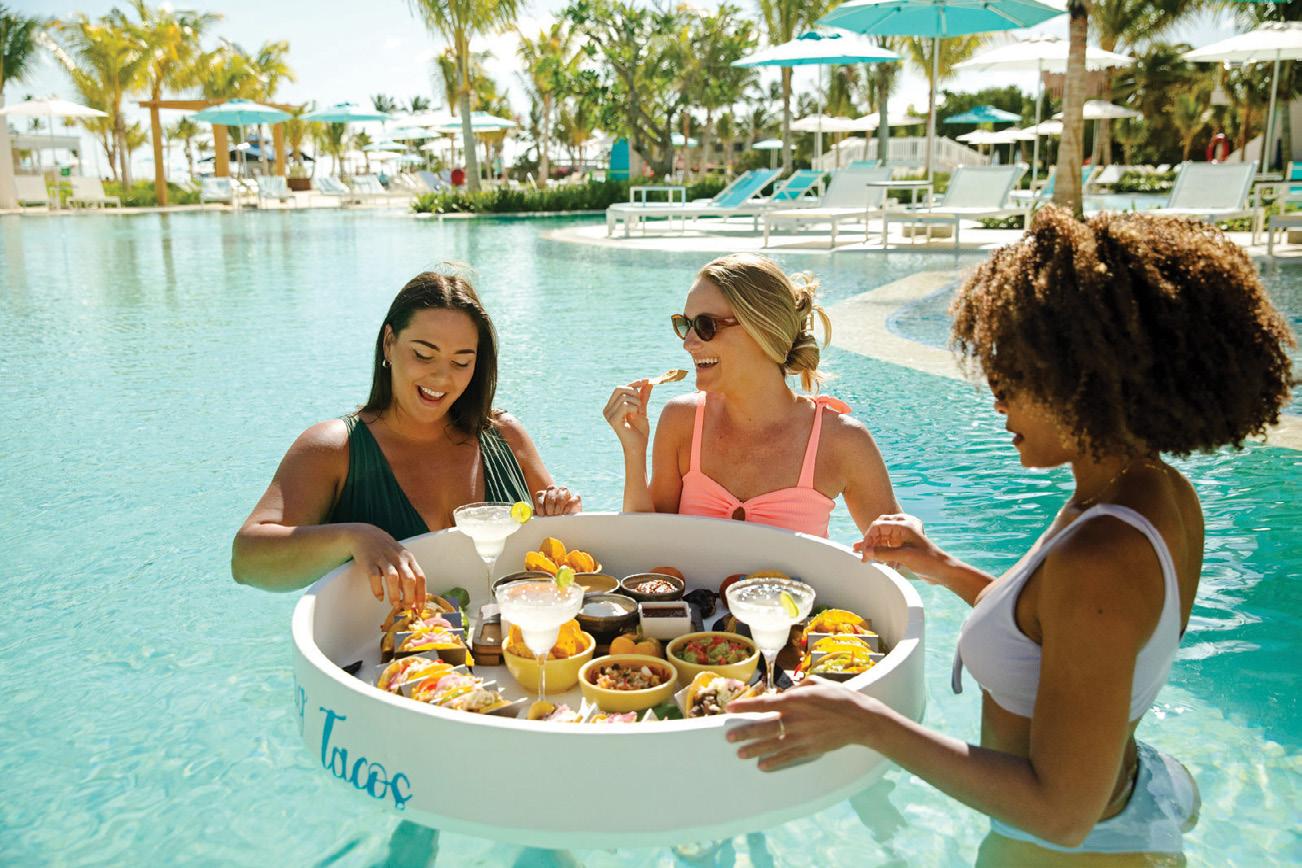MAGAZINE
ANNUAL INNOVATION ISSUE



When it comes to cancer care, you have choices. Making an informed choice can make all the difference in your journey. At Baptist Health’s Miami Cancer Institute we offer unmatched cancer care to help you get better.

Don’t delay care. Better cancer care is here.
MiamiCancerInstitute.com
At Baptist Health’s Miami Cancer Institute, our multidisciplinary approach to care means you have a highly skilled team from many areas of expertise focused on your treatment plan. Your team’s clinical proficiency and deep understanding of your cancer and your individual needs, combined with advanced cancer-fighting technology and innovative research, ensures Miami Cancer Institute will provide you with a personalized plan of therapy that is the best possible treatment for your cancer. Our proximity to Coral Gables gives you convenient access to this exemplary care that others travel from around the globe to receive.


Baptist Health’s Miami Cancer Institute is dedicated to finding better ways to treat cancer, with a full range of clinical trials in both medical and radiation oncology. Our physicians and surgeons offer the most advanced surgical and nonsurgical treatment options for common, rare and complex cancers. Some of these options are stem cell transplantation, minimally invasive and robotic surgery techniques and radiation oncology modalities. We are often among the first in the country to offer new technologies to our patients. Cancer-fighting technology at Baptist Health’s Miami Cancer Institute includes:
Three-room, pencil-beam scanning proton therapy the latest and most precise radiation oncology modality delivery system
CyberKnife® for robotic, image-guided radiation oncology modality delivery almost anywhere in the body
ViewRay MRIdian Linac® for more accurate delivery of radiation for certain tumors

PET/MRI scans for highly detailed imagery
Vectra 3D whole-body photo imaging for skin cancer; we have one of only a few of these devices in the world
Baptist Health’s Miami Cancer Institute offers many unique clinics and programs that focus on particular aspects of certain cancers, cancer prevention and health concerns connected to your cancer diagnosis.

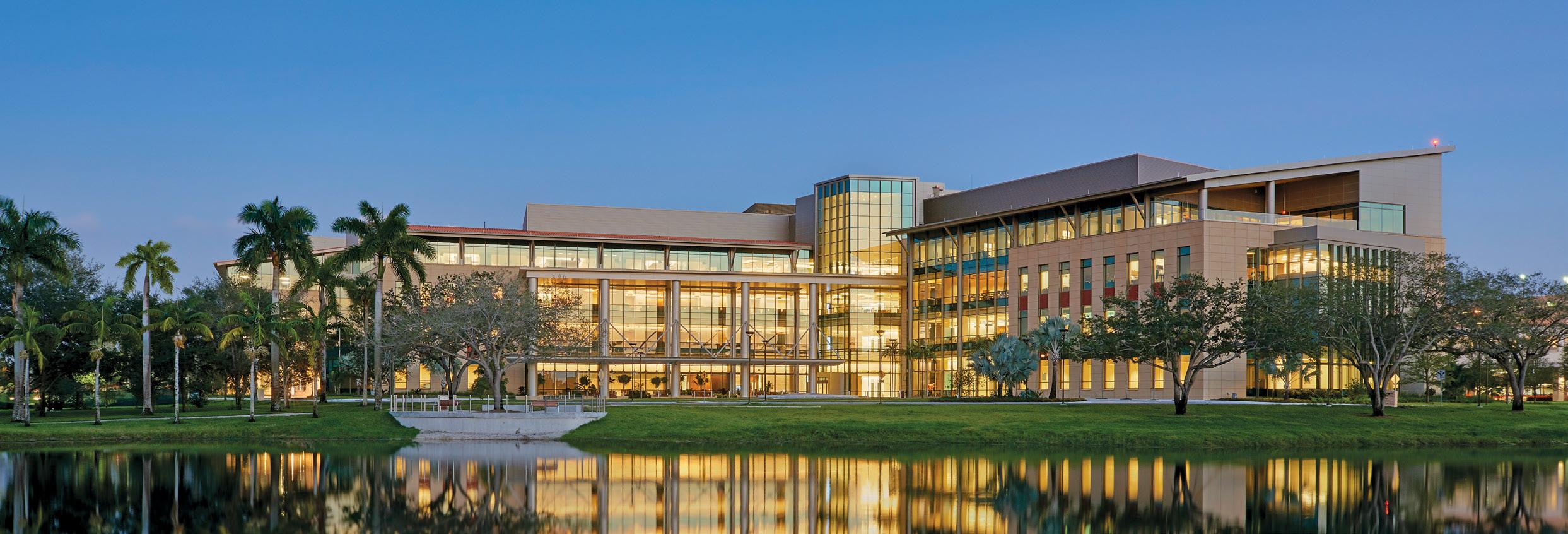
Through our Patient Navigation program, each patient is paired with a patient navigator to help alleviate the stress that comes from a cancer diagnosis, from treatment to survivorship and beyond. Our Cancer Patient Support Center offers a full range of patient and family support services, including:
Acupuncturists
Cancer rehabilitation physicians
Nutritionists
Psychologists
Psychosomatic medicine psychiatrists
Social Workers
Cancer does not stop for COVID-19, and for that reason, Baptist Health’s Miami Cancer Institute encourages you to stay up to date with your cancer screenings. Don’t delay care. Better cancer care is here. To make an appointment or referral, visit MiamiCancerInstitute.com or call 786-596-2000.
At Miami Cancer Institute, we know that the sooner treatment begins after a cancer diagnosis, the better the chances of success. We also know that cancer can behave very differently from one patient to another. So we invest in research and medical innovation to provide the latest advancements in cancer science. This approach allows our oncologists to determine the best course of action based on a patient’s unique genetic makeup. This gives us better opportunities to improve patient care, especially for those who don’t respond to traditional treatments. That’s the level of personalized, expert care our patients deserve, delivered with the heart of Baptist Health.
Don’t delay care. Better cancer care is here. MiamiCancerInstitute.com

A better, personalized approach to cancer treatment.A not-for-profit organization supported by philanthropy and committed to our faith-based charitable mission of medical excellence. For giving opportunities, visit BaptistHealth.net/Foundation


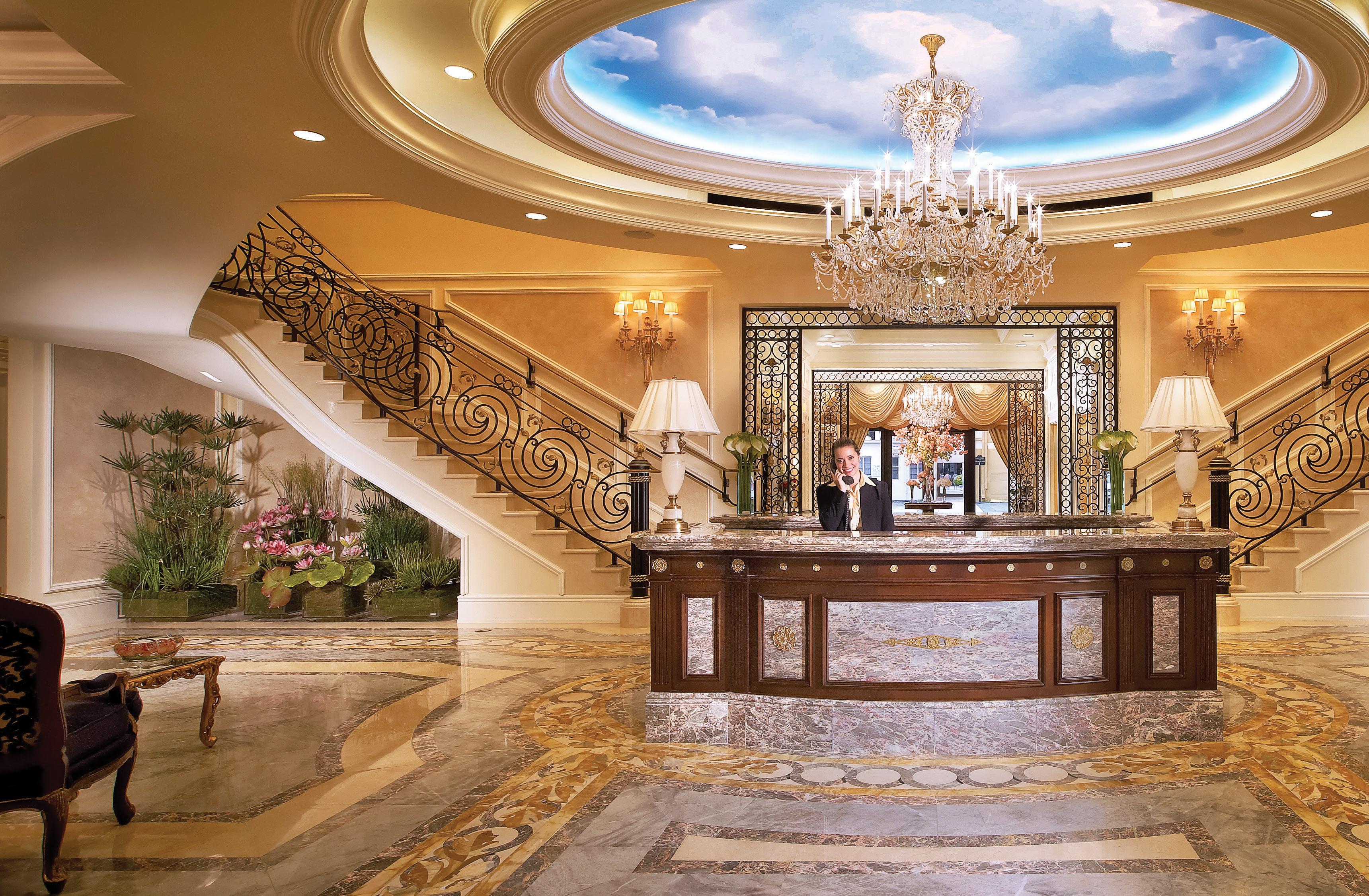



What creates the perfect moment? It’s pristine white-sand beaches enveloped by the bluest waters, where couples can play, or relax. It’s a mouthwatering gourmet creation and a creatively crafted cocktail. But, most of all, the perfect moment is found in the details, an art that we’ve perfected with our Luxury Included ® Honeymoon. For 40 years, love has always been at the heart of all we do, because at Sandals® Resorts, Love is All You Need.
THE LUXURY INCLUDED® HONEYMOON SANDALS.COM • 1.800.SANDALS OR CALL YOUR TRAVEL ADVISOR






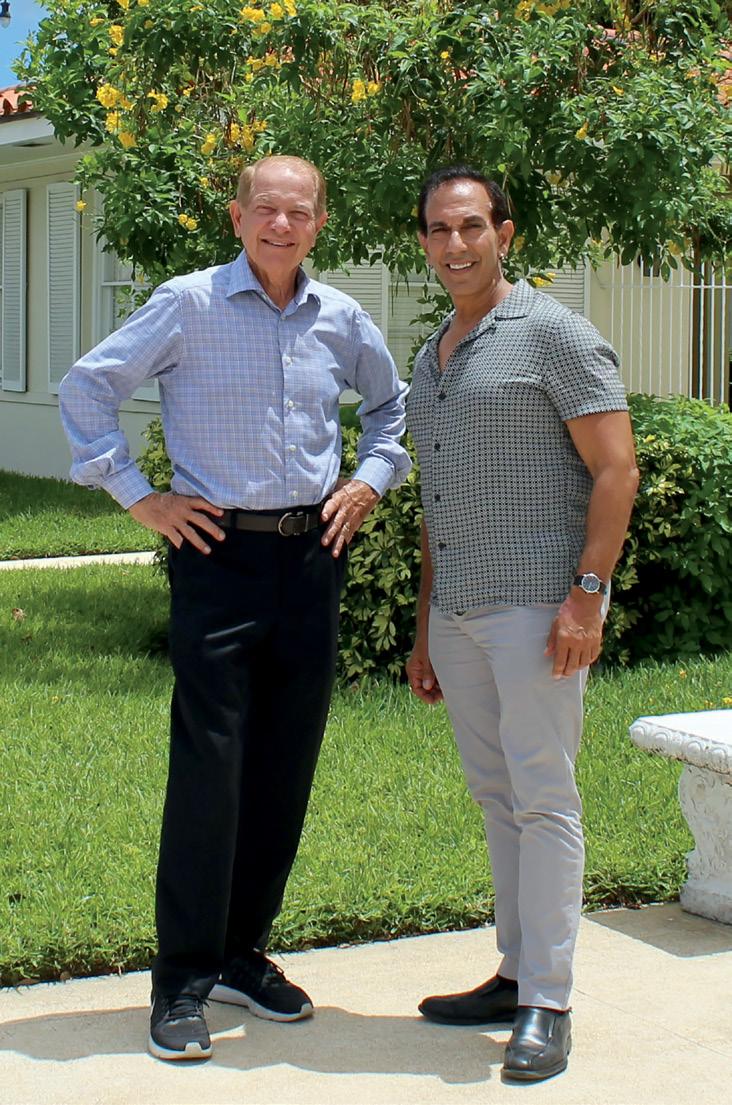


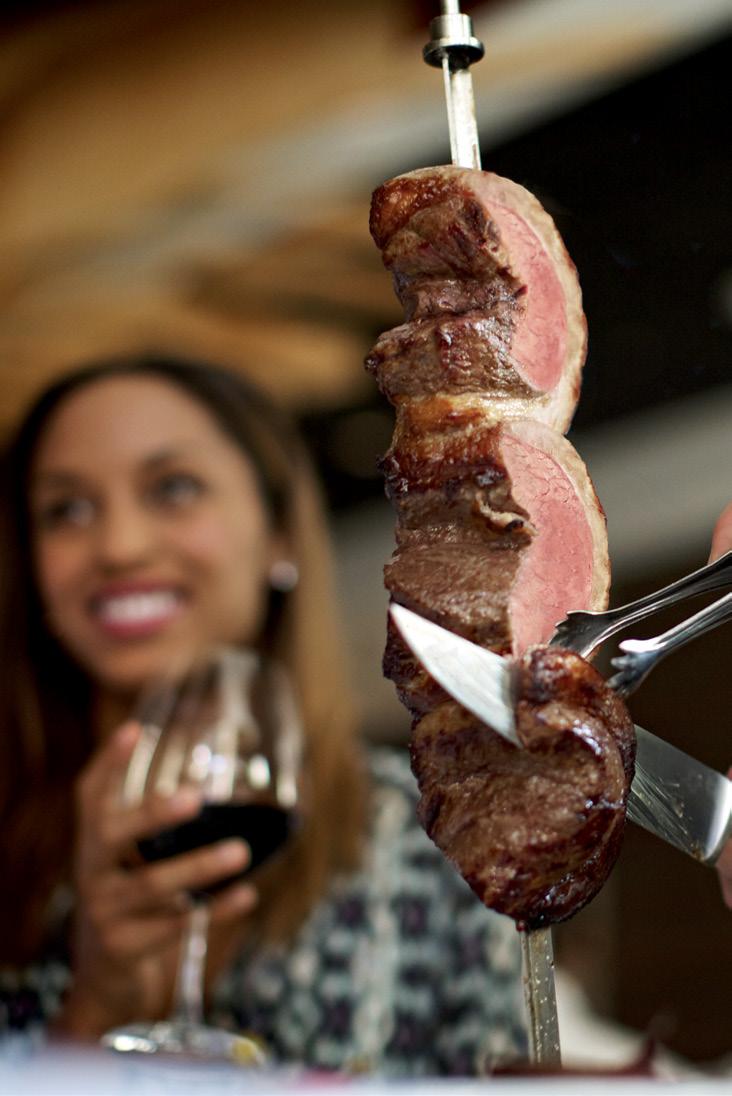
“I DON’T WANT CREDIT FOR THIS, BUT I DO WANT PEOPLE TO KNOW WHAT WE’RE DOING SO THEY CAN HELP AND PARTICIPATE...” GABLES ATTORNEY MIKE EIDSON
Title Sponsor





Bruce & Cynthia Sherman
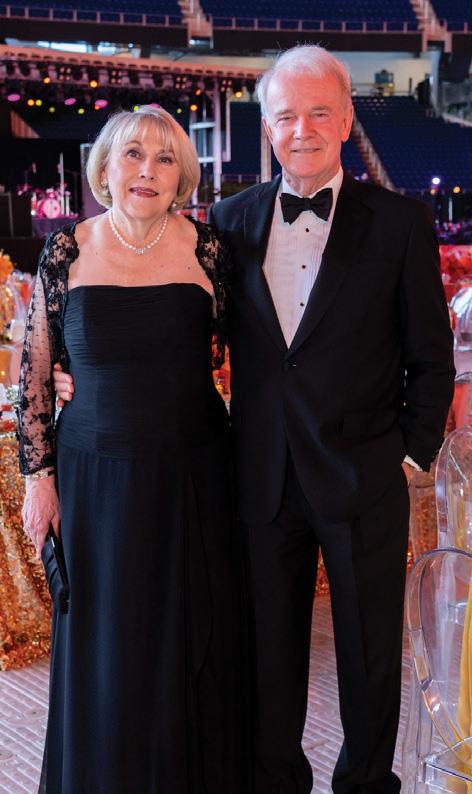
Presenting Sponsor
Karel Foti
Diamond Sponsors




Platinum Sponsor




















Gold Sponsors
Richard P. Cole, Esq.
Philanthropic Chairs
Michele & Howard Kessler
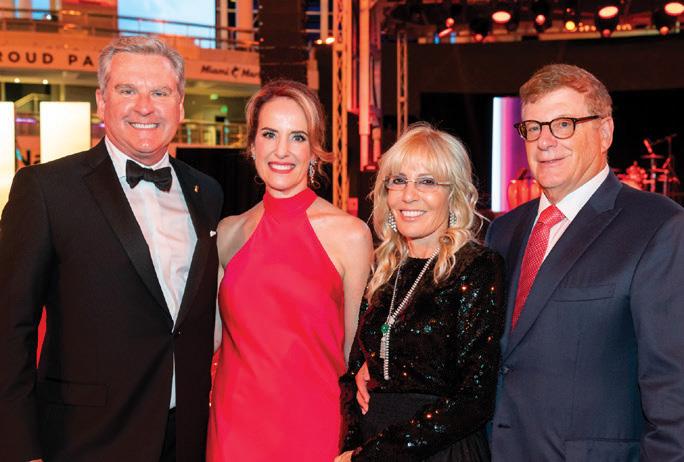
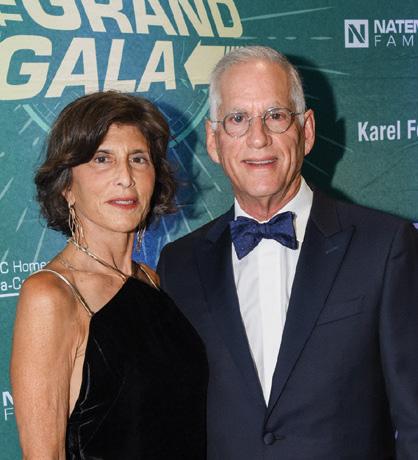


Baptist Health Foundation celebrated its 2022 Grand Gala on Saturday, May 7 under the stars at loanDepot park in Miami. With the theme “Back to the Future,” the Gala honored Baptist Health CEO Brian E. Keeley and his wife, Dr. Suzanne Keeley, for their five decades of service to the organization and the community. More than 1,500 guests enjoyed cocktails, dinner, live music, a drone show and entertainment, as well as live and silent auctions. The Grand Gala raised a record $6.7 million in support of Baptist Health hospitals, Institutes and other entities in Miami-Dade, Broward, Monroe and Palm Beach counties.
Drs. Joel & Randy Schenkman
Dr. John & Josie Wang
Official Sports Team Partner
Silver Sponsors
 Court Keeley, Karel Foti, Amanda Keeley
Dr. Suzanne Keeley and Brian E. Keeley Susan and Jim Carr
Linda Schechter and Robert Berrin Bo and Elizabeth Boulenger, Cynthia and Bruce Sherman
Court Keeley, Karel Foti, Amanda Keeley
Dr. Suzanne Keeley and Brian E. Keeley Susan and Jim Carr
Linda Schechter and Robert Berrin Bo and Elizabeth Boulenger, Cynthia and Bruce Sherman

Coral Gables, known for its traditional trappings, pushes the envelope of change. “Without innovation we cannot become a world class city,” says Mayor Lago. With that in mind, we will explore in this story some of the ways the Gables continues to advance into the future, while remaining grounded in the elegance and civility of yesterday.
“CORAL GABLES IS A CITY THAT IS ALWAYS ON THE BALANCING POINT BETWEEN THE PAST AND THE FUTURE...”
VICE MAYOR MICHAEL MENA, WHO FAVORED THE DESIGN FOR THE MOBILITY HUB, ABOVE




Cover:
In Woody Allen’s classic film “Annie Hall,” he tells his psychiatrist that relationships are like sharks. Unless they keep moving forward, they die.
You could say that cities are also like sharks. If municipalities fail to adapt to the changing world, they experience the slow death of atrophy. Like a person of poor health, their systems start to fail.
That message has not been lost on the city’s leaders, in either the public or private sectors.
In the public sector, there is no better example than the planned Mobility Hub behind the Miracle Theatre. It is a deliberate attempt to get ahead of tomorrow. Whether you like its modern appearance or not, it will be a facility that can accommodate, and interface, micro-mobility, public transport, electric vehicles, shared rides, drones, driverless vehicles, and app-reserved parking. The building is also designed for adaptable reuse; unlike older parking garages it can be repurposed as office, residential, or retail space.
In the private sector, few cities can point to a business community as adaptable as ours, infused by the dynamic leadership at the Coral Gables Chamber of Commerce. Their programs to encourage green building standards, for example, their recognition of innovative companies, their constant programming to educate and update business owners, all speak volumes about

a culture of meeting the requisites of change head on.
Of course, change is never easy. The irony of Coral Gables is that it’s also a city steeped in history and tradition, and very happy to keep certain things the way they are, thank you very much. Attempts to change Burger Bob’s on the Granada Golf Course and the adjacent Coral Gables Country Club were both met with fierce resistance by neighbors; city officials have wisely chosen to repair and return both facilities to their traditional purposes.
Having said that, it must be recognized that the creation of Coral Gables was based on the (for the times) highly innovative concepts of the City Beautiful movement. It was a self-consciously modern community that incorporated new city planning ideas now taken for granted. It dressed itself with an elegant, old-world look, but never lost the idea of being ahead of its time.
In this, our fourth annual innovation issue, we try to shed light on some of the innovative things the city does in the areas of information technology, crime prevention, sustainability, health care, education, transportation, and municipal governance. Write us if you think we’ve missed anything; the future can sometimes be blinding.
CEO & PUBLISHER
Richard Roffman

EDITOR-IN-CHIEF
J.P.Faber
EVP / PUBLISHER
Gail Scott
ASSOCIATE PUBLISHER
Amy Donner
DIRECTOR OF OPERATIONS
Monica Del Carpio-Raucci
ART DIRECTOR
Jon Braeley
PRODUCTION MANAGER
Toni Kirkland
VP SALES
Sherry Adams
MANAGING EDITOR
Kylie Wang
STAFF WRITER & SOCIAL MEDIA MANAGER
Carmen Sofia Fraga
EDITOR-AT-LARGE
Grace Carricarte
SENIOR WRITERS
Mike Clary
Doreen Hemlock
WRITERS
Andrew Gayle
Parker Gimbel
Mallory Evans Jacobson
Katelin Stecz
FILM AND VIDEO CRITIC
Michael Roffman

PHOTOGRAPHERS
Rodolfo Benitez
Jonathan Dann
Emily Fakhoury
CIRCULATION & DISTRIBUTION
CircIntel
OFFICIAL FRAMER
Adam Brand / Frames USA
Coral Gables Magazine is published monthly by City Regional Media, 1200 Anastasia Ave. Suite 115, Coral Gables FL 33134. Telephone: (305) 995-0995. Copyright 2022 by City Regional Media. All rights reserved. Reproduction in whole or part of any text, photograph or illustration without prior written permission from the publisher is strictly prohibited. Send address changes to subscriptions@coralgablesmagazine. com. General mailbox email and letters to editor@coralgablesmagazine.com.
 An image from Fritz Lang’s 1927 movie “Metropolis” about a dystopic future.
An image from Fritz Lang’s 1927 movie “Metropolis” about a dystopic future.


Each month we print letters we receive from our readers. We encourage all commentary, included criticism as well as compliments, and of course any commentary about our community. If you are interested in writing to us with your opinions, thoughts, or suggestions, please send them to letters@coralgablesmagazine.com. Letters are edited for brevity.
me of the picture that I took in Breschia last October
Alhambra Water Tower. When we moved to CG in 1990, we almost bought the house directly across from it!
That’s the door on the light house building to my righthand side going west on Alhambra before it crosses with Segovia. I drive by every day on my way home from work. Fun.
And the smart winners are:
I would like to commend you for publishing your magazine. Today, it’s harder than ever to be a publisher! The competition with online accessibility of information and other available free services makes it so challenging to have a printed publication that is read and respected like yours.
In April we ran a contest on the final page of the magazine. It was a photo of the great door to the Alhambra Water Tower, with the headline: Name That Door. For any readers who correctly identified it, we agreed to print their names and send them two tickets to a local museum. Some 50 people responded, many with comments. Here are a few, followed by the names of the winners.

That door is at the Alhambra Water Tower. I have often wondered what is behind those doors.
The answer to the Name That Door is the Alhambra Water Tower landmark. I don’t want my name published though!
Reading Coral Gables Magazine this morning and enjoying it as always. I say the door is at the Coral Gables Water Tower!
No need to send museum passes. Just wanted to reach out and say thank you for your hard work putting together the magazine. I look forward to reading them every month!
Too easy! Alhambra Water Tower. First thing I drew when I learned to draw on Illustrator.
I actually do not know where the door in the magazine is, but it immediately reminded
Joseph Alba; Lillian Amador; Sally Baumgartner; Patricia Blanco; Gay Bondurant; Dawn Bowen; Cathy Burnweit; Sarah C; Jacquelyn Caldwell; Katia Carrasquillo; Polo Coronado; Margherita Da Passano; David M. Deza; Terri Dominguez; Janeth Easley; Georgina Escobar; Enrique Fonts; Carlos Garcia; Emanuel Galimidi; Andrew Gonzalez; Carmen Gonzalez; Frank Gonzalez; Jesse Green; Constanza Gutierrez-Cavalli; Helen Gynell; Ana Hannah; Yesenia Hoyos; Christian Infante; Amy Kutell; Karl Lahring; Ana Luisa Leon; Carol Lynch; Robert Mangasarian; Richard Martin; Leticia Milian; Henry C Miller; Mauricio Monroy; Dr. Brian Osman; Julio Otazo; Luis Palacio; Cary Perez; Zena Petit; Christophe Petit de Wesserling; Andrew Preston; Kelley Rice-Schild; Aldis Roig; Andres M Rosa; Robert Rosen; Terry Ruiz de Castilla; Dan Schechner; Monique Selman; Katherine Shehadeh; Annie Mejer Steinhart; Kate Swain; Andres Viglucci; Bruno Von-Arx; Bonnie Welsh
We wanted to thank you for your Editor’s Note in May’s “THE ART ISSUE” of Coral Gables Magazine. Bringing attention to the exodus of art galleries both pre-Pandemic and post, as well as offering sincere hope for the visual art galleries now becoming more visible, re-opening, and engaging once again with the city, sends a message to the citizens of Coral Gables that we will fight for our cultural heart. Coral Gables’ museums and art businesses make up a significant part of the beauty in living in this city, and your Editor’s Note comes as an encouragement to this ideal.
Lissette BenitezFor that reason, I want to express that I disagree wholeheartedly with the cover illustration and article about the bank robber (April 2022). I think there are so many positive things we can focus on, that this one certainly doesn’t merit this kind of attention. Also, this gentleman was obviously mentally unstable. No one who is not would engage in such a dangerous and fruitless activity. It looks like it was a call for help, from someone who came from so high and ended up falling so low. As the saying goes, “where our attention goes our energy flows.” I feel that positive covers bring out more positive responses and feelings from the readers.
Mercedes Palomo
I enjoyed reading the article “Walking Through History” about the monthly architectural tours presented by the Coral Gables Chamber (May 2022). However, please don’t walk over history. There is a historical gap in the story where it mentions, “that the building which houses Ruth’s Chris was once... home to the city’s first bus station...” Yes, that is true, but before the bus station there was the Coral Gables Riding Academy. There is even a historical marker on the sight noting the significance of that corner. Below is a short excerpt from the marker. Hopefully this additional piece of history can be incorporated on the next tour.
Excerpt: “In 1924, the Coral Gables Riding Academy office and stable opened on the northwest corner of Salzedo Street and Giralda Avenue. To the south was the show ring which took up the block on Salzedo between Giralda and Aragon Avenue [later home to the Coral Gables Bus station]. The Academy played an important role in the local equestrian community. Some horses at the Academy were well known such as Silver… famous as the mount of the Lone Ranger in the movies.”
Dr. Karelia Martinez Carbonell
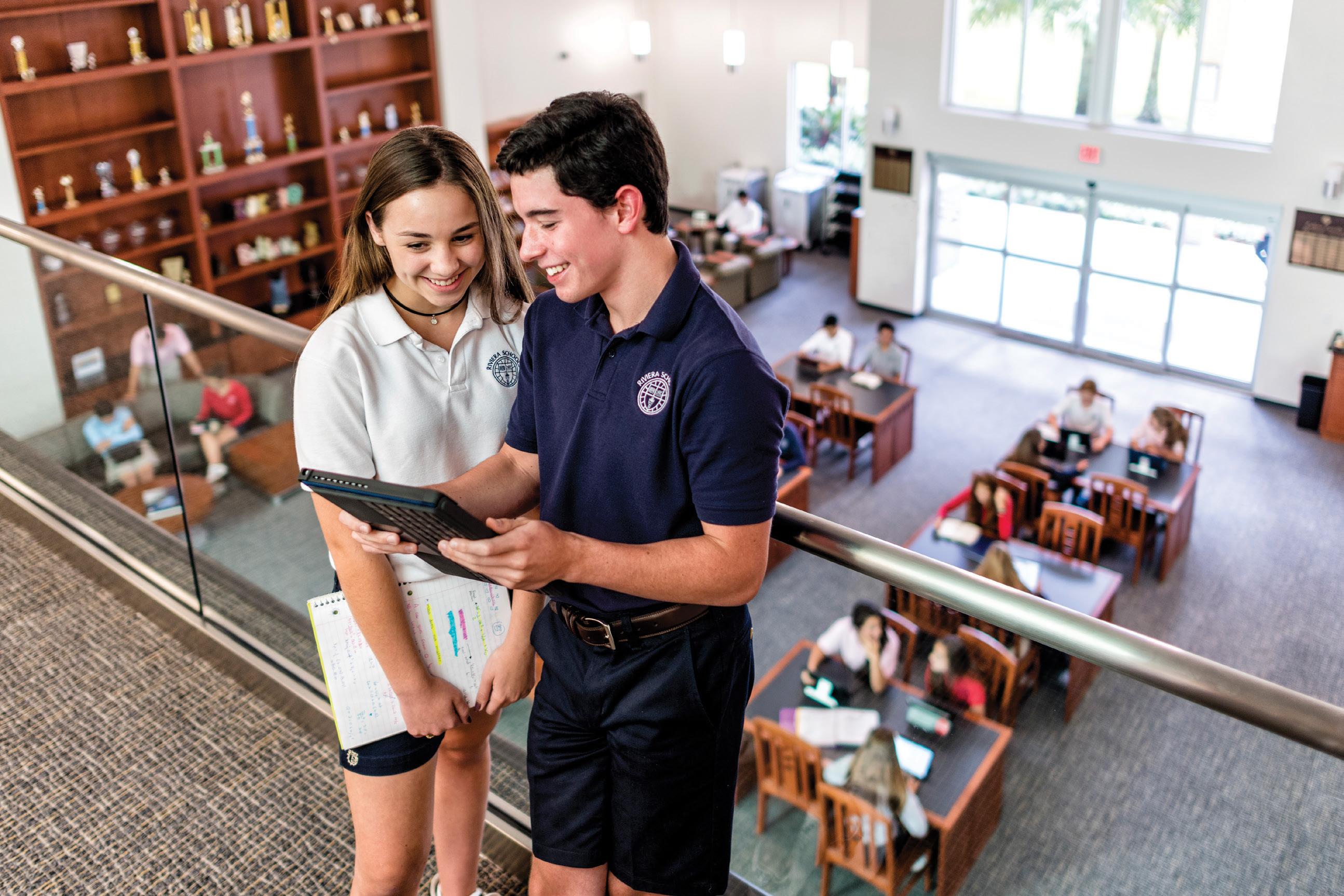


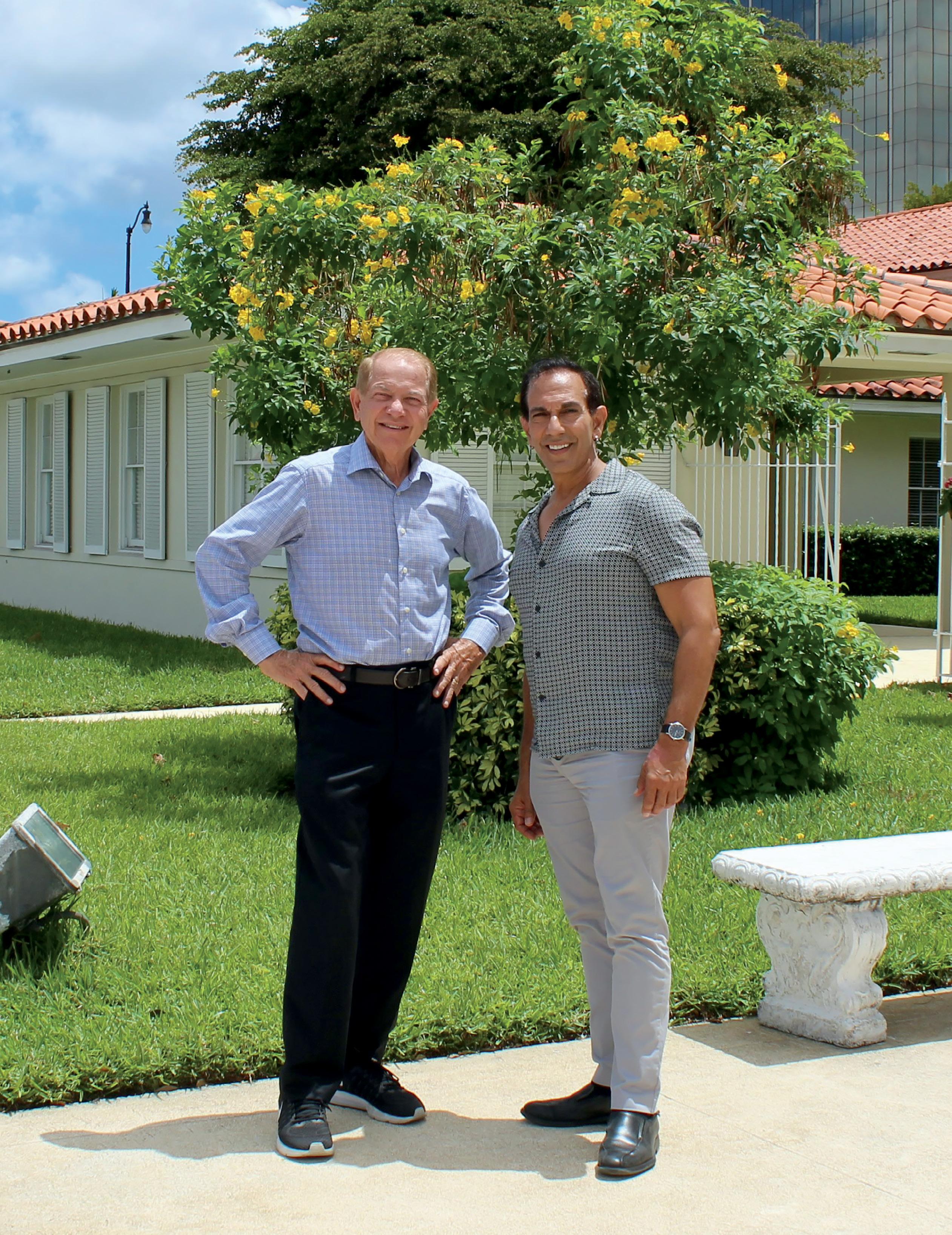

AT ITS LAST MEETING IN APRIL AND ITS FIRST MEETING IN MAY, THE CITY COMMISSION:
DECLARED MAY 2-5 AS SMALL Business Week and recognized that 98 percent of businesses in Coral Gables have less than 50 employees. “Small businesses are the backbone of our economy,” said Althea Harris, deputy director for the regional SBA, who addressed the Commission.
DECLARED MAY 9-13 AS ECONOMIC Development Week and recognized four businesses for their contribution to the city. These are businesses “that represent who we are,” said Julian Perez, head of the city’s Economic Development Department. A certificate of appreciation went to Carlos Beckman of The Plaza; Stephanie Cheung of Stephanie’s Crêpes; Silka Gonzalez of Enterprise Risk Management; and Elena Stele of Ben & Guiles.
VOTED 4-1 TO TURN DOWN A $2.7 million state grant for converting septic tanks to sewer connections in Kings Bay (see story pg. 20).
VOTED 5-0 TO RENEW THE DOWNTOWN Business Improvement District (BID), a marketing agency promoting downtown businesses, for five years pending approval by a majority of the property owners.
VOTED 5-0 TO ASSIGNED AT $110,000 contract to Gables-based firm Dover, Kohl & Partners to design a beautification project for Biltmore Way. The contract calls for at least eight meetings with community residents to come up with three alternatives.
VOTED 5-0 TO APPROVE A FINAL SETTLEMENT with Coral Grand and Coral Gables Athletic Club for $295,000. The agreement cleared the final hurdle for the city’s assumption of full management and control of the Coral Gables Country Club and all its equipment.
CELEBRATED THE LIFE AND SERVICE OF former mayor W. Keith Phillips, acknowledged as the leader who saved the Biltmore Hotel from demolition. After an ovation for the recognition, Mayor Lago commented, “We’ve never been applauded. They [must be] confused.”
VOTED 5-0 TO APPROVE AN AMENDMENT to the city’s Comprehensive Plan to allow additional height bonuses to PADs (Planned Area Developments) in exchange for reduced density and increased green space. The amendment allows for the commission to approve buildings with up to 18 floors.
VOTED 5-0 TO SELL A CITY PARKING LOT at 5151 University Drive to Doctor’s Hospital for $3.5 million, but only after Mayor Lago’s insistence that they agree to pay for sidewalks, landscaping, and lighting (estimated cost $400,000-$500,000). The funds will be used
to acquire and upgrade city parks. The property will now go on the tax rolls for $20,000 a year, with another $17,485 annually to be collected for leasing an adjacent to the public right of way property.
VOTED 5-0 TO APPROVE FUNDING FOR a new dog park on the south side of Salvador Park, proposed by Commissioner Rhonda Anderson after she spoke with neighbors to make sure none objected. The final design calls for removal of several black olive trees to be replaced by flowering and satin leaf trees. The cost is currently estimated to be under $200,000.
DELAYED A DECISION TO CREATE A temporary “pop-up” dog area at Catalonia Park until the completion of the Salvador Dog Park. Catalonia Park has been a neighborhood flash point between dog owners and families with children who share the park. Proposed by Commissioner Kirk Menendez.
LISTENED TO AN UPDATE ON PLANS to rebuild and bring back Burger Bob’s diner-style restaurant on the Granada Golf Course. The estimated cost is now $580,000, with a contingency fund of nearly $55,000 built into that price. Staff estimated it would take 300 days to complete; Mayor Lago insisted that it be completed in 270 days, emphasizing that all materials should be locally sourced and purchased ahead of time.
LOOKED AT THE RESULTS OF THE RECENT inspections of damage at the Coral Gables Country Club, which the city will now repair and manage. The city has already spent $2 million on repairs that included repair of the roof. New inspections revealed subfloors of the ballroom eaten through by termites and rusting beams beneath the swimming pool. “You can’t call it just neglect. It’s gross neglect,” said City Commissioner Jorge Fors, Jr.
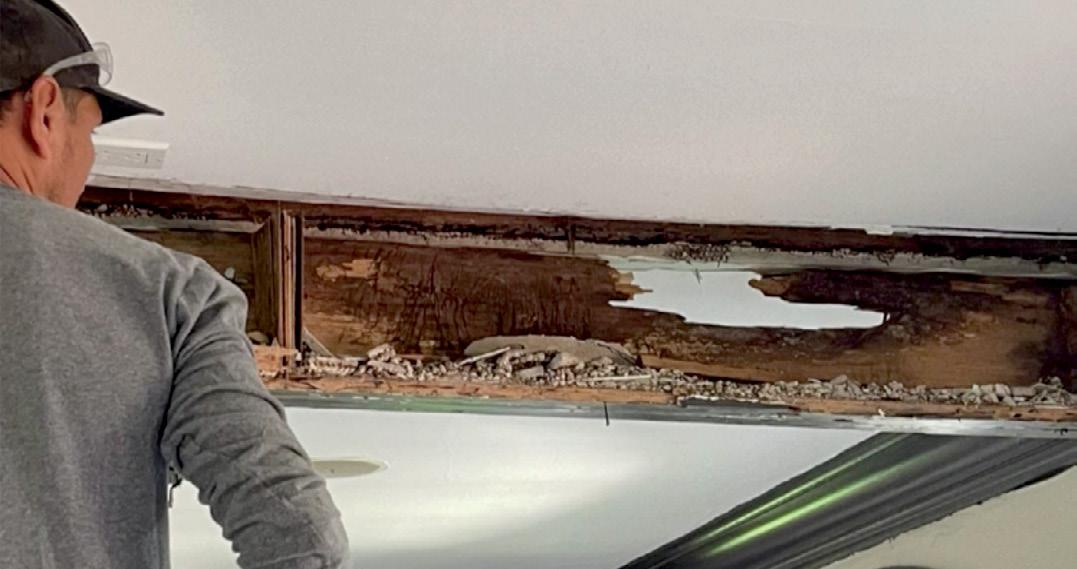
VOTED 5-0 TO OFFER THE CONCESSION to run Burger Bob’s to Rita Tennyson, Bob McGuire’s No. 2 for decades and a favorite choice by neighboring residents who patronized the diner.
LISTENED TO SEVERAL UPDATES ON keeping the city clean and well-landscaped, part of the mayor’s campaign to keep the commercial areas in pristine form. “We are going to beautify this city, even if it’s going to give me a heart attack,” said the Mayor.
VOTED 5-0 TO BAN GAS LEAF BLOWERS in the city by 2024, and to fine employers of landscaping workers who blow leaf debris into neighbors’ yards or into public drainage.
IN AN EMOTIONAL SHOWING, UNANIMOUSLY voted its support for City Manager Peter Iglesias, in response to recent blogs that claimed (falsely, according to commissioners) discord between the Commission and city manager. ■
A building permit is a legal document issued from the local government that allows you to proceed with construction on a project. Building permits are required to ensure the safety of your family and neighbors, keep your community looking nice and protect your investment.
Choosing a Permit Expediting company could get very tricky. There are expeditors that are a one-person operation and generally work out of the trunk of their car. Furthermore, don’t know the exact processes and eventually make you lose more time and money. At times, they collect a retainer and then vanish… Very commonly, they don’t answer your calls. If you make the wise decision to choose a permit expediting company, make sure to look at these points:
•How many years have they been in business?
•Do they have an office?
•How big is their team?
•Look at their recent projects.
•Google search them and determine how reputable they are.
•See if they have a website and examine it.
The only way to know if you need a building permit is to contact a local permit expeditor or visit the governing building agency where you are planning on performing the work. Not every local building agency requires a permit for all work. Such as but not limited to, painting, minor repairs, minor plumbing, electrical projects, etc…
However, there are other local governing agencies that require a permit for almost everything. For example, The City of Coral Gables requires you to obtain a permit for painting, tree removal, landscaping, temporary fences, etc… M.E.D. Expeditors suggest that you check before hand, as you could save yourself a lot of time, money and unnecessary stress.
The time it takes to get a permit differs greatly based on the type of permit and the local government building agency. Building permits could take anywhere from one week to years… What the average homeowner doesn’t know, is that the architect and/or engineer that they choose, plays a big part on how long their permit takes to get approved. They could avoid their permit getting rejected over and over again if they choose an architect/engineer that is well familiarized with Florida’s Building Code and local Zoning Codes. You could also save yourself a lot of time if you hire a permit expeditor that’s familiar with your county/city’s requirements.
Established in 1997, MED Expeditors, Inc. has processed thousands of projects throughout Florida. They are highly experienced in small home projects to retail projects in the construction industry for the top Fortune 500 Retailers. M.E.D. Expeditors are one of the GEM Investors for the Coral Gables Chamber of Commerce and the exclusive expeditors for The Shops at Merrick Park in our #CityBeautiful. They are highly involved and recognized in the community. As well as known as the best and most prestigious permit expediting company in Florida.
M.E.D. Expeditors finds solutions to all permitting needs, even when people think there’s no way out. Problem solving is one of their strongest qualities and they really care about their clients. M.E.D. Expeditors is very excited to announce that they will start providing permitting services NATION WIDE on June 6th, 2022.

Melissa Castro, Owner of M.E.D. Expeditors states “Permitting is not only our job but also our passion”
Their main objective is to time effectively process your building permits or licenses, providing you with top-tier quality customer service for each project. As well as, daily customized updates, while offering individualized attention. They highly pride themselves in valuing your time: as they know that “Time is money”. They have a team of experienced specialists with professional and graduate degrees that offer time-effective solutions for all your permitting needs.

THE ANNUAL AUCTION AT ACTOR’S PLAYHOUSE

Sometimes it takes a village, and last month the community stepped up at the 31st Annual Reach for the Stars Gala Auction at Actor’s Playhouse on Miracle Mile. With food provided by a stunning array of 28 city restaurants, from Bachour, Bulla, Clutch, and Forte, to Morton’s, Pascal’s, Pincho, and TUR, the popular event auctioned donated gifts via live and silent auction. Headlining this year’s trove was a one-year lease for a 2022 Lexus RX 350, provided by Lexus of Kendall. Auction items also included a luxury cruise courtesy of Azamara, hotel packages, fine jewelry, restaurant dinners, golf packages, art, home décor, sports collectors’ items, beauty treatments, and more – all contributed to the theater.
The evening was hosted by Actor’s Playhouse Founding Board Chairman Dr. Lawrence E. Stein and Executive Producing Director Barbara S. Stein. The live auction was led by Erik Sanudo of TEBO Estate Buyers & Sales, with a little help from Actors’ Playhouse Artistic Director David Arisco. Funk Pedal, featuring Von Henry on vocals, Don Slesnick III on guitar, and Michael Curtis on bass rocked the house as the spirited bidding raised $160,000 to help fund the Actor’s Playhouse mission: To enrich the Gables with high caliber live theatre productions. “I was moved by the level of community support,” said Barbara Stein. “This is a city that loves its live theater.”—Brooke
NobleNEARLY $3 MILLION IN GRANT MONEY IS REJECTED BY THE CITY COMMISSION
One of the perennial issues facing Coral Gables – and all of Miami-Dade County, for that matter – is the need to convert septic tanks to sewer hookups. As water levels rise due to climate change,
underground water will ultimately leach into the tanks, polluting the aquifer and Biscayne Bay. With that in mind, city staff applied for a grant to convert the homes in Kings Bay from septic to sewer. Kings Bay, a community of some 154 households, is the last bayfront Gables community still on septic tanks – and hence a likely future polluter of the bay. The good news: city staff was awarded a grant of $2.7 million from the state to help pay for conversion. The bad news: It had to be matched by another $2.7 million.
With scant notice, the city proposed the matching funds come from Kings Bay residents – to the tune of about $20,000 per home. Even if payments were stretched out for 10 years, that would still mean $2,700 per year per household. Worse yet, representatives from Kings Bay who addressed (and even heckled) the city commission said the price tag could climb far higher, since homeowners would be responsible for hooking up to the sewer line, moving trees, repaving torn up driveways, etc.
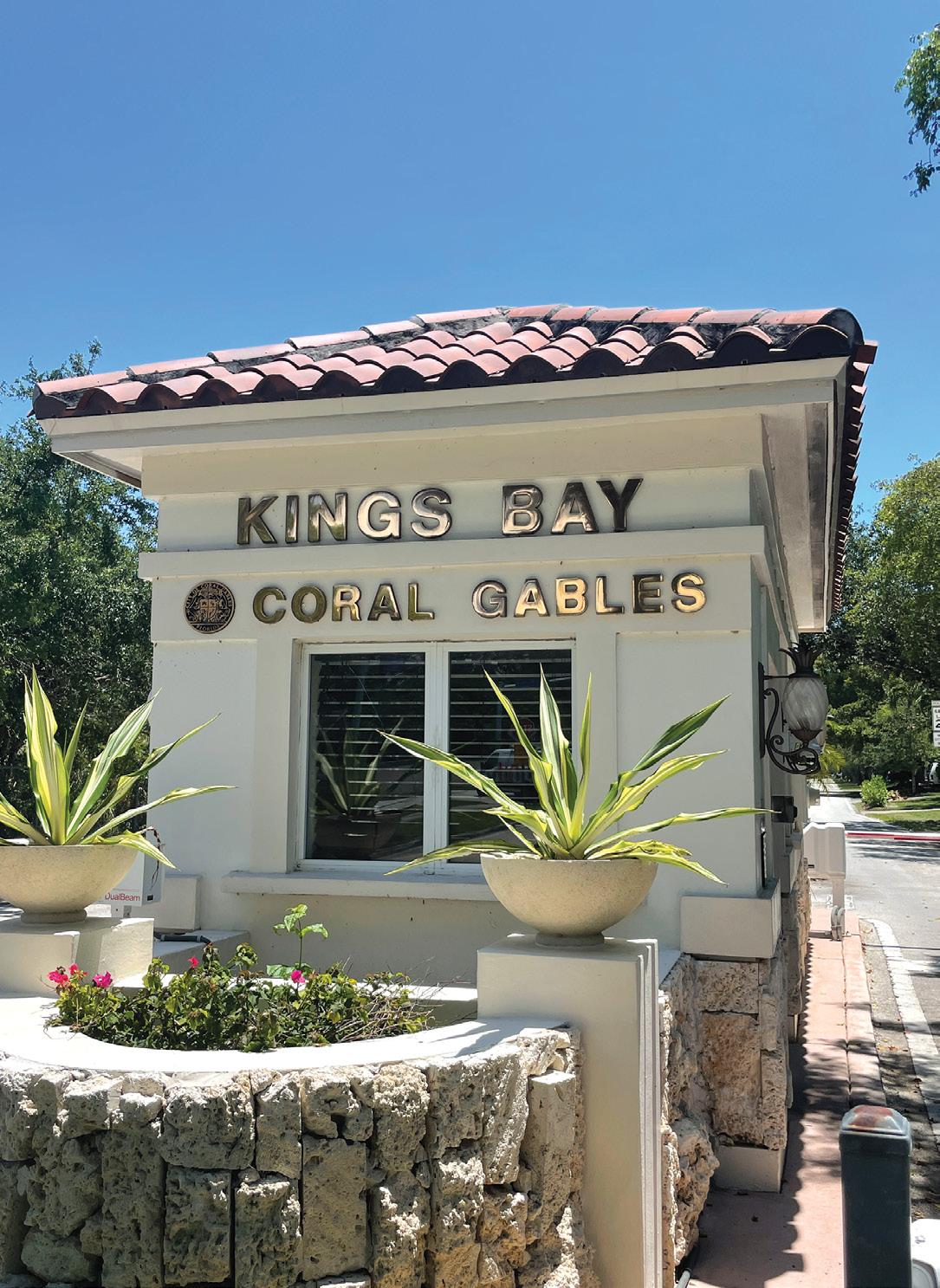
As expected, homeowners were against the proposal. Sooner or later, the entire city is going to have to convert – and pay. Why should Kings Bay be singled out for a special assessment? That sentiment was conveyed to the Commission through numerous emails and phone calls. The only problem, as pointed out by representatives of non-profit Miami Waterkeeper, is that if the $2.7 million is returned to the state, it will be lost, and the state will be less likely to issue further grants to an ungrateful Coral Gables.
For that reason, Commissioner Rhonda Anderson proposed a delay of 30 days, to give staff a chance to find alternative ways to pay the residents’ portion. But her appeal went nowhere. Vice Mayor Michael Mena declared he would not leave the residents in a state
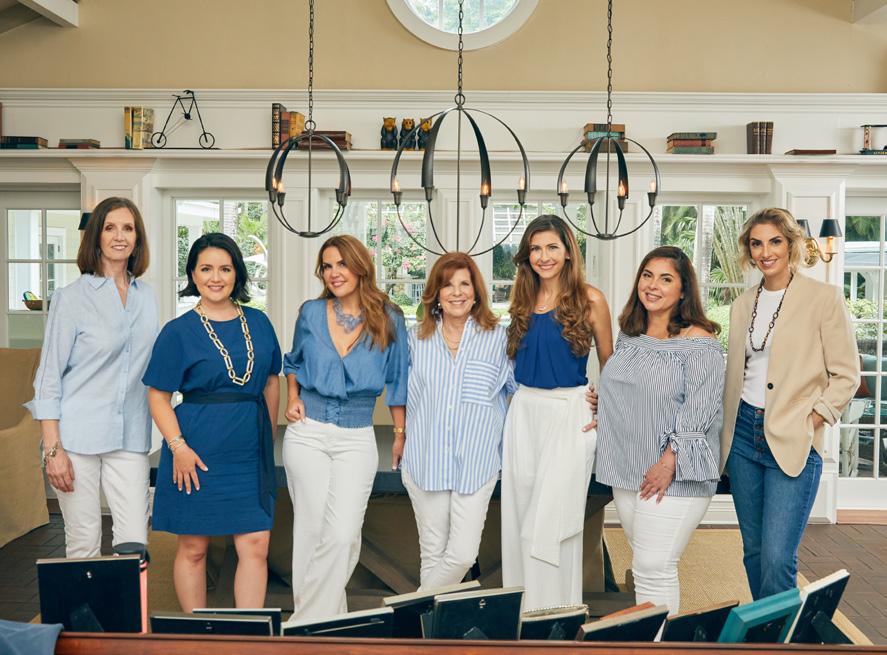



of uncertainty. Mayor Vince Lago bemoaned the loss of nearly $3 million in environmental funding but voted with Mena and Commissioners Jorge Fors and Kirk Menendez to reject the grant. He later told Coral Gables Magazine that he voted “no” for the sake of consensus and subsequently wished he had voted to search for alternative funding. The motion would still have been rejected 3-2.
One thing Anderson pointed out was that residents were not informed of the grant and proposed surcharge until April 17, hardly enough time to make an educated decision by the time the Commission took up the issue on April 26. Indeed, one resident told commissioners that, now that she was learning more about the benefits of sewer lines over septic tanks (improved real estate values, among them), she wished there was more time to explore other funding solutions. Staff, meanwhile, were instructed to see if they could save the grant for another purpose. As of press time nothing had come of it.
J.P. FaberA LAWSUIT AGAINST THE CITY’S CAMERAS CONTINUES

Raul Mas Canosa has lived most of his life in Coral Gables. “It is a city I love,” he says. “But Big Brother has now taken over our city… spying on me 24 hours a day, seven days a week, 365 days a year, day and night. And I think that’s wrong.”
The source of Mas’ agita is law enforcement’s use of Automated License Plate Readers, which the city has used since 2015 to capture the images of car license plates entering and leaving the city. The idea is to provide a “geo fence” around the city, to help capture would-be criminals who enter the Gables to commit crimes. It paid off handsomely a few years back when an alleged murder suspect from New England was ‘tagged’ driving through the city.

Mas Canosa does not see it that way, and filed suit in 2019, saying that his 4th Amendment rights (protection from unreasonable searches and seizures) had been violated.
Discovery in the case revealed that as of January 2019, the city had catalogued 393 photographs of Mas driving around the city. Each photograph includes the precise date, time, latitude, and longitude of his vehicle, and an estimate of the nearest address and intersection. The 80 pages of documents show “it is clearly my vehicle,” Mas says in a video produced by the New Civil Liberties Alliance (NCLA), a nonpartisan, nonprofit civil rights group that took on the case. “In some cases, you can see my dog’s head sticking out of the window.”
Last year, a trial court ruled against Mas, deciding that since he was driving in plain view, he had no reasonable expectation of privacy. That was not a sufficiently good reason to deny the case, say NCLA attorneys, who took the case to Florida’s Third District Court of Appeal in December.
“People have various reasons to keep their habits secret,” says Sheng Li, an NCLA lawyer. “Their church-going habits, for example. We are not saying that ALPRs have no use. The problem is that the data is being stored for three years. There is no need for that long.” The use of ALPRs, says the NCLA, amounts to “warrantless surveillance” that infringes on the privacy rights of residents like Mas Canosa.
The city does not see it that way, especially since it never used the data against Mas Canosa. “The city is very pleased to have prevailed at the trial court level and is confident that the appellate court will agree with the lower court’s ruling,” said city attorney Miriam Soler Ramos in a statement. “The City is glad to be able to continue using this effective law enforcement tool.” ■ – Mike Clary

CITY COMMISSIONER JORGE FORS JR. THROWS HIS HAT INTO THE RING
With just under a year left in his four-year term, City Commissioner Jorge Fors Jr. has announced he will run for a seat in the County Commission this fall. He will seek to fill the shoes of District 6 County Commissioner Rebeca Sosa, whose term ends this year (she has endorsed him).

Fors decided to run when State Representative Bryan Avila dropped his candidacy to compete for a state senate seat instead. “Sometimes we are faced with an open door, where we feel we are the best man for the job,” said Fors, motivated by the same reason he ran for city commission – a love of public service. “You are in a position to make change happen,” he says.
Fors says he’s grown frustrated by what can be accomplished on a city level. “One of the biggest surprises when I became city commissioner was how many scenarios there were where you ran into a wall with the county,” he says. “By moving to the county I’ll continue to represent a large portion of the Gables and will be in a position to accomplish more things for the city and the municipalities surrounding it.”
Among his priorities will be to curtail the county’s development of high rises along the Metrorail transportation corridor and to respect the county’s urban/rural boundary. As for the question of the Gables annexing adjacent county neighborhoods, which he famously opposed when taking office (after visiting some 7,000 households), he wants to leave that up to voters – not only in the areas to be annexed, but “the people who are in the city doing the annexing.”
ARCHITECT WILLY BERMELLO RELOCATES TO THE GABLES
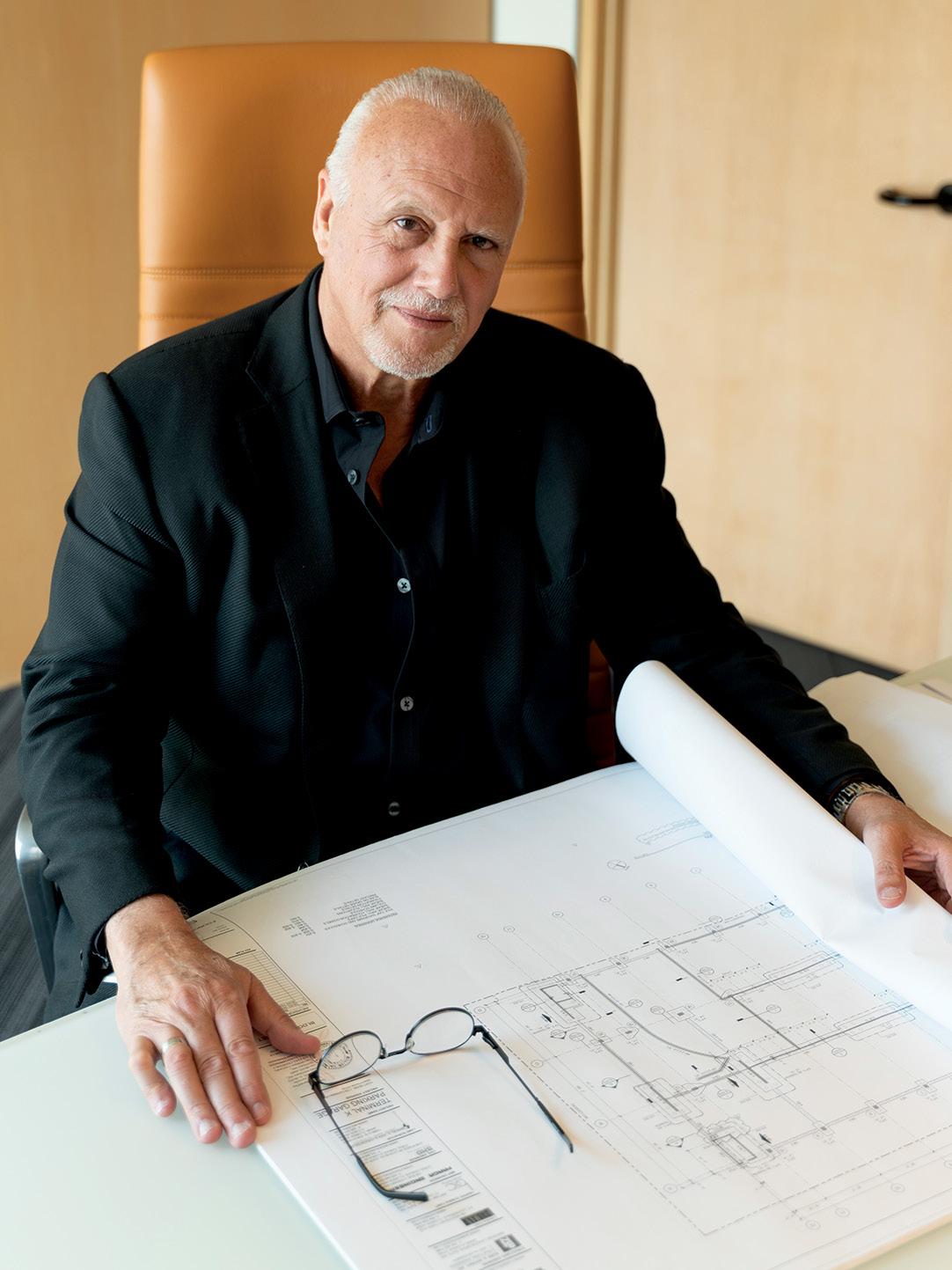
“This is a coup for the city,” says head of economic development Julian Perez. “A real win.” What Perez is referring to is the relocation by Bermello Ajamil & Partners, the prestigious architecture and engineering firm that’s been in Coconut Grove for more than three decades. “For me personally, it’s a coming home,” says Gables resident and company chairman Willy Bermello, who started his first professional practice in the Gables in the 1970s.
There were other, compelling reasons for the move as well. The new digs across from Havana Harry’s on Le Jeune will be substantially less expensive than water-front offices in the Grove. Just as importantly, the entire firm will now be sharing one floor, rather than spread across three floors as they were. “The ability to move laterally and manage by walking around is so important. It gets people moving and energized,” says Bermello. The new space also “provides naming rights, parking, and is much more affordable… and, frankly, Coral Gables is hot right now. It offers a better quality of life.” The move is expected to be completed this month.
ALIRIO TORREALBA RECEIVES THE CHAMBER’S BUSINESS LEADER OF THE YEAR AWARD
Since arriving in Coral Gables in 2014, Alirio Torrealba has been the city’s most active residential real estate developer. As CEO of MG Developer, he has completed four (soon to be five) luxury townhome projects for his master-planned Biltmore Square community just off downtown. Besides embracing a low-rise approach





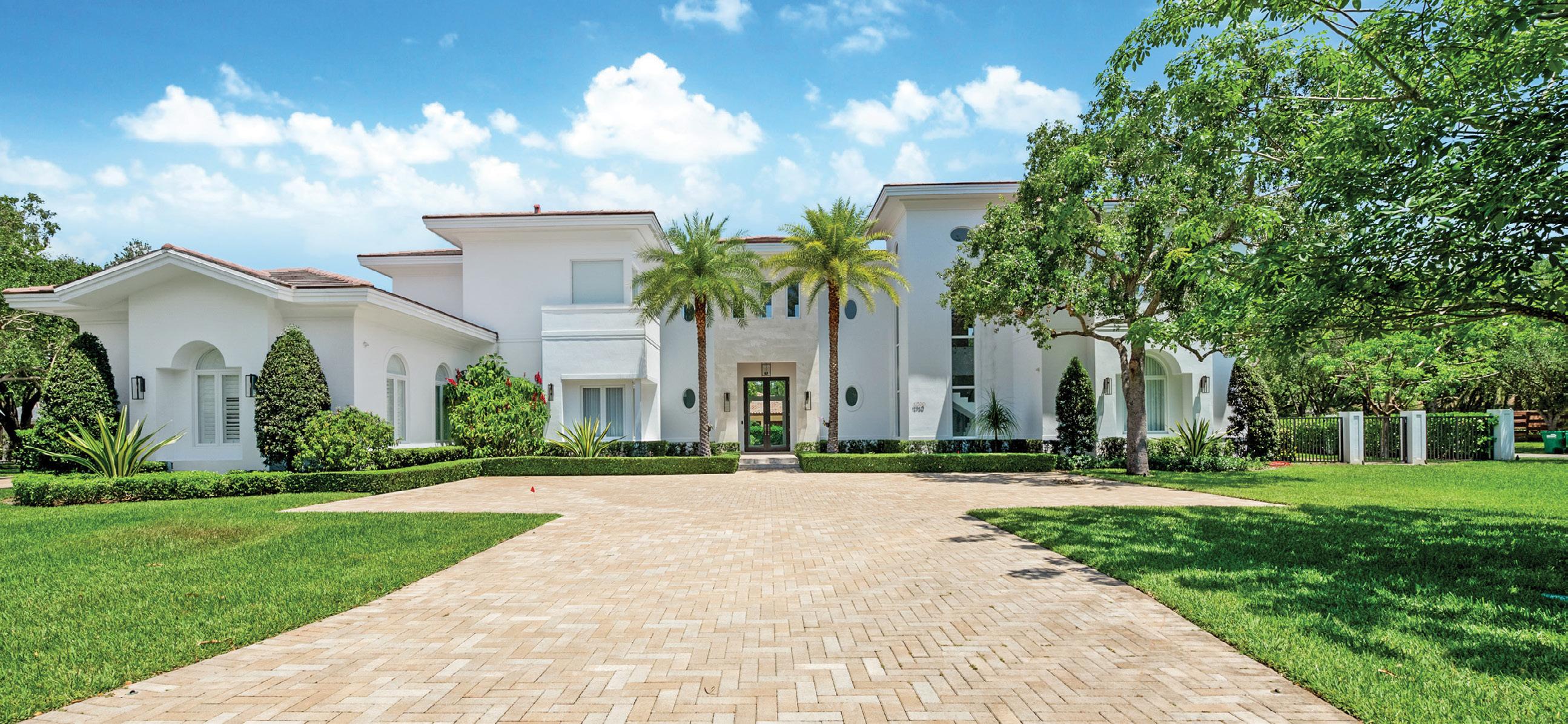













in his classically designed Gables developments, Torrealba has been a generous supporter of the arts, commissioning the “Midsummer Night’s Dream” stone couch sculpture in Balboa Park, and presenting several pop-up galleries in the downtown. He is a philanthropic member of the Coral Gables Museum board of directors and a patron of the Coral Gables Community Foundation.
With that (and more) in mind, the Coral Gables Chamber of


Commerce presented Alirio its 2022 Business Leader of the Year Award last month at its annual Diamond Awards event. “He is truly deserving of this honor,” said Mark Trowbridge, the chamber’s president and CEO. Said Torrealba: “Thank you for this recognition. You are all my source of inspiration to continue to enhance the City Beautiful while honoring the legacy and vision of George Merrick, founder and visionary of this great city.”
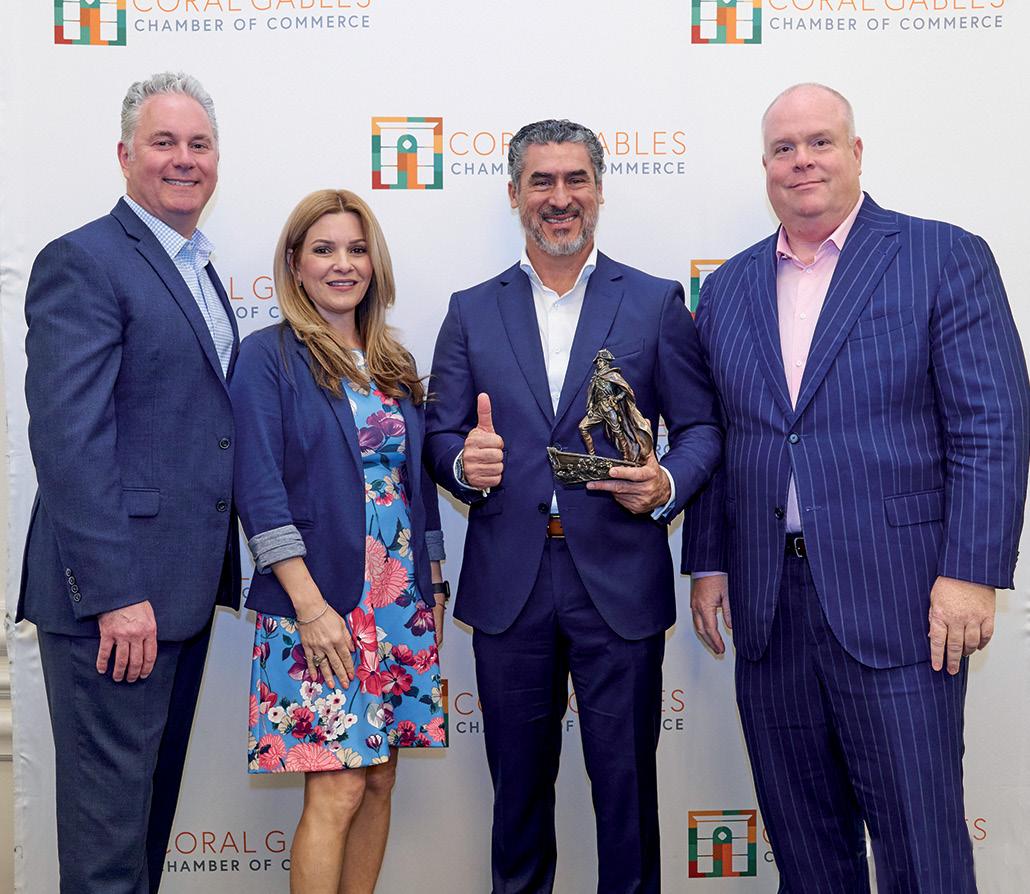
The final weekend of April witnessed the official birth of The Sanctuary of the Arts, a complex for the performing arts in the First Church of Christ Scientist campus across the street from City Hall. In a celebration of music and dance, the opening party lasted three days, featuring ballet, chamber music, operatic ballads, contemporary dance, and even a circus troupe – the last for Sunday’s Family Fun Day. “We had a little bit of everything, but very high quality,” says Mike Eidson, the Gables attorney for whom the Sanctuary is the culmination of decades of involvement with the arts. A preservationist as well as an arts enthusiast, Eidson was either president or chairman of the board for the Miami City Ballet for nine years, as well as Chair of the Arsht Center’s Board of Directors for five years. He also led the struggle to restore the Coconut Grove Playhouse. But it has been in Coral Gables, his home for 50 years, where Eidson has made the most impact, first by saving the building where Books & Books is now located, and more recently with his acquisition of three churches for conversion to preforming arts centers. The first church he acquired (via long-term lease) was the large,







classical-style 1940 church that fronts Anastasia Avenue opposite City Hall. It is now a theater with a new stage and 330 seats. The second (also via long-term lease) is a small, 1930 Mediterranean style church that is hidden within the First Church of Christ Scientist compound. Eidson bought his third church in 2020 – the 1926 St. Mary’s Missionary Baptist Church, the first African American church in Coral Gables.
While St. Mary’s is still undergoing renovation to become a performing arts venue – including for nearby Carver and Tucker elementary schools – the other two churches are in business. The smaller church is now a dance studio and musical rehearsal space with wooden sprung floors, used daily. The larger church (both designed by famed architect Phineas Paist) is now a performance space inaugurated earlier this year with a symposium by famed violinist Joshua Bell. During its official April opening, the stage hosted pianist Marina Radiushina, mezzo-soprano Solange Merdinian, Prima Ballerina Mary Carmen Catoya, and American Repertory Ballet’s Hernan Montenegro, among others. Through June 18, the Sanctuary will be presenting the Mainly Mozart Festival, with performances at 4 pm every Saturday.
“I don’t want credit for this, but I do want people to know what we’re doing so they can help and participate,” says Eidson. “I love the arts and I want to give them more places to create and perform…. I’m willing to put in the hours, and my wife Margaret lets me, because we go to all these things.” ■
With over 15 years of experience in and around Coral Gables, I can help you navigate this season’s real estate market.
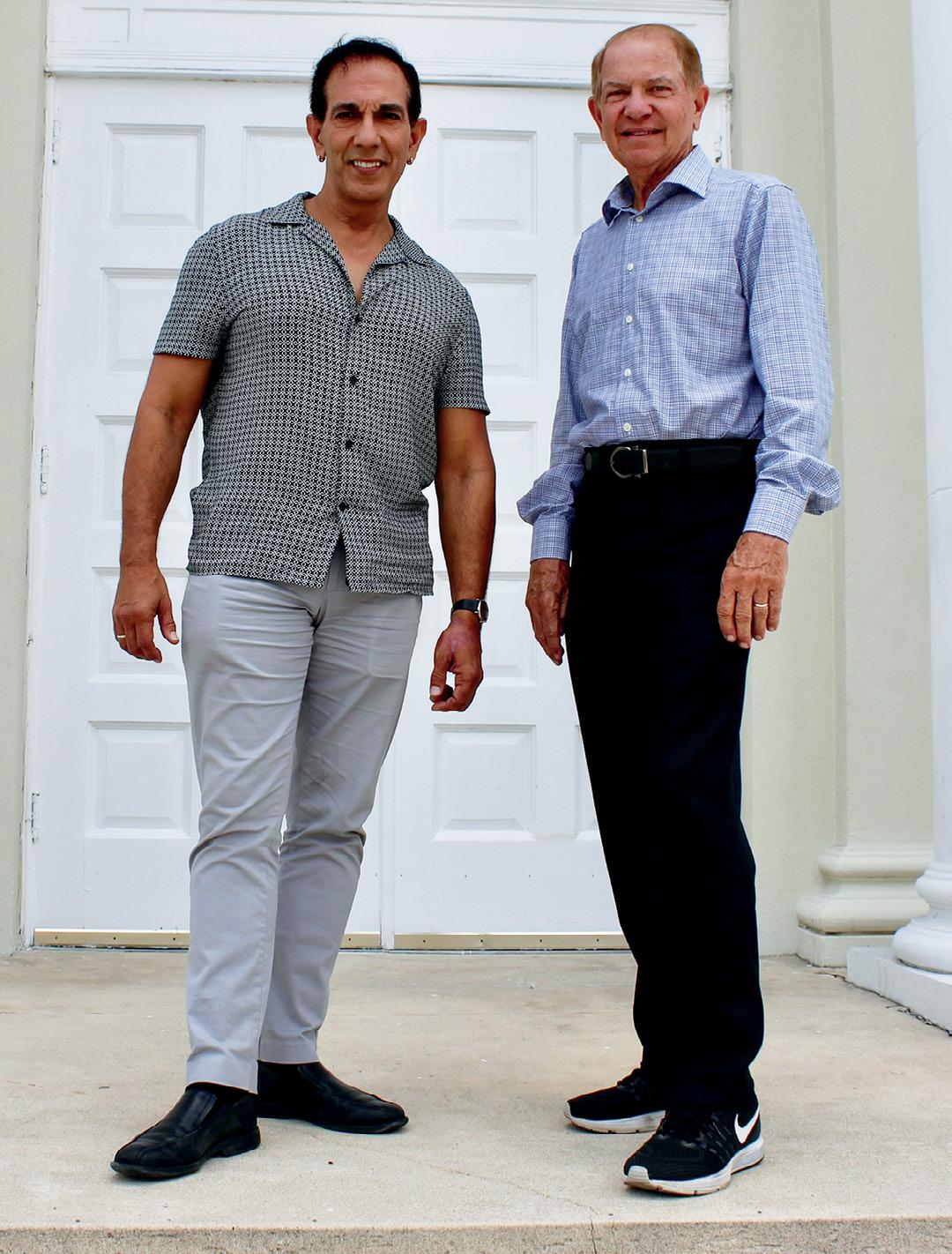
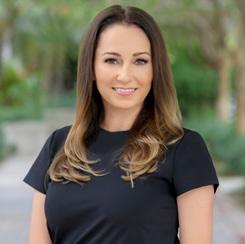

Are you interested in maximizing your home’s value? Call me if you are looking to leverage your neighborhood’s blossoming market.
JJ Snow Hansen Real Estate Advisor305.608.8750
jj@jjsnowhansen.com

BEST-IN-CLASS CARE

Belmont Village Coral Gables to Rede ne Senior Living
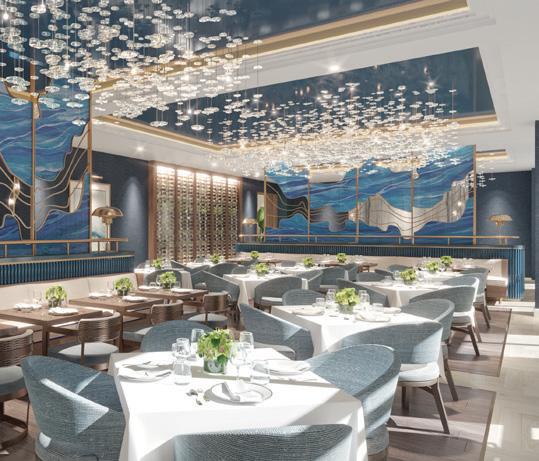

A unique collaboration between leading senior housing provider Belmont Village Senior Living and renowned Baptist Health South Florida is rede ning senior living. Belmont Village Coral Gables, opening in 2023, is the rst in a series of senior living communities coming to South Florida through this innovative partnership. Along with ve-star hospitality and amenities, rst-class accommodations, a rich social environment, and rst-rate care, Belmont Village Coral Gables will feature Live Healthy by Baptist Health on the ground oor, a wellness-focused center for its residents and seniors in the greater Coral Gables area.
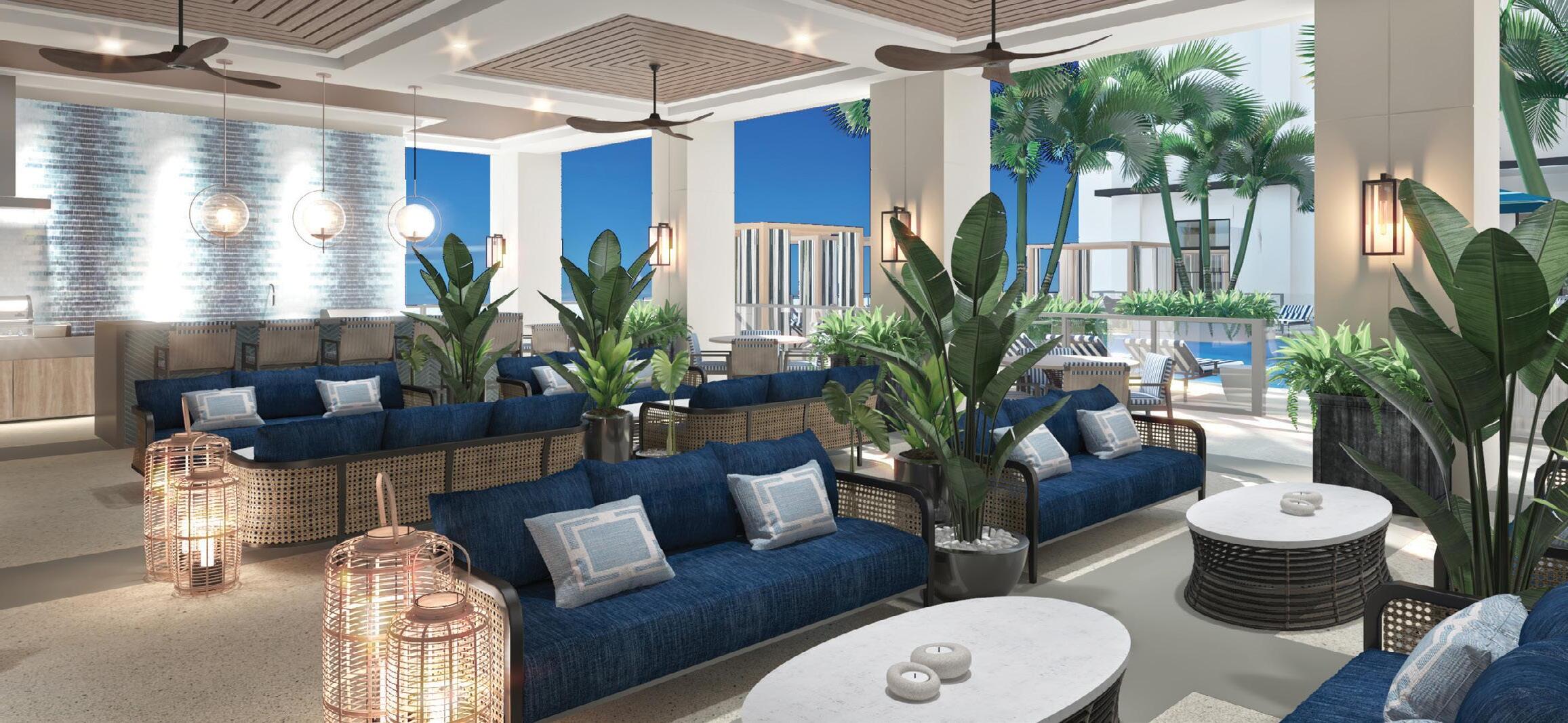
 BY J.P. FABER
BY J.P. FABER
In the 1948 comedy movie “Mr. Blandings Builds His Dream House,” Cary Grant stars as a hapless New York advertising executive who decides to build the home of his dreams in Connecticut. The box office hit lampooned one challenge after the next, ending happily with Grant and his family enjoying their new residence.
The idea of building your dream home is taking a new turn in downtown Coral Gables, with more than one reversal from that timeless plot. The man behind it, Armando Codina, is one of the most accomplished developers in the nation, not likely to make comedic mistakes. He is also relocating from a more spacious, outdoor setting – his home in Gables Estates – to the urban core of downtown Coral Gables.
“There is no way to talk about this building without talking about me, and I don’t like to talk about me,” says the notoriously press-shy Codina. “But this building is educated by how I want to live.”
Codina says it’s not a matter of downsizing, but rather “right sizing.” After living for 40 years on the same street, where he raised four daughters, Codina says
“you come to a point in life when you ask, ‘Where am I going to be in two years from now, where am I going to be in 10 years, and what am I going to need?’”
The answer is what Codina calls a “transformational” building. That concept, of transforming an area through new construction, is well practiced by his various firms, which developed Deering Bay (condo towers in a wet, tropical setting), the Beacon Industrial Park (highend warehousing by the airport), and downtown Doral (creating a town center in the middle of nowhere). Now he aims to create a stone-clad, neoclassical apartment building in the middle of downtown, where all the units “have the DNA of a residence.”

What that means are large, family-style units with plenty of room for kids and/or guests, with a huge seventh floor “amenity deck” that includes an 80-foot lap pool (in addition to a large, standard pool), indoor and outdoor kitchen facilities, a fitness center with sauna and steam room, and a secluded “yoga yard.”
Sitting atop 13 residential stories varying between 1,700 and 3,500 square feet will be
ABOVE: ARCHITECT’S IMPRESSION OF THE REGENCY TOWER ON SALZEDO STREET IN THE MIDDLE OF DOWNTOWN
ABOVE LEFT: A RENDERING OF THE LOBBY

CGTC is the largest independent and privately-owned trust company headquartered in South Florida, with over $2 billion of AUM and growing.
If you have been dissatisfied with lack of attention and poor service levels from your current financial advisor, CGTC professionals are available 24/7. Especially during the last two difficult years, we have proactively and regularly contacted each of our clients to offer our assistance. Word has gotten around, and we have welcomed more new clients than ever.
At CGTC, each client is a VIP, regardless of account size or who you are. And you will have the peace of mind knowing that your advisors are totally aligned with your best interests, and not with a committee in some distant HQ to the north!
At Coral Gables Trust Company, It's all about you!
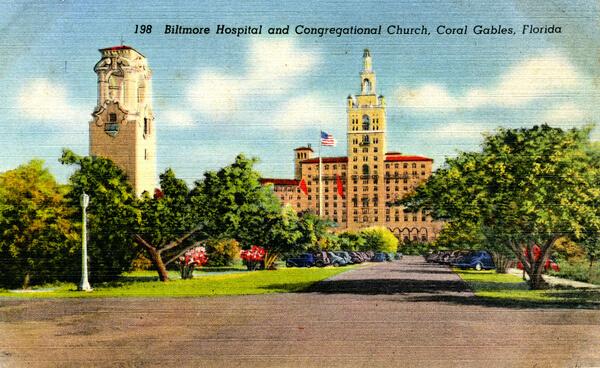

a stack of five “sky homes” of 10,000 square feet each. These are where Codina (in the penthouse) and four presumably like-minded friends will enjoy views that stretch all the way to Key Largo. “I call the five sky homes the cloud,” says Codina, and each will have a his and her bathrooms (Codina’s secret formula for a happy marriage). For all of the units there will be access to a ground floor sound-proofed zoom room, a library, a theater with 20 seats, and a medical room where your physician can take your vitals via telemedicine.
The location of Regency Tower, as Codina dubs it, is a tale in itself. The process began more than five years ago when Cathy Swanson-Rivenbark was still city manager. The city wanted to construct its new Public Safety Building on Salzedo between Alcazar and Minorca. Codina owned a parking lot that occupied half the proposed location.

“Cathy Swanson, when she was city manager, called and said, ‘We want to buy your lot,’” says Codina. “The city had done a study about where the Public Safety Building should be, and they wanted it north of Coral Way. I said it was not for sale, but she insisted and sent us an offer.” In the end, rather than fight with the city, Codina agreed to swap the lot for the existing police and fire headquarter building further south on Salzedo.
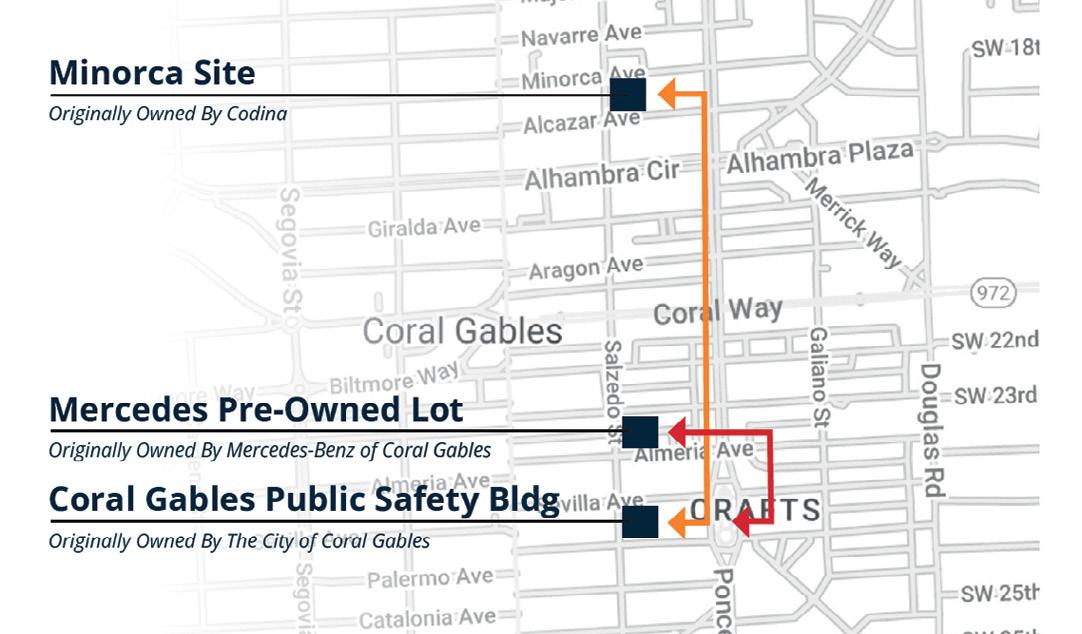
At that point, Codina intended to tear down the existing “brutalist” style building that housed police and fire, much to the dismay of local historic preservationists. But that conflict was avoided by another swap – this one with Mercedes-Benz of Coral Gables. Codina exchanged the police HQ for the dealership’s parking lot on Salzedo at Almeria, where they had wanted to build a garage; the police building had more than 400 parking spaces, just what Mercedes-Benz wanted, and their empty parking lot gave Codina a clean slate to create Regency Tower. “All of a sudden 400 cars found a home, and we
had a site where we could build an over-the-top building,” he says.
“We went through a lot of steps to get into the central business district in a lot that had no [residential] neighbors [and] the swap took longer than I wanted. I am getting to a stage in life where I don’t even buy green bananas when I go to a supermarket,” quips Codina. Nonetheless, the developer went through the process with the patience of someone familiar with the drill. After all, Codina has built a sizeable portion of downtown’s mid-rises, including the Bacardi building, the Merrill Lynch building, the Gables Grand, and the mixed use 2020 Salzedo building that houses Codina Partners’ offices and Bachour restaurant.
In the case of Regency Tower, Codina Partners did not move forward until the project received unanimous approval from the city’s Development Review Committee, Board of Architects, Historic Preservation Board, and Planning & Zoning Department. The final unanimous approval came from the City Commission, which granted a 14-foot height increase (permitting 18 stories) in exchange for a 10,000 square foot park that Codina is giving the city (on the corner of Alme-
ria and Salzedo), and less density (120 units instead of 320). “This is the kind of building we need to bring residents downtown,” Mayor Vince Lago said at the time. “The fact that it is creating green space is hugely important.”
Ground-breaking is now scheduled to take place before the end of 2022, with completion expected in 2024. Codina says he can’t wait to move in. “I wanted a transformational building,” he says, “and I have designed this inch by inch” –right down to the details of creating a special room for Amazon packages so they don’t stack up in the mailroom or lobby, install-
ing a gourmet bistro, a theater, a library, and a telemedicine room on the ground floor, and even carving out room for a dog spa.
“What does right-sizing mean to me?” he asks. “I want only the rooms that I treasure, the rooms that I use, the rooms where I have people come to the house and sit in, and get rid of the stuff I don’t need,” he says. “The other part is improving the quality of life. I want to walk to work, or to Abracci, Zucca, or MesaMar. And to be close to the airport. And medical rescue [the Public Safety Building] is right there on Salzedo, just three minutes away.” ■

The world’s first Bentley branded luxury residences. Bentley Residences will be the perfect match for those looking for luxury house living without the worries and hassle of a house.


Waldorf Astoria Residence Miami offers an experience in transcendence, an exclusive lifestyle, and embedded with a legacy brand that has stood the test of time. With its limitless views.
The tallest tower in Miami Beach, Five Park Miami Beach unites timeless glamour with a new approach to development, with an array of services & amenities including Miami Beach’s first Residents-Only Club.

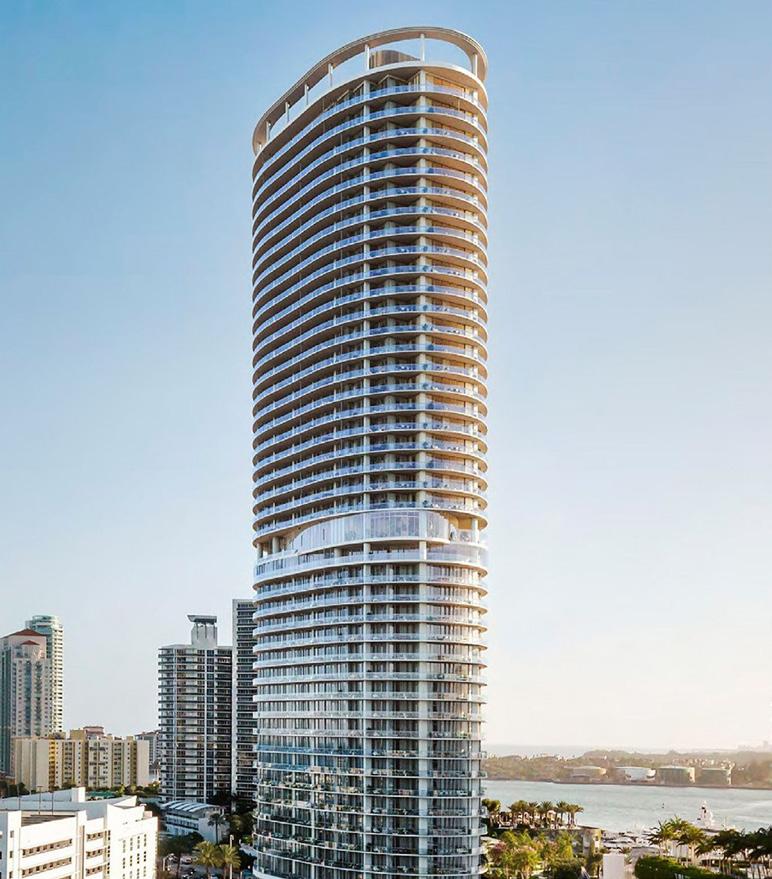

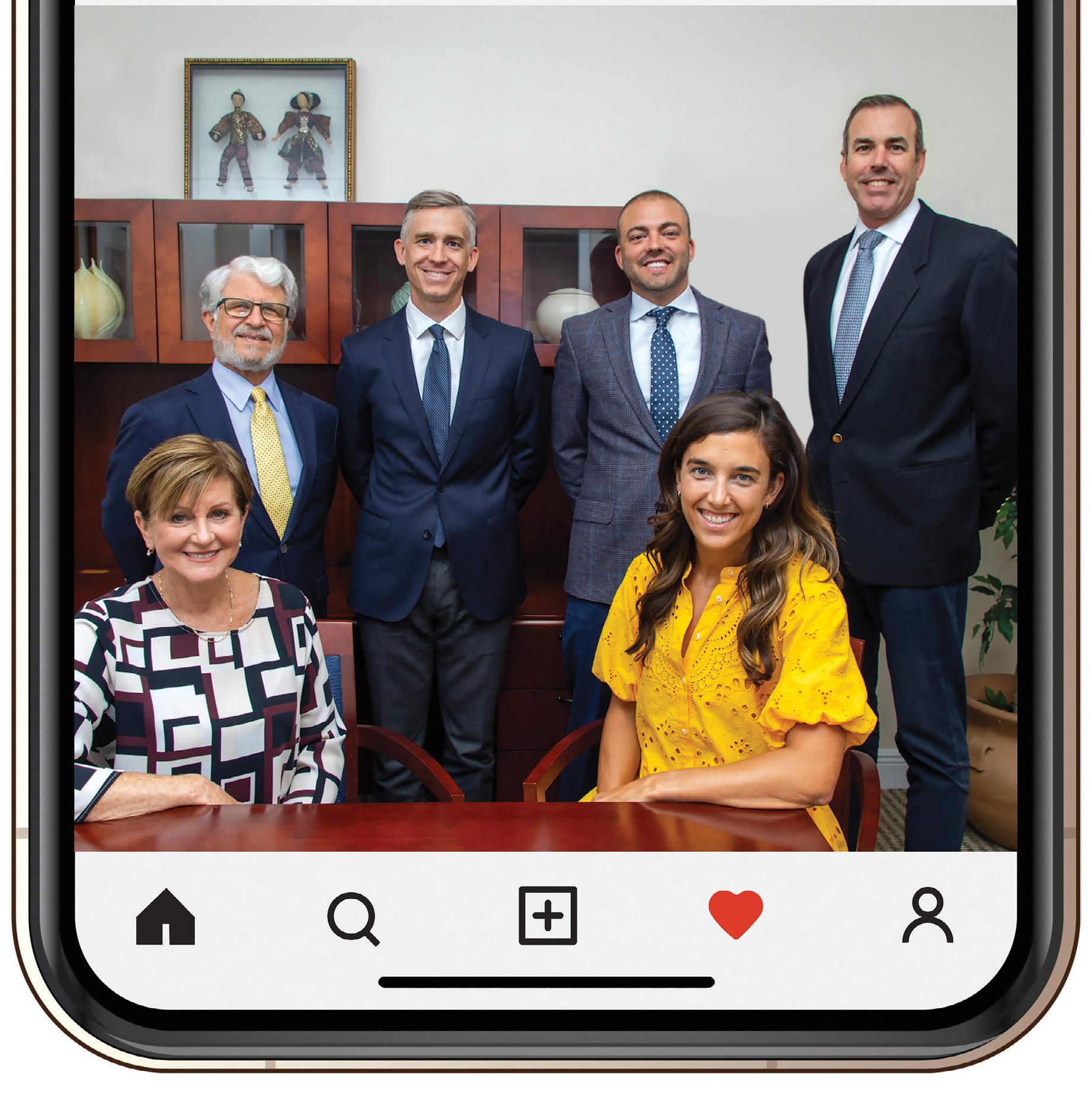

located behind the historic Tropical Audubon headquarters building at 5530 Sunset Drive. You’ll get hands-on experience creating a wildlife habitat and weeding invasive plants under the guidance of resident Master Gardeners. Register in advance at www.tropicalaudubon.org. Group size is limited.
SANCTUARY OF THE ARTS: MAINLY MOZART CONCERT SERIES
You probably know it only as the historic First Church of Christ Scientist, the stately building across from City Hall. But it is now the Sanctuary of the Arts, the new home to preforming arts in downtown Gables (see story pg. 26). From now until June 18, the Mainly Mozart Concert Series will take place in the old church auditorium, in collaboration with the Miami Chamber Music Society. Performances take place every Saturday at 4 pm. Admission is free. Visit www.sanctuaryofthearts.org for more information. 410 Andalusia Ave.
GABLESTAGE: “THE YEAR OF MAGICAL THINKING”
Showing at GableStage from June 3 to June 26 is “The Year of Magical Thinking.” Based on Joan Didion’s award-winning, best-selling memoir, this one-woman performance transforms the sudden, unexpected loss of her husband into a stunning and powerful play. Directed by Bari Newport. Performances Fri. & Sat. 8 pm; Wed. & Thurs. 7 pm; Sat., Sun., & Wed. 2 pm. Tickets $35-$65 online at www.gablestage.org. At the historic Biltmore Hotel, 1200 Anastasia Ave.
ADRIENNE ARSHT CENTER: SUMMER SHORTS
Okay, so you’ll have to venture outside the Gables for this, but the trip is worth it. It’s the 25th anniversary of City Theatre’s short play festival Summer Shorts, which returns to the Arsht Center June 2 to July 2. Fast paced and full of short new comedies, dramas, and mini musicals, it’s perfect for today’s short attention span audiences. Fresh revivals of festival favorites will also be featured, written by some of the country’s best playwrights and performed by a talented ensemble of South Florida all-stars. Purchase tickets online at www.arshtcenter.org for $60 to $75. 1300 Biscayne Blvd., downtown Miami.
Beginning June 19, and concluding on June 26, Frost’s Chopin Festival will host a series of performances at UM’s Gusman Concert Hall, featuring 21 of the most celebrated young pianists and world renowned Chopin specialists. Concerts are free to the public. View full schedule at frost-music-live.miami.edu. 1314 Miller Drive.

Sign up to help the Tropical Audubon Society maintain its near-native Steinberg Nature Center grounds on June 18 from 9 am to 12 pm. The grounds, which include Pine Rockland, Hardwood Hammock demonstration forests, and bird-friendly pollinator gardens, are
Three new exhibits are on display at the Coral Gables Museum this month. “MECHANICS: Recent Paintings by Jefreid Lotti” (showing until Aug. 23) is an exhibition that captures daily life at the mechanic shop where Lotti works, where labor in an industrial setting carried on despite the pandemic (above). “Internal Knot: The World of Zammy Migdal” (showing until July 20) is an exhibit of radical sculpture that portrays the poetry and subtlety of forms that resemble movement in dance. “Painting in Excess: Kyiv’s Art Revival” (showing until Oct. 30) documentsthe diverse artistic histories and newly found freedoms during the collapse of the Soviet empire. Visit www. coralgablesmuseum.com for more information. 285 Aragon Ave.

Early June is your last chance to catch a couple of important cultural offerings. At the Actor’s Playhouse at the Miracle Theatre (280 Miracle Mile) it’s your last chance to see “Murder on the Orient Express,” which runs through June 5. Tickets are $40 for this excellent adaptation of Agatha Christie’s mystery masterpiece at www.actors playhouse.org. At the Lowe Art Museum (1301 Stanford Drive, UM campus) it’s your last chance to view the Radical Conventions exhibition, on display until June 12, a collection of contemporary Cuban-American art. For more information visit www.lowe.miami. edu. Tickets are complimentary. ■

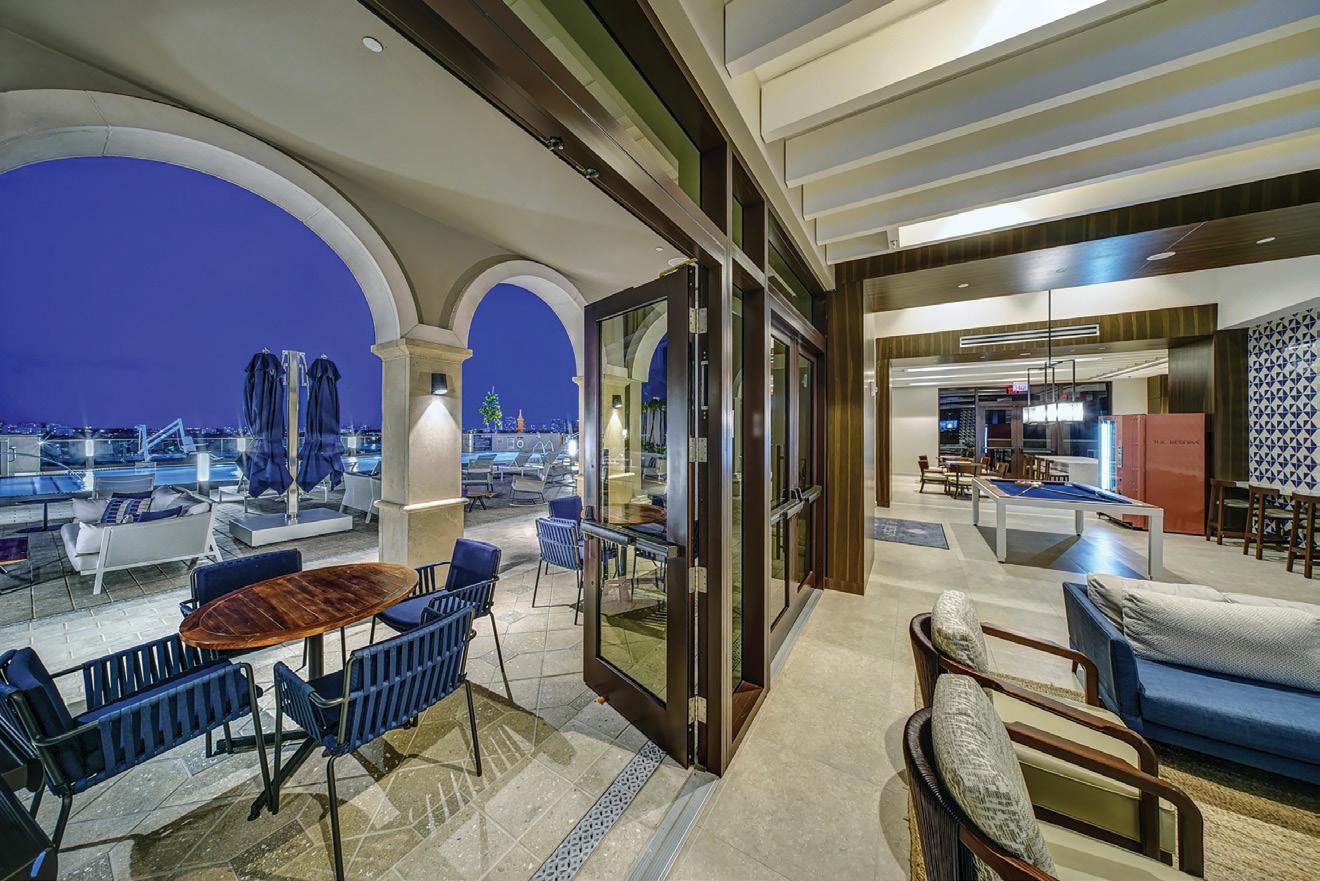


If you didn’t know the history of the Gables, you might think that its tree-lined streets were part of some original forest. Far from it. The original landscape was pine barrens, and scruffy at that. The luscious canopy that drapes over nearly every street was planned and planted.
Today, the greenery of the Gables distinguishes the city from its neighbors. Go to Google Maps and click on “Satellite” and you can see the city’s green silhouette against the grey of urban Miami. The City Beautiful boasts a tree coverage of 41 percent, making it the second highest in the state of Florida behind only rural Gainesville.
Maintaining such abundant landscaping does not come easy, however, and necessitates a dedicated greenspace management team with technical resources and a passionate, experienced leader – in our case, Deena Bell-Llewellyn.
Bell-Llewellyn is the Assistant Director of Public Works in charge of the city’s Greenspace Management Division, a role she recently took on after working nearly five years for the city. Today she has some 25 city employees and a bevy of resources – including an extraordinary digital map on the city’s website showing the location of 39,706 trees in public spaces. Click on any dot to reveal the species of tree, its height, maintenance schedule, and health.
Bell-Llewellyn originally moved to Miami from Georgia in 1991 after visiting during her college years at the University of Georgia, where she studied landscape architecture. She fell in love with the Gables’ greenery and was finally able to return with a job in the city’s Greenspace Management Division in 2017.
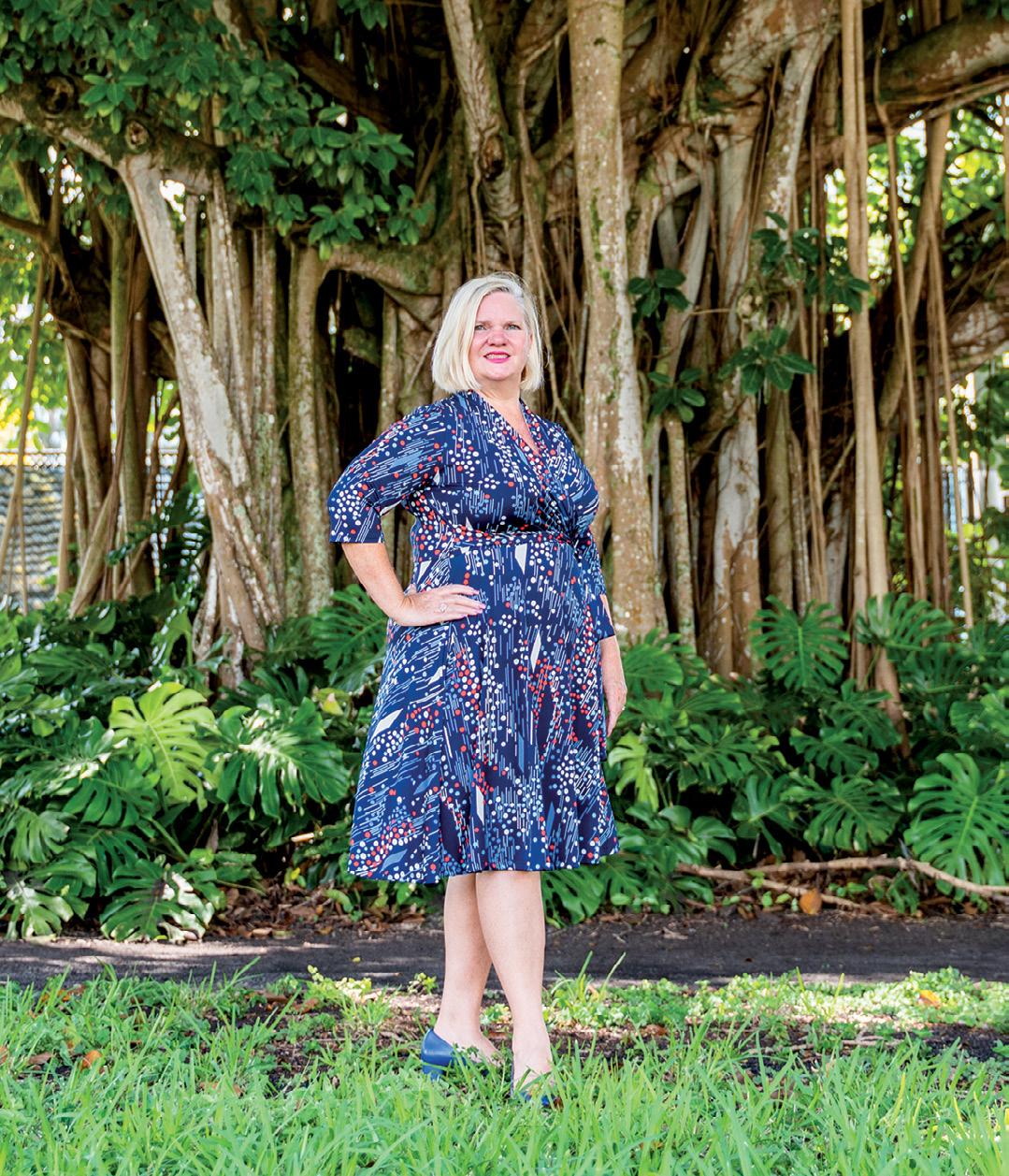
The role of Greenspace Management is to manage and maintain the tree canopy, as well as prune plants in the city’s public rights of way. The division is also responsible for managing everything from lighting to park furniture and trash collection in public areas. When you’re enjoying your day sitting in a clean, well-lit Coral Gables park, you have Greenspace Management to thank.
With 31 years of experience as a licensed landscape architect, Bell-Llewellyn is no newbie to the green world. Prior to working for the city, she owned a private landscape architecture firm, Bell Landscape Architecture, and her experience in designing greenspaces with high-level quality and aesthetics helped prepare her for her current job. The difference between a private practice versus working for the government, she says, is the number of clients. “Instead of having one client to focus on at a time, I now have around 50,000,” she says.
One thing both roles have in common, however, is attention to detail. Besides its interactive map database, the city’s website provides information on pollinators you can plant in the Gables, recommendations for swale landscaping, a list of invasive and banned plants, and a tree guide of recommended species available in local nurseries – among other useful information.
Although Greenspace Management monitors nearly 40,000 public trees in the city, this does not include trees in private residences. These are protected by some of the strongest tree regulations in the country, which make it against the law to abuse trees or to remove them without a permit. The city also
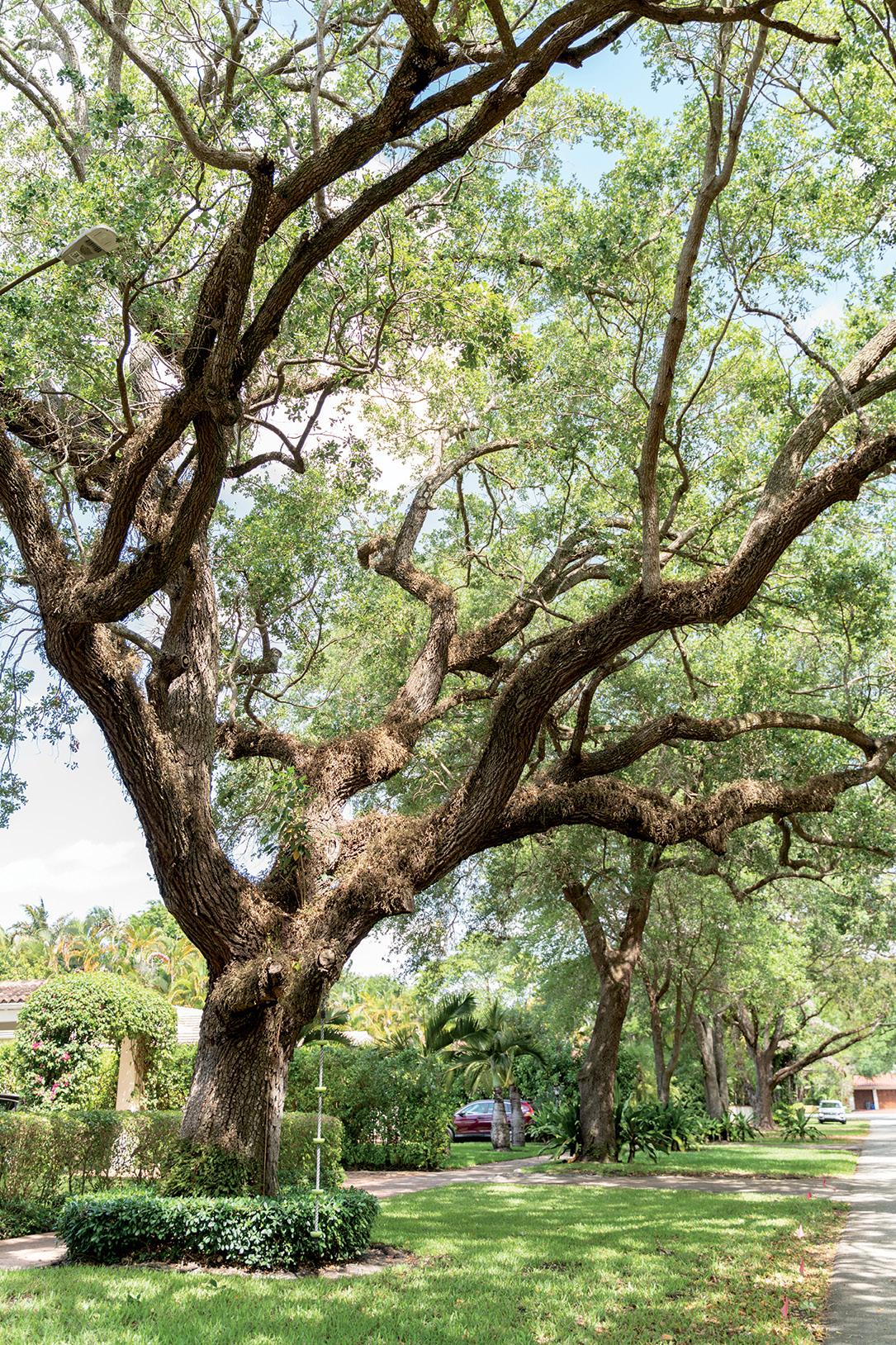



requires landscapers who work in the Gables to register their vehicles and receive educational information from City Hall about noise, proper pruning, and landscaping permitting requests. “We receive about 200 [tree trimming] requests per month,” says Bell-Llewellyn, “but we prioritize the health and safety of the tree when it comes to pruning.” The only time Greenspace Management can enter private property, however, is to assess if a tree can be approved for removal.
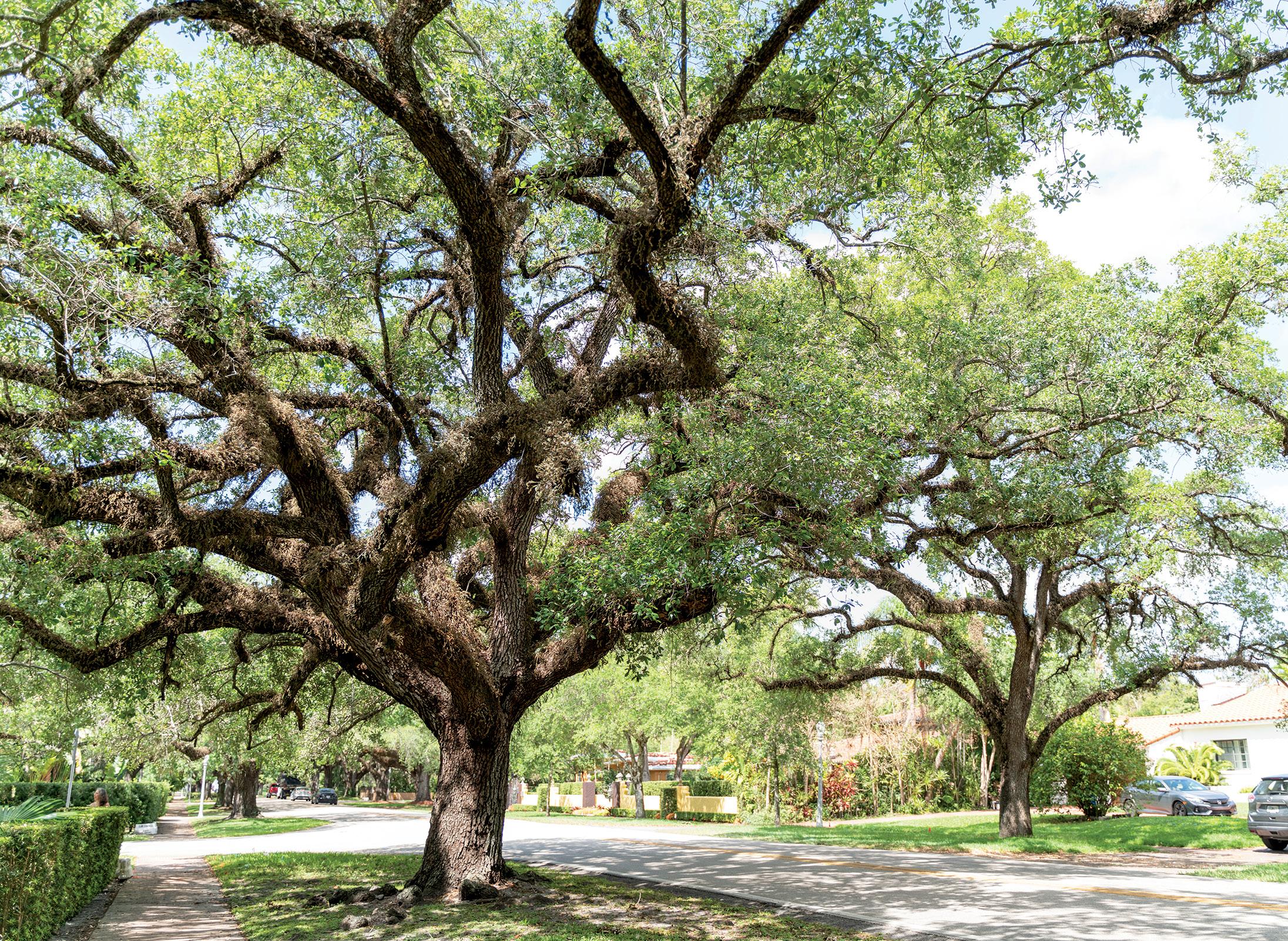
Of course, in a city where trees are so highly valued, a tree removed does not go without a tree planted. The Tree Succession Plan, for replanting when trees become sick, damaged, or die, solidifies this, and requires owners to pay $1,500 per each 500 square feet of tree canopy removed – money used to pay for new trees planted in public
spaces. Around 125 trees are removed due to illnesses or damage from weather or traffic each year in the city, and thanks to the succession plan, about 125 to 150 are planted in that same year to replace the loss.
Not every tree in the Gables is looked upon with favor, however. According to Bell-Llewelyn, most people complain about Black Olive trees, which make up nearly a quarter of the canopy, because they stain cars and sidewalks with residue from “berries.” These stains are actually feces from bugs residing in the trees, for which 2,000 Black Olive trees are treated each year with insecticide. On the other hand, the Gables’ favorite tree? The Live Oak. “They are resilient and native, they don’t do any damage, and are great for attracting wildlife,” says Bell-Llewellyn. “They also have plenty of shade.” ■
TOTAL NUMBER OF TREES IN PUBLIC SPACES: 39,706
THE AGE OF THE CITY’S OLDEST TREES: 100 TO 125 YEARS
NUMBER OF TREES REPLACED ANNUALLY: 125 TO 150 FOR MORE INFORMATION: CORALGABLES.COM/GREENSPACE
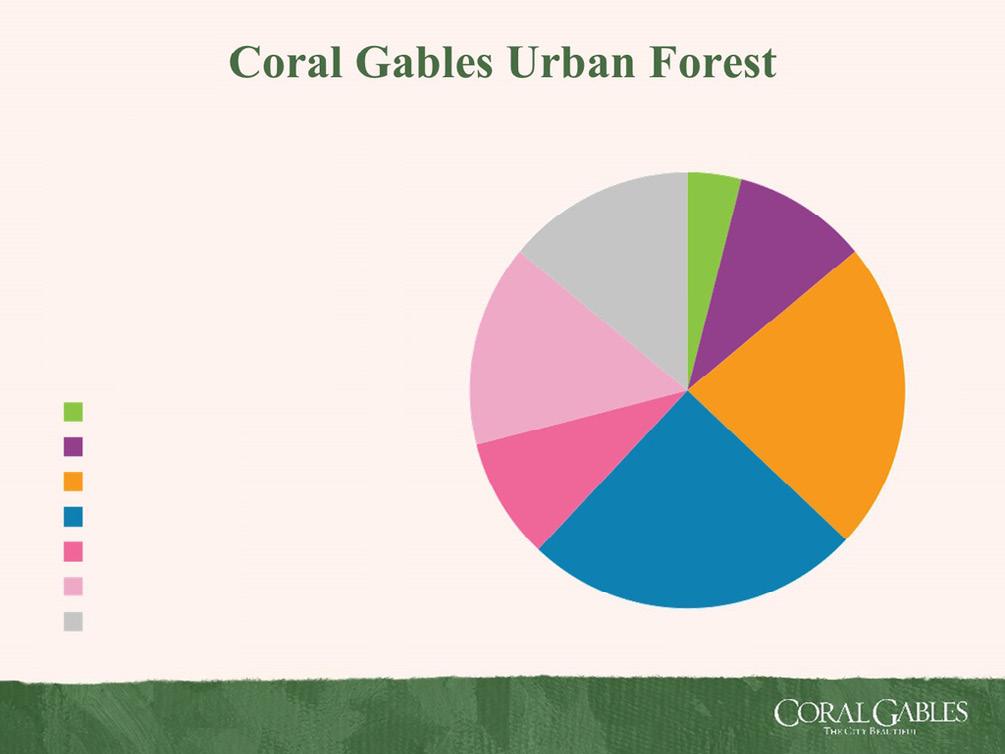


Chef Michael Bolen knows that most upscale restaurants in the Gables wouldn’t dare serve their customers anything resembling a Dorito, a snack more often associated with football Sunday than fine dining. Bolen, however, doesn’t care.
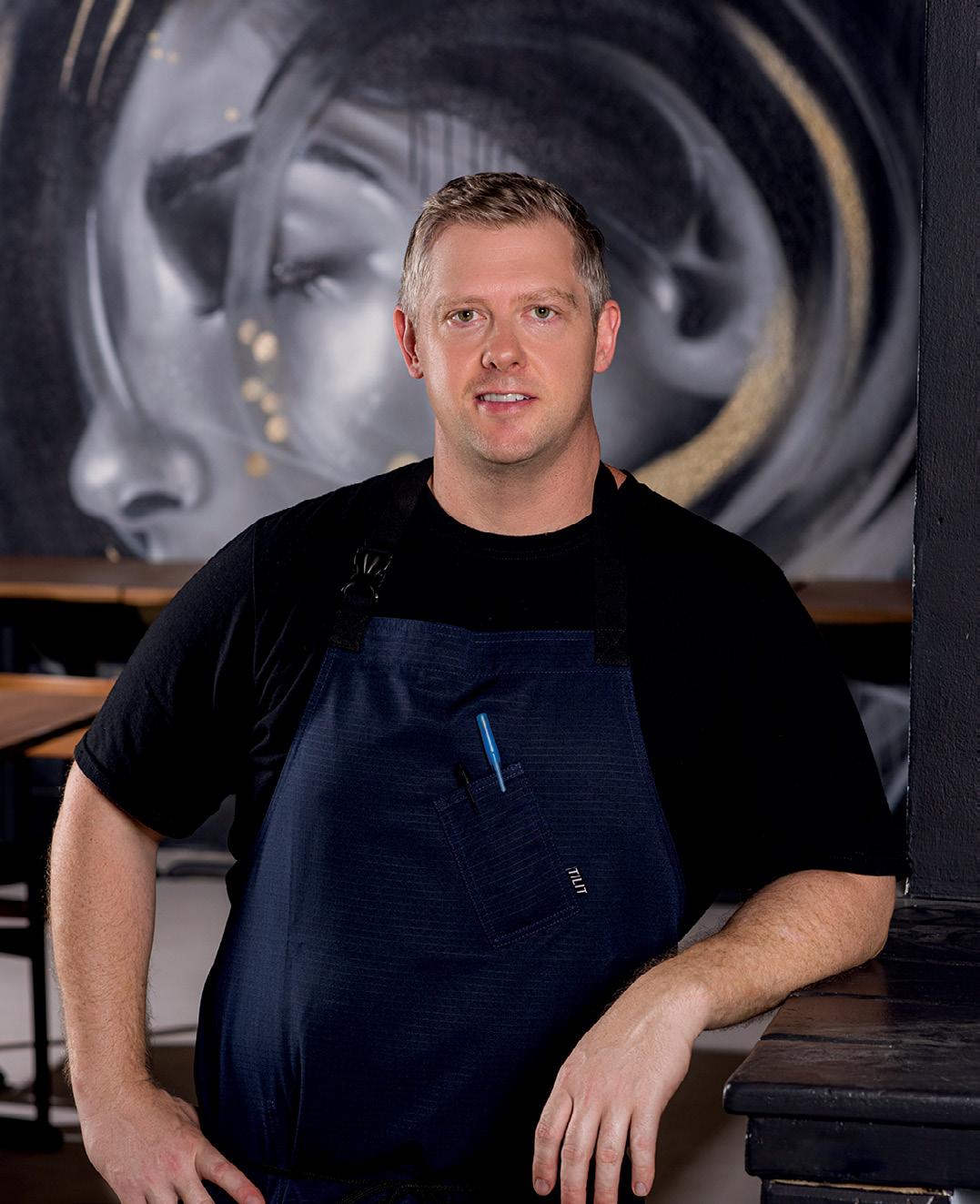
As the owner of the city’s newest tasting restaurant, Lion and the Rambler, Bolen wants to win the hearts and minds of adventurous diners with a nine-course tasting menu as much inspired by the three-Michelin-star Denmark restaurant Noma as the humble Cool Ranch Dorito.


And although his “infladita,” a puffed chip filled with koji buttermilk and finished with a salty seasoning powder, won’t likely fool any potato chip lovers, Bolen is confident it will satisfy the customers. “It’s mind-blowingly good, and I think that’s the kind of fun we want to have,” says Bolen. “But it’s very sophisticated too, and I think that’s kind of what we’re going for here.”

After working his way through restaurants like Boston’s since-closed French mainstay Sel De La Terre, a Julia Child favorite, Bolen says he’s aiming to provide a more casual dining experience without sacrificing the quality. “I don’t really want to do the tablecloth thing anymore,” says Bolen. “It sounds serious when I talk about the food and the depths that we’re going to, to make something really special, but we want the diner to come in and just have fun.”
At the start of the COVID-19 pandemic, Bolen moved from San Diego to Coral Gables with his wife Angelina and their two daughters, ages three and eight. Shortly after the move, his team took over the property at 804 Ponce de Leon Boulevard, formerly home to chef Giorgio Rapicavoli’s popular Eating
House, itself a shrine to wildly inventive American cuisine. Bolen renovated the interior to reflect both his dream restaurant and the city he now calls home. Inside, stone-gray walls reflect warm light in a cozy interior, where smells of soy and herbs waft from the kitchen. The restaurant’s handmade ceramic dinnerware is an aspect he planned years in advance.
As you might suspect, at Lion and the Rambler, everything is made from scratch, from the creme fraiche down to the finishing salts, which are extracted from Miami seawater and hand-delivered to the restaurant by a local fisherman. “The whole goal here is that it’s almost a workshop for chefs to go deep, deep, deep into technique,” Bolen says. “I don’t think there’s a single dish on this current menu that takes less than 10 days to make.”
Months before his restaurant’s June 1 opening, Bolen tinkered with his nine-course menu of fermented plantains and spicy poblano guava, of Mandarin curd and sweet potato with caviar, working at every detail to the point of near insanity. “The menu literally changes every other day,” says Bolen. “I obsess over every little detail of every dish.” Now you can see – and taste – if it was worth it. ■








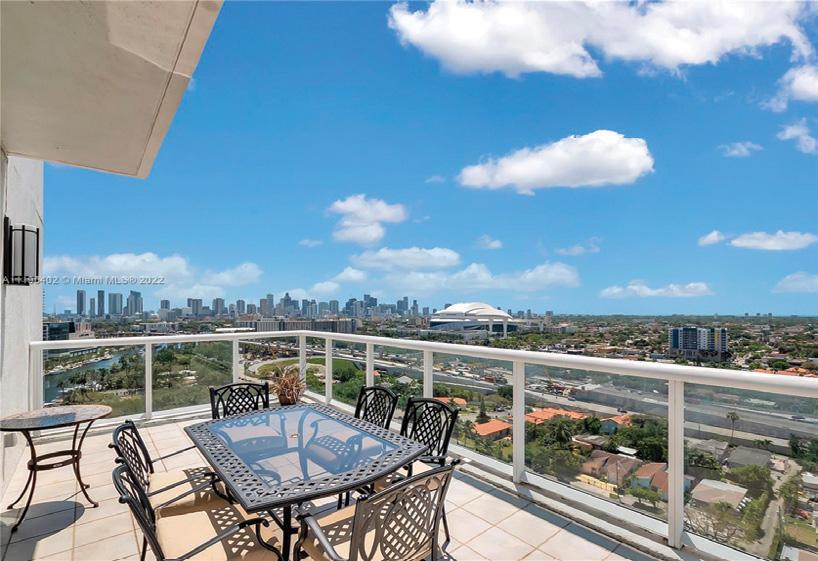


BITES
Carnivore Heaven
 BY ANDREW GAYLE
BY ANDREW GAYLE
rowing up in a tiny village in the south of Brazil, Neimar Hensel and his brother looked forward to Sunday afternoons. “After church we would come home and start a fire [for cooking]. It was the highlight of the weekend,” he says. The boys would help roast various cuts of meat, and then slice them for serving. “When we were young, we were each given a knife. My dad said, ‘This is not to cut with, but to create with.’”That cultural love of fire-roasted meat, and the ceremony of carving and serving it, is writ large in the new Fogo de Chão restaurant that Hensel manages at the Plaza on Ponce. The lofty space with an open, flaming kitchen at one end is a veritable shrine to the Brazilian way of cooking beef, as well as pork, lamb, and chicken. Diners can order a la carte from the menu, but most opt for what is dubbed “The Churrasco Experience,” an open-ended parade of more than a dozen types of meat served by “gaucho chefs.”
The gaucho chefs, explains Hensel, are each a specialist in the meat they bring to your table on a skewer. The flank steak gaucho chef, for example, cooks his (or her) flank steak in the kitchen’s flame-pit before marching it among the diners. At your behest, they will slice a piece, based on your preference for rare or well-done, which you then grab with tongs. “Certain meats are assigned to certain people,” says Hensel. “We train them how to work the grill.”
Diners who order the Churrasco Experience ($61) pace themselves with coaster-sized discs that are red on one side, green on the other. Leave it green and the meat keeps coming, turn it red and the spigot stops. I had to go red when I saw I had a half dozen types of meat on my plate: Beef ribeye, spicy sausage, lamb pincanha, pork ribs, filet mignon and Wagyu New York strip.
That Wagyu was not part of the churrasco experience. It comes under the menu heading “Add an Indulgent Cut” and is really the top of the beef food chain. You can add either a Wagyu ribeye ($145 for 24 oz.), a Wagyu New York strip ($135 for 20 oz.), or a dry-aged tomahawk ($98 for 36 oz., bone in). Our Wagyu strip was easily enough for our party of four, served on a hot block of Himalayan salt placed center table. While all the meats we ate were excellent cuts, full of rich juicy flavors, the Wagyu was somewhere off the chart. “It’s hard to go back once you have tasted the Wagyu,” our waiter crooned, and he was right.
ABOVE AND MIDDLE: THE INTERIOR IS LUXURIOUS WITH BOLD WARM LIGHTING
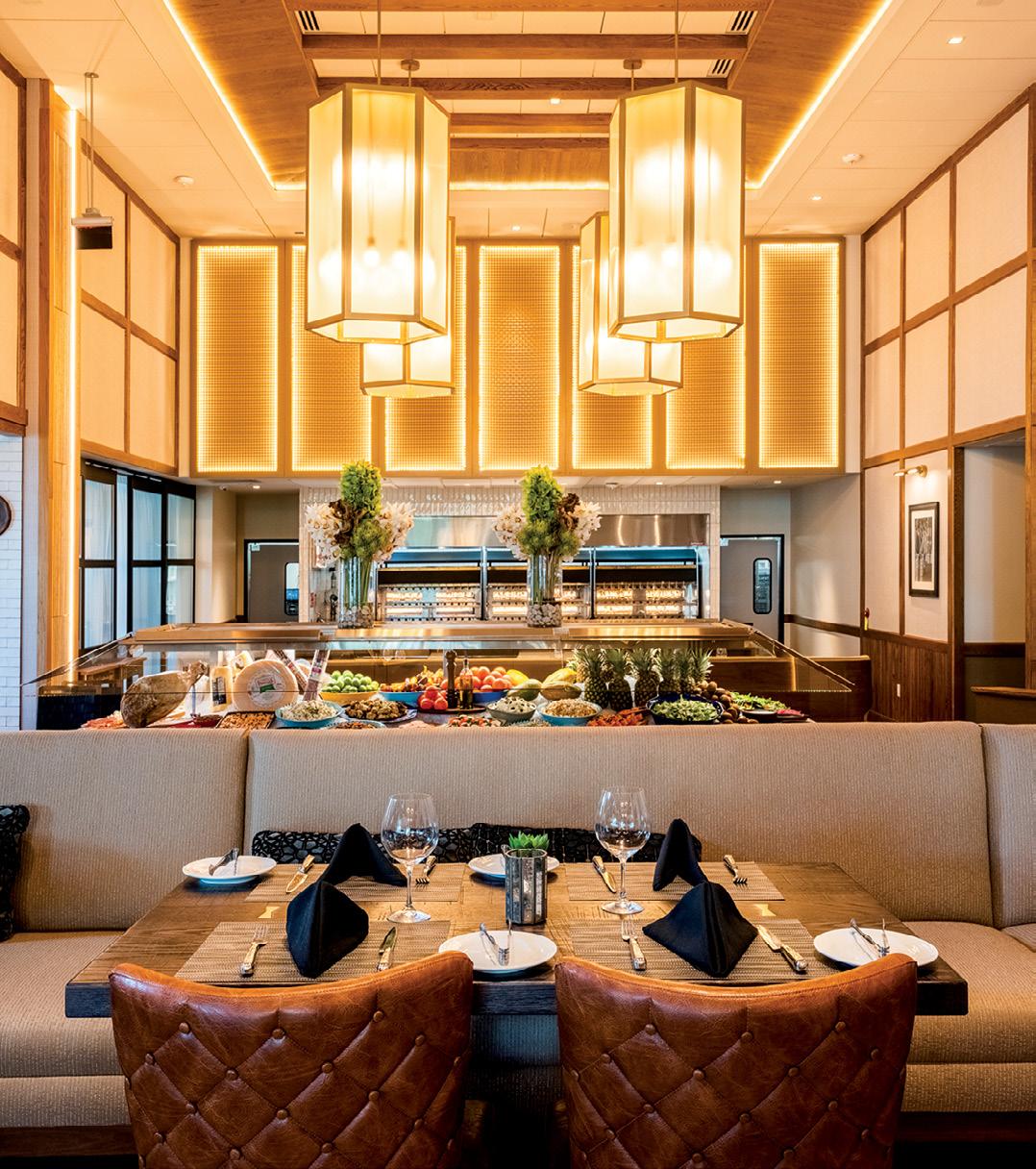
BOTTOM: THE EXTERIOR AT THE PLAZA
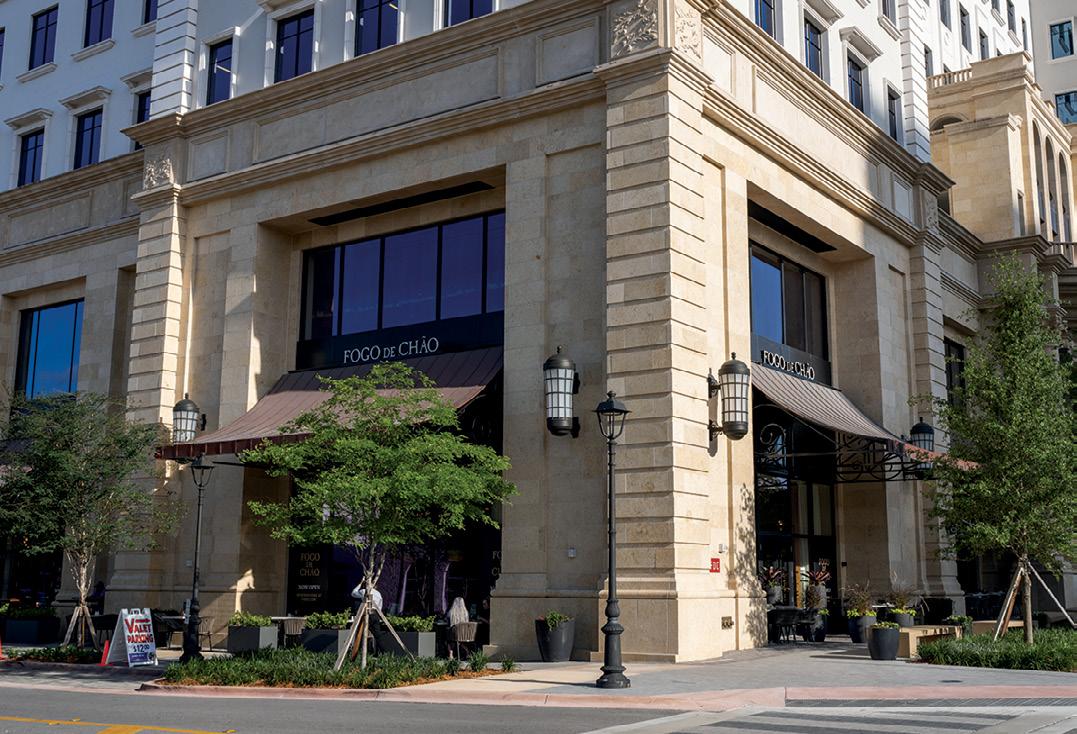
OPPOSITE PAGE
TOP: PICANHA ON THE SWORD
MIDDLE LEFT: DRY AGED TOMAHAWK
MIDDLE RIGHT: FOGO BACON
FOGO
786-297-8788
There are other choices on the menu, such as Chilean sea bass, pan-seared salmon, and cauliflower steak, and though Hensel insists that Gableites order these more than at most other Fogo de Chão locations (he worked first in Orlando and South Beach), most come with carnivorous intentions.



The interior of Fogo is as grand and muscular as the culture of meat that it enshrines, with abstract wagon wheel chandeliers overhead and a massive gaucho bas-relief carving dominating one wall. Even the silverware has a heavy, macho feel to it. But there is also a softer edge, a sophistication to this red-blooded experience, with a samba soundtrack and tulip hanging lanterns that add a sheen of warm light to the golden cast of the main room. There is an upstairs bar as well for Fogo’s caipirinha cocktails, before or after dinner, and a butcher’s shop where Fogo does its own aging and carving, and where you can buy meat to take home and cook yourself. But we doubt you can cook it as well as they do. ■

“WE BUILT THIS NOT FOR THE ACCOLADES OR TO GET ANY OTHER AWARDS, BUT BECAUSE IT’S WHAT WE BELIEVED IN. IT DOES MAKE IT GRATIFYING BECAUSE IT IS MY PASSION.”
CHEF NIVEN PATEL ON HIS TWO-ACRE FARM, WHERE HE GROWS ORGANIC CROPS, INCLUDING FRUIT AND VEGETABLES THAT END UP IN HIS MENU.
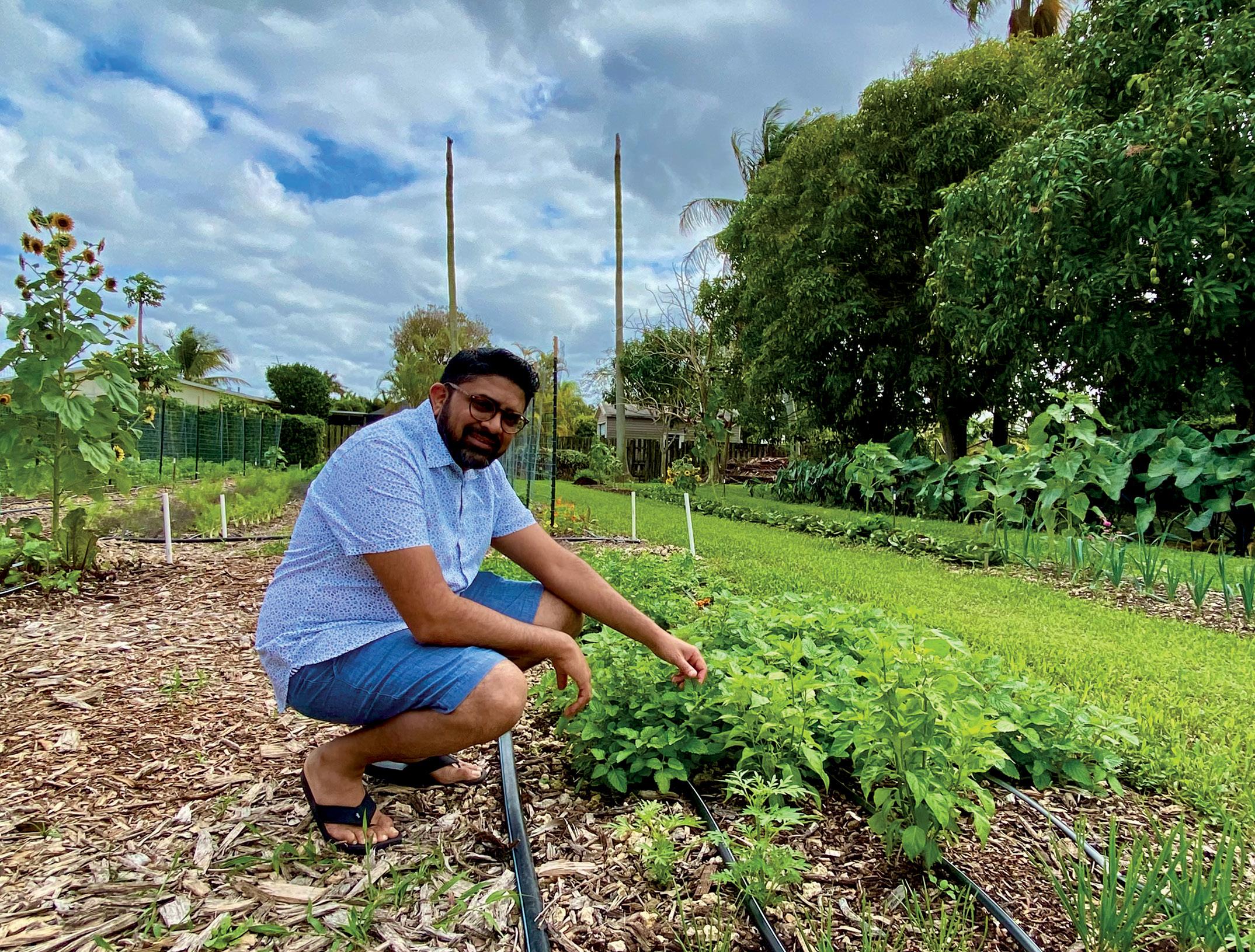
As I pull into the unassuming farm in Homestead, a low and wide ancient-looking tree captures my attention. I wonder if the grapefruit-sized ornaments that hang from it are edible. I’d been told that Chef Niven Patel collects saplings and seeds from all over the world. This had to be one of them. After he greets me warmly, he holds one of the fruits, as though seeing it for the first time. “This is custard apple I brought from India,” he says. “Exotic varieties grow here like they grow in Southeast Asia and India. When the flesh is soft it’s ready to eat in a few weeks.”
Welcome to Rancho Patel, the two-acre farm of the award-winning chef behind two of the Gables’ most celebrated new restaurants, Mamey and
Orno, both in the THesis Hotel on US 1 across from the University of Miami. Literally down to earth unless we were walking, Patel was not who I expected to meet. As a James Beard nominee and one of Food & Wine Magazine’s Best New Chefs of 2020, I expected less humility from a man who was featured on the top fold of the New York Times Sunday food section.
“We built this not for the accolades or to get any other awards, but because it’s what we believed in,” he says of his farm, which is also his home. It’s where his twin girls are being raised, able to wake up and pluck the sweetest tomatoes fresh off the vine. “It does make it gratifying because it is my passion.”
Patel, who first established his reputation locally with the
Top producer Mauricio J. Barba has been a mainstay in Miami’s uber competitive high-end real estate market since 1994. Respected in his native community by clients and colleagues alike; he has logged top honors for elite performance in his field. Mauricio is connected worldwide but specializes in Coral Gables, Coconut Grove, Key Biscayne, Brickell, Village of Pinecrest, South Miami, Palmetto Bay/ Falls area and the Beaches. His expertise is demonstrated through his ability to facilitate trouble-free transactions winning him clients for life who also become friends.

Mauricio enters every room with confidence and professional approachability. But more importantly he is prepared and precise, saving you time and effort. Clients rely on him to deliver and he takes the responsibility very seriously. “People trust me with their single largest asset. It’s a role that drives me to push for excellence every day. I give 110% because my success is their success.”
305.439.8311
mauricio@miamisignaturehomes.com
MiamiSignatureHomes.com
Coral Gables | $3,750,000


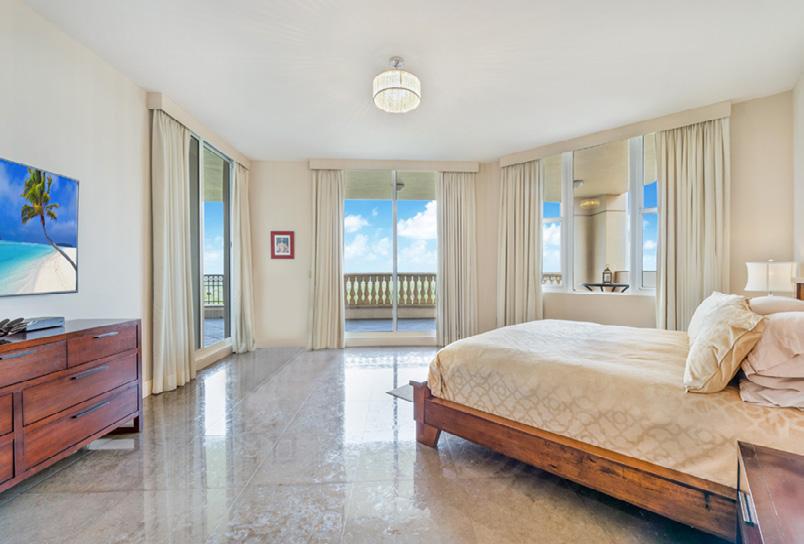

4 beds | 4.5 baths | 2-car | city+golf course views | 4,756 adj sf | 5,402 total sf
Residence LPH03 ~ This full-floor sky home with 4111 SF of living space + 1291 SF of terraces boasts phenomenal vistas of the golf course, downtown, The Biltmore, Coconut Grove, and even a peek of the bay. Timeless finishes such as limestone floors + marble baths grace the home, while natural light--and views-- filter through the floor-toceiling windows. Its floor plan consists of a private elevator vestibule at center with the main suite + 2nd bedroom suite on the east, and kitchen, dining, laundry + 3rd and 4th bedroom suites to the west. Why buy here? You can stroll to 40+ restaurants, shoppes, theatre + parks. Gables on The Green is undergoing a full modernization to the common areas, exterior, gym + lobby. The Seller is covering these costs. [LPH03 aka 1603]. SF per developer plans.

Ghee Indian Kitchen in Kendall, got the idea about eight years ago that he should be growing the food he cooks. While the farm to table movement is now well established, back then his decision was based, he says, on a friend who cut a tomato in half and threw the rest into the trash. “He made me see how most people do not understand how hard it is to grow,” he says. “So, I said, ‘You know what? Next year we are going to start a farm.’” And so it began, though not without fits and starts.
“We got all the irrigation entrenched [but] I had no idea what we were doing,” he says. “We ordered hundreds of varieties of rare seeds. Initially we were like, ‘What can we buy that’s cool?’ We put it in the ground and it started growing, and then it died just as quickly. I’d have a whole row of kale and overnight it would be eaten up by bugs.”
That was seven years ago. Now Rancho Patel has what the chef calls, “a healthy ecosystem.” These include flowers that help protect the organic produce. “They act like natural pesticides. The marigolds, sunflowers… they are all very nurture-some, so they eat this versus your veggies. They are kind of sacrificial.” Then there are the ladybugs and bees doing their part with help from another local farmer, Laura Sutton, who is typically seen behind the helm of a wheelbarrow.
The front part of Rancho Patel holds most of the fruit trees: custard apple, a little fig tree, lychee, a papaya tree that “kind of snuck in,” and 15 mango varieties. “We’ll actually pick the green mangoes from it to do a green mango pickle,” says Patel. “These provide over 1,000 pounds of mangoes to last us through the year.”
Patel’s extensive travels, along with a year in Florence, Italy, helped create his appreciation for seasonal, local produce. But, he says, “What really got me into this was when I was a chef in Grand Cayman in a
place called Brasserie. When I took over, they had a farm and two little fishing boats… Every Friday they would introduce me to a local grandmother and bring us into the kitchen and cook a Caymanian dish… Seeing the process from the seed to growing it – to appreciate how everything you see here takes four to five months of growing – that is really what got me into farming.”
As our walking tour continues, we stop to smell a makrut lime tree. As if revealing a secret he announces, “This. This is what makes Thai food Thai.” The immediate smell of the leaf confirms that.
Then we enter the back area of his property, where the vegetables are grown. “Organic, that is what we do right here. I love the dirt. I don’t like hydroponics or anything like that,” he says. About 20 percent of what is used in his three restaurants grows here, the rest coming from local farmers.

The first row of vegetables he shows me is for taro leaf –patra in Indian. He says they make a fritter out of it. Planted behind these is a variety of bok choy from Southeast Asia called tatsoi. Then there is the nasturtium, about which Patel explains, “The leaves, flowers, and seedpods are all edible with an almost mustard-like taste. It is super crazy, but we add these small yellow flowers to salads…. [it] gives a little burst of flavor.”
Patel carries several menus in his head, but not everything is decided ahead of time. That is one of the joys of farm to table. “Like that (Siberian) kale just harvested,” he says. “Yesterday, I went in with no thought of kale, and then I took it to the restaurant. It was like, ‘What are we doing with 40 pounds of kale?’ So, we made a braised green dish and it was awesome.” This creative

TOP: LAURA SUTTON, A LOCAL FARMER, ALSO LENDS A HAND... USUALLY BEHIND A WHEELBARROW!
MIDDLE & BOTTOM: PATEL’S RESTAURANTS REVOLVE AROUND THE GROWING SEASON AND WHAT IS AVAILABLE AT ANY GIVEN TIME.
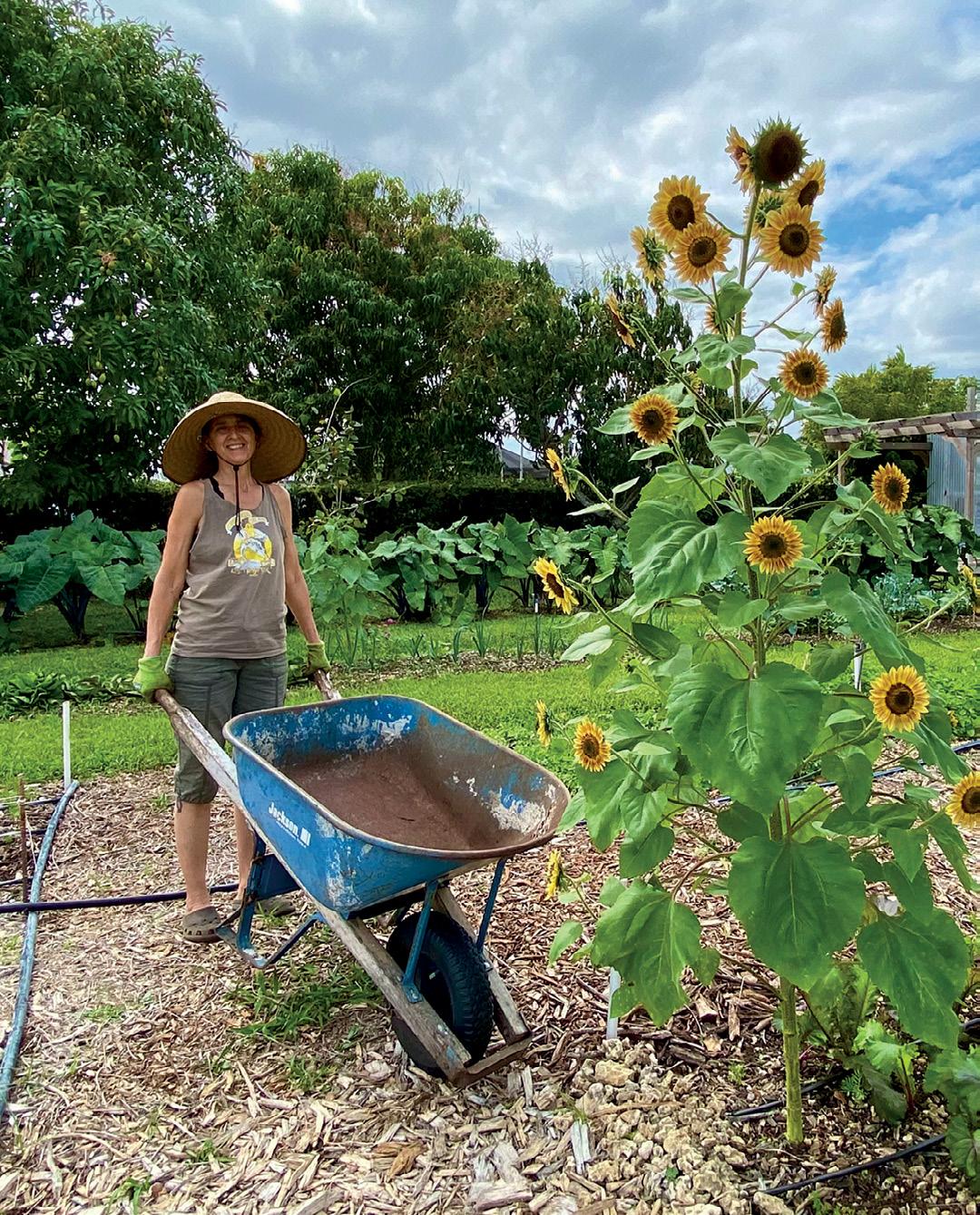
flexibility “is what keeps me excited, inspired – even the team – every day when I bring stuff.”





Purple broccolini will start shooting up soon and sweet potato will again be harvested next year. “Here are garlic and chives, and the beauty of these is you just snip them back and they keep growing. There’s lemon balm right here and some leeks that just started growing.”
Then he points out a patch of radicchio, and I notice tomatoes and lemongrass growing intermittently among the rows. He calls these “volunteer plants” from a harvest three years ago. He then points to the arugula: “In Orno right now, we make a little pesto out of this for a tomato dish.”

I’m then shown Chinese celery, which is smaller and with a more powerful taste than the Western variety. Patel shows off some fennel he’s planted from seeds brought
back from Italy. Carrots are lined up next, reserved for an upcoming farm dinner he has planned. For these events, the seating is arranged at outdoor tables. “I love having people experience this,” he says, watching them change their perspective on food when they eat it right next to where it was grown.
There is beauty in how a restaurant can revolve around the season, Patel says, and there is a rhythm to the process. He mentions that by summer, the eggplants will start producing, and that in two to three weeks the tomato plants will fade away and beans will start growing in their place. The menu is never the same, but when pressed, he says that if he had to eat only one dish for life it would be, “Comfort food. Indian comfort food. Take all these vegetables, and lentils and rice, and life is good.” ■
The original facelift operation dates back to the early part of the 20th Century in Germany. It involved relatively short incisions in front of the ear to lift the sagging cheek skin, similar to today’s “mini-lift”, but obviously this had its limitations.
Not a whole lot changed until the late 1960‘s, when plastic surgery legend D. Ralph Millard (the former forty year long Chief of Plastic Surgery at the University of Miami), despite being a maverick renowned worldwide for pioneering reconstructive techniques for congenital and cancer related deformities, decided to tackle the most important challenge of even today’s facelift - the restoration of a youthful jawline. He approached the neck through a short incision under the chin, removed excess fat and tightened the lax neck muscles and skin from the sides via incisions concealed behind the ears, ushering in a new standard in facelift results.
The next major innovation occurred in the mid/late 1970’s when surgeons in France discovered the anatomic presence and importance of tightening the facial infrastructure, referred to euphemistically as the SMAS layer. That inspired others, notably Sam Hamra of Dallas, in the late 1980’s to delve yet deeper into what he coined the ‘deep plane’. (It’s worth noting that today’s colloquial use of the term ‘deep plane’ is rather loose referring to anything below the skin layer.) Over time and with more experience, it became apparent that restoring tone to the facial infrastructure, be it SMAS or deep plane or deeper yet, was important to obtain improved, more natural and longer lasting results than limiting the procedure to the earlier tightening of the skin only.

Master plastic surgeons Bruce Connell of San Francisco and Daniel Baker of New York, propelled the art of facelifting to new heights through skillful and artistic management of the SMAS and the skin via aesthetically placed incisions along natural lines around the ear, respecting the principle of aesthetic units promoted by Millard.
In the 1990‘s, Sydney Coleman of New York, began to remind us of the importance of considering the changes in facial volume with aging, based much on his observations and experience with HIV/AIDS patients in the 1980’s whose dramatic loss of facial fat made them appear much older than their actual age. This led to a new emphasis on facial volume restoration with fat transfers and the emergence of a plethora of facial fillers.
So, what constitutes a modern facelift today? As always, it depends on the specifics of a particular patient, most importantly their unique anatomy, their aesthetic goals and expectations (and realistic they must be). Starting in their 50‘s, most patients will start to manifest some degree of jowling and neck relaxation. A youthful jawline is fading. Upper eyelids start becoming heavy. An overall tired look starts emerging. Some develop significant facial volume loss, others don’t. So individual treatment options need to be reviewed and pros and cons considered. Many patients will get much improvement with a ‘Lower Face and Neck Lift’, along with removal of excess/droopy upper eyelid skin. Some might benefit from a brow lift but many don’t need it. ‘Less is more’ is a helpful philosophy to keep in mind with all of this.
... We now have numerous excellent modern modalities to help us age as gracefully as possible vs. the benign neglect known as “natural aging”...
Stephan Baker MD
Today’s facelift does need to address the laxity of the underlying infrastructure- the SMAS/muscle layer AND the sagging skin which also must be lifted and removed, and its remainder redraped (lifting up your crumpled bedsheets in the morning and laying them down smoothly provides a good visual). Placing the lifting forces at the infrastructure level below the skin via SMAS tightening unburdens the skin from having to hold up the face through excessive skin tension and thus helps to avoid the obvious and highly undesirable ‘pulled’ look, as well as unfavorable scarring and distortions.
Volume restoration/addition with filler or fat can be helpful but not everyone needs it at the time of facial surgery. Fillers after surgery do help with many lines that surgery cannot address, as does Botox. They also help to maintain your facelift result through precise, targeted volume addition. Cosmetic dermatologic skin care always is beneficial.
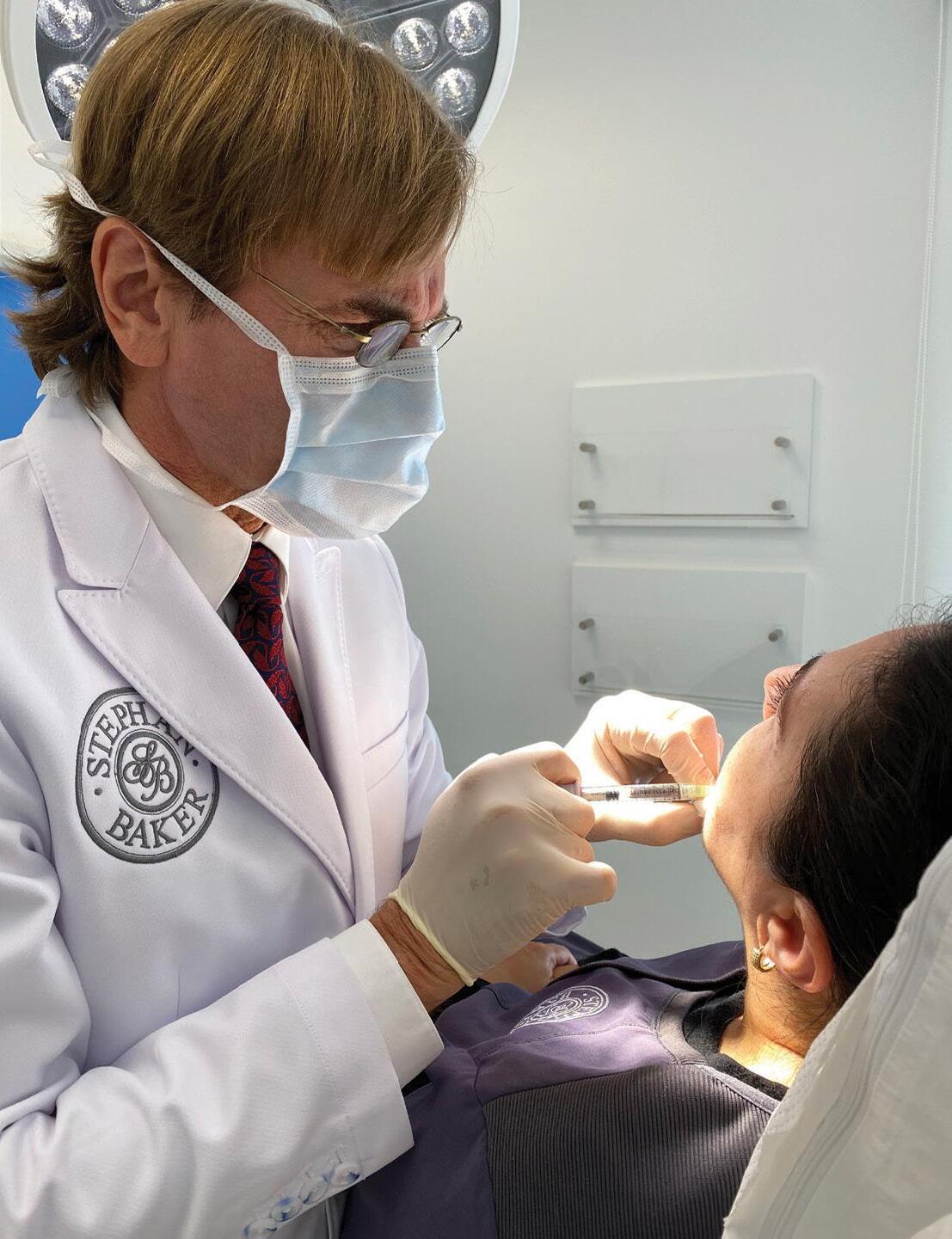

So, what’s the same over the last hundred years? The quest for beauty and ‘the fountain of youth’ continues. No one particularly likes to age or start looking old, especially in our youth obsessed, social media driven culture. Many of us want to put up a fight against our inevitable physical decline, at least as best as we can. We now have numerous excellent modern modalities to help us age as gracefully as possible vs. the benign neglect known as ‘natural aging’.
What to do (and what not to) benefits from an artistic sense and eye, plus much experience, on the part of your plastic surgeon and/or cosmetic dermatologist so as to end up with a refreshed appearance while still looking yourself.
Let’s also not forget the major benefits of what is (or should be) under your control - disciplined living, good mental and physical health, routine exercise and sound eating habits. All of it impacts the way you look, and age. Plastic Surgery and Cosmetic Dermatology are just humble allies in your age management battles.
As always, research and reflect carefully before proceeding with any elective aesthetic surgery or procedure to optimize your chances for happiness after.
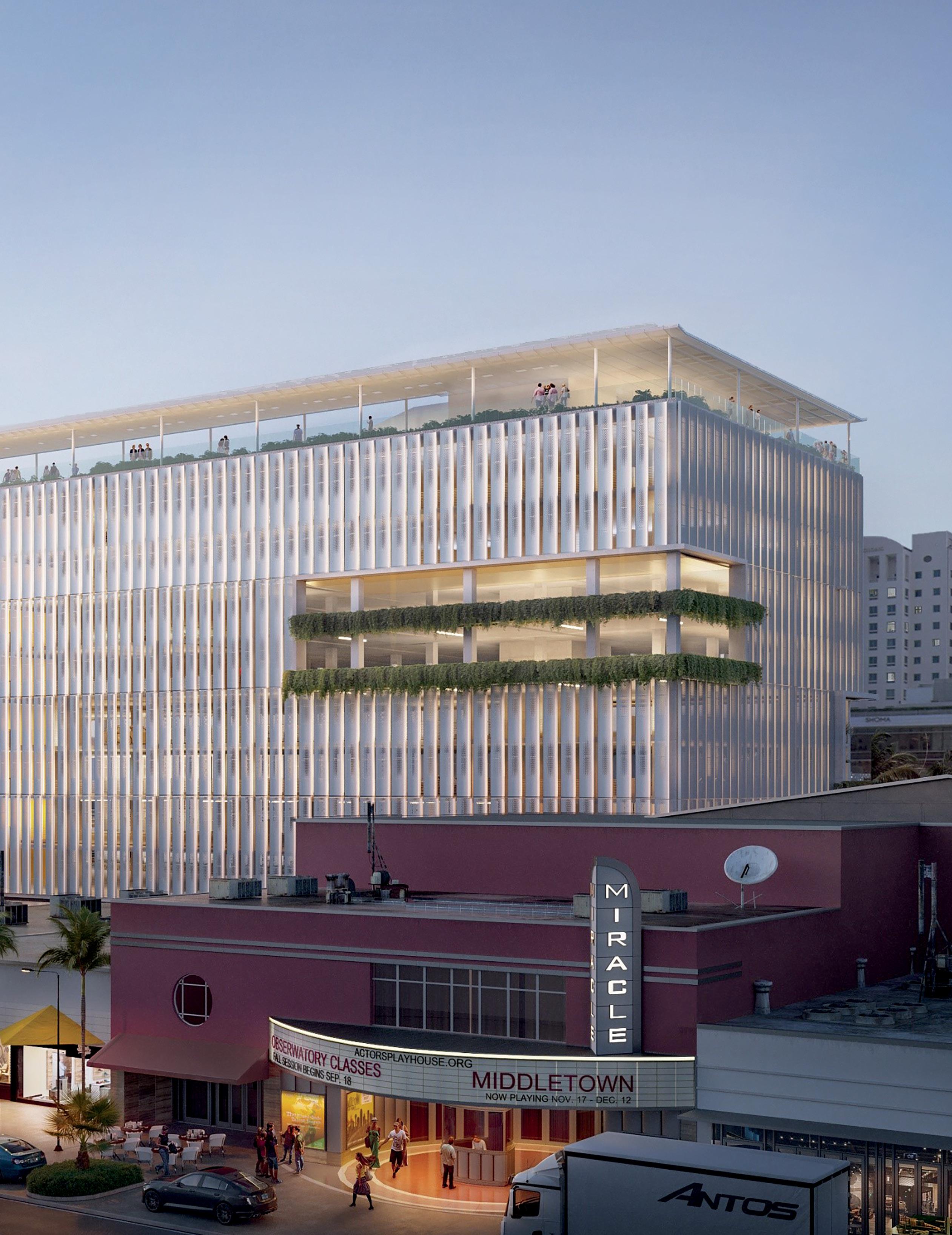
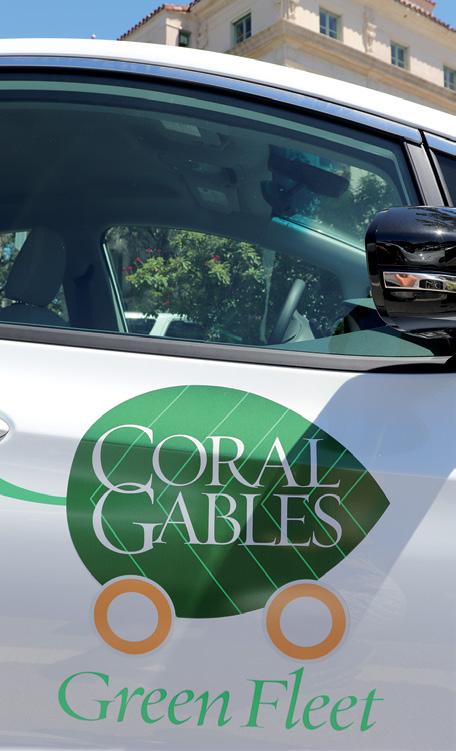 BY J.P. FABER
BY J.P. FABER
When you think of the word innovation, high technology typically jumps to mind. Gadgets, gizmos, apps, nanobots, communication devices, blockchain currencies, etc. But innovation is not just about high-tech. It is a way of interacting with the world. Innovation is all about the new – imagining solutions that are ‘out of the box’ or ‘pushing the edge of the envelope.’ It can be something as simple as mulching Christmas trees rather than sending them to the landfill, or devising a creative way to slow traffic by installing raised pavers.

The identity of Coral Gables has always been tied to its founding vision as a city of old-world architecture, and as such its icons – the De Soto Fountain, City Hall, the Biltmore Hotel, the Venetian Pool, the Alhambra Water Tower – are cast in the Mediterranean mold. Yet the city, especially in recent years, has self-consciously pushed an innovative agenda. Former Mayor Raúl Valdés-Fauli set up an Innovation Council
to advise the city on everything from education to transportation. Current Mayor Vince Lago has been a tireless advocate of green legislation, from requiring more environmentally friendly buildings to curbing the use of plastic bags. “Without innovation, we cannot become a world class city,” says Mayor Lago.
Innovation has not always had happy results. The boldly futuristic metal flower at the intersection of Segovia Street and Biltmore Way is still considered by most citizens to look like an out-of-place alien insect. When the glass-box office building on Alhambra just west of Ponce de Leon Boulevard was built, it caused such an uproar that legislation was passed to give height bonuses for new buildings in the Mediterranean style. Efforts to make the city more bicycle friendly have failed to win over residents who fear the loss of trees to bike paths. And the city’s effort to ban Styrofoam and other non-biodegradable plastics was overturned
by the state.
Despite its disappointments and sometimes stutter steps forward, Coral Gables remains profoundly committed to innovation, especially compared with other municipalities. The city routinely wins national awards for its IT infrastructure, something which is by and large invisible, but which gives the city added capability to deal with everything from street crime to natural disasters. Its transportation solutions, from trolleys and scooters to roundabouts and the Freebee, has so far kept the downtown relatively free of the snarling traffic in places like South Beach and Brickell. And what was more innovative than letting restaurants install outdoor seating street-side during the pandemic?
From its educational resources for seniors, to the solar powered charging stations on park benches, Coral Gables strives to be cutting edge. The question is how far innovation should go, especially in the realm of public space in a city that loves its old-world

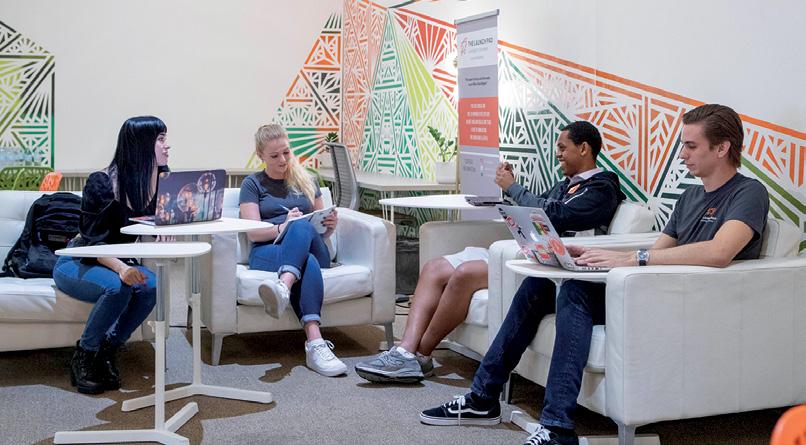




MOBILITY HUB: While still years and millions of dollars away, the downtown Mobility Hub is designed for a future that includes micro mobility, alternative public transportation, driverless vehicles, and shared ride systems.
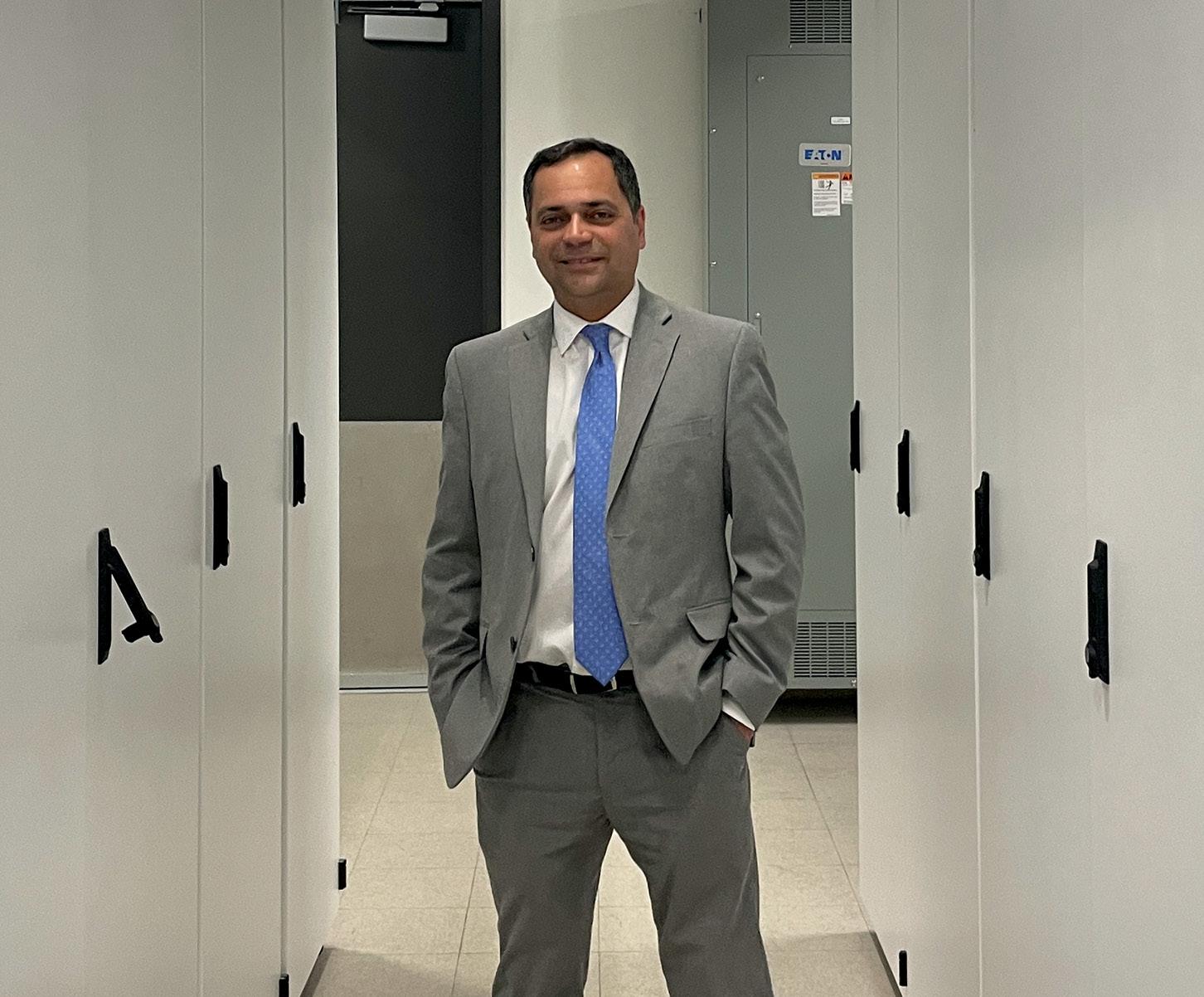
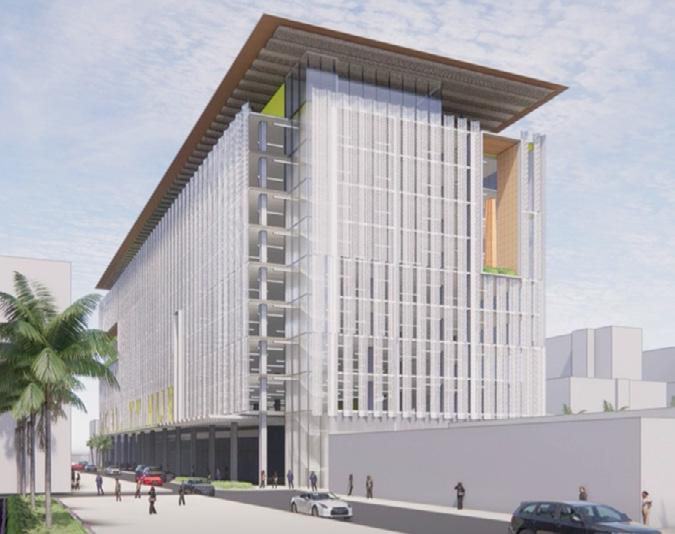
charm. A key test in that balancing act between past and future is the new Mobility Hub. The concept is highly innovative, a building that can not only provide substantially more parking spaces downtown, but which can provide a central micro-mobility station, a link to the city’s trolley system, EV charging stations, even a port for delivery drones atop the building, itself a park in the sky with solar panels for shade. The building is also designed with 12-foot ceilings so it can be repurposed in the future as an office or residential building. But because it looks like a giant ice cube from the future, a “beautiful monster” as civic activist Maria Cruz calls it, there has been considerable pushback.
the future without forsaking the past,” says Mena. “But we are absolutely an innovative city, both in the public and private realms. We have meetings with bureaucrats and elected officials from around the world that come to visit Coral Gables, and one of the things they are blown away by are the high-tech solutions we are implementing as a city government.” With that in mind, we will explore in this story some of the ways the Gables continues to push into the future, while remaining grounded in the elegance and civility of yesterday .
DRONES: The city has begun using drones for hurricane rescue recon and damage assessment, delivery of items for emergency management scenarios, monitoring of outdoor COVID-19 testing sites, on-site inspections, 3D modeling, video analytics, and live video broadcasting.


“Coral Gables is a city that is always on the balancing point between the past and the future,” says Vice Mayor Michael Mena. “While we are known as a city with a rich past, I think the vision for Coral Gables was always to evolve, and to continue with new styles of architecture in the downtown, for example.” It was Mena who led a Sunshine Meeting regarding the radical design of the mobility hub, comparing it to the way that European cities incorporate new design – like the glass pyramid at the Louvre in Paris, or the so-called Gherkin Building in London’s financial district.
“I think there are ways to embrace
It may be surprising for some Gableites to learn that our historic city is at the forefront of the smart city movement, having earned national recognition for its innovative use of technology. The city has twice taken first place in the Open Cities Index, which measures how U.S. cities use data to better the lives of residents. Earlier this year, the city received the 2022 Smart City Innovation Excellence Award from the Smart Cities Council for being “a leader in applying technology to improve operational efficiencies, quality of life, public safety, and mobility.” Most recently, the city was selected as a participant in a U.S. Department of Energy project for “advanced intelligent traffic optimization.”

“THE BALANCING ACT YOU HAVE TO DO AS CEO, OR CHIEF, IS TO SEE WHAT TECHNOLOGY CAN DO… AND MAKE SURE THAT YOUR POLICIES HAVE SAFEGUARDS IN THEM TO PROTECT EVERYBODY’S FIRST AMENDMENT RIGHTS....”
ED HUDAK, POLICE CHIEF OF THE CORAL GABLES POLICE DEPARTMENTPHOTO BY RODOLFO BENITEZ
At the head of this push is Raimundo Rodulfo, the city’s Director of Information Technology, and his team at the Public Safety Building on Salzedo Street – where the city’s computer servers are located with double back-up generators. “Innovation means, to me, improving quality of life,” says Rodulfo from his chair in front of an enormous white board outlining projects in progress for his department. “That means leveraging the technology of the moment to develop new solutions [and] maximizing our resources to help our citizens.”
MOBILE APPLICATIONS: The city has created mobile apps for smartphones that provide access to its programs and services. It has also partnered with other apps for transportation (ParkMe, PayByPhone, ETA Spot, Freebee), public safety (SaferWatch, In-telligent), and learning (Actionbound, Magical Park, Fairchild Orchid Tracker).

The city’s current pet project, an AI-powered modular pole that does everything from analyzing air quality and pedestrian traffic to providing public Wi-Fi, is the first of its kind in the U.S. and custom designed by aerospace engineers for Coral Gables. Now in its fourth iteration, several modules have been attached to the hurricane wind resistant, black metal pole discretely rising from Alhambra Circle. Environmental sensors analyze weather patterns and air pollution, while traffic counters collect data on the number of vehicles and their speed as they pass by. The pole also connects with the city’s public Wi-Fi network to increase its range and bandwidth.

ENTERPRISE SYSTEMS: The city is in its final year of connecting all city services via shared software (aka enterprise systems) enabling the city to better manage permitting, city assets, facilities, finance operations, procurement, human resources, and payroll by streamlining data entry, and tracking.


CCTVS: The city has more than 100 closed-circuit television cameras and four mobile camera banks mounted around the city that make up a video surveillance system monitored around the clock in the Communications Information Center.

The data collected here, and from a growing cluster of cameras that survey the downtown, is made available for public perusal on the city’s Smart City Hub. This website platform allows users to better understand the flow of vehicular and pedestrian traffic, for everything from planning where best to locate a store to when it would be easiest to find a table on Giralda Plaza. The Smart City Hub goes beyond those metrics, however, offering an astonishing amount of information about the city, things like public WiFi locations, EV charging sites, pet waste stations, and the location, height, health, and species of almost 40,000 trees in public spaces. It also shows bicycle routes, street light locations, trolley stops, and the latest traffic slowdowns and accidents via the WAZE app. While gathering information is crucial to the success of the city and the well-being of residents and businesses, there are other initiatives that earned Coral Gables the first-place 2018 Digital Cities Award out of all cities in the nation with a population less than 75,000. Smart lights that save on energy and maintenance costs, drones that can assess water flow blockages and survey infrastructure, and artificial intelligence capabilities that produce better business reports are just some of the projects the city has or is implementing.
When Ed Hudak joined the Coral Gables Police Department 34 years ago at the dawn of the computer age, he could not have imagined the high-tech world of crime fighting he is now charged with managing. “And that technology changes every minute,” says Hudak, who worked his way through the ranks to become police chief in 2015. “The balancing act you have to do as CEO, or chief, is to see what technology can do… and make sure that your policies have safeguards in them to protect everybody’s First Amendment rights, and everybody’s civil rights.”
Hudak says he hears regularly from vendors hawking the next big thing. He is often skeptical. “Honestly, when vendors tell us they can forecast when things are about to happen – then we’re in precog territory,” he says, referring to the 2002 futuristic film “Minority Report,” in which three floating psychics, called Precognitives, are able to predict who will commit crimes, especially murders, before they happen. “I do not have three people sitting in a whirlpool down-
Everything for Everything that Matters by author and business leader W. Allen Morris is a freedom manual for hard-driving, success-oriented leaders who are ready to explore the terra incognita of their hidden self in order to find and experience the life they deeply want—the path to greater freedom, joy, creativity, and power.
W. Allen Morris Business Leader and Author, All In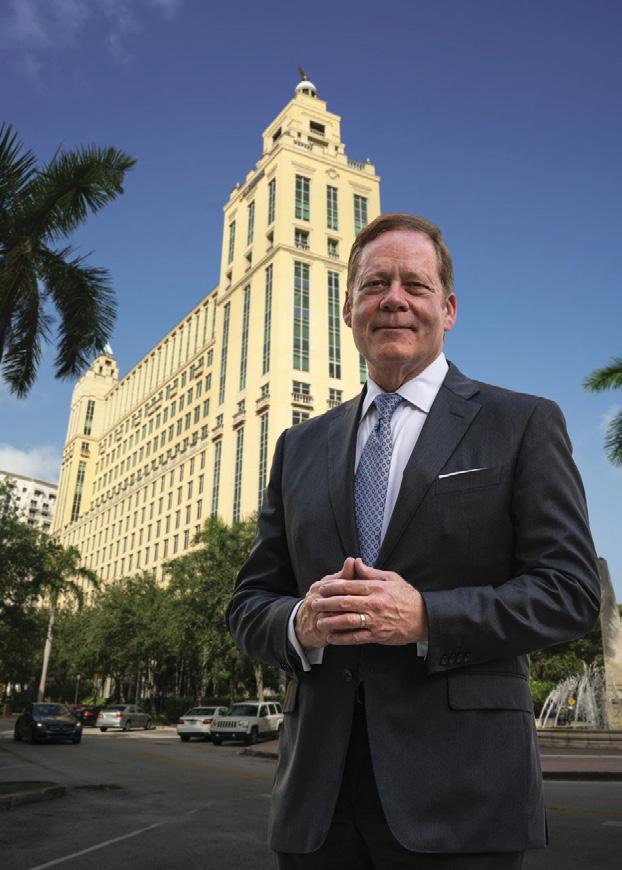

ISBN13: 9781637630693


stairs that tell us what’s going to happen,” quips Hudak.
Having said that, the department’s arsenal of high-tech devices and resources continues to grow. Sometimes it’s the ability of police to use the city’s smart technology to help track criminals; the downtown’s web of cameras has allowed them to identify and arrest criminals, ranging from the thief who stole a giant teddy bear from The Grammercy to the graffiti “artists” who were desecrating buildings downtown. Other times it’s the acquisition of specific high-tech crime fighting tools for the force, such as robots, drones, or the BolaWrap 100, which fires an eight-foot tether to wrap up and restrain someone who is trying to flee or harm others (or themselves).
One of the latest additions to the department is a $1.2 million mobile command vehicle that can run the police and fire departments if all else fails. “Everything is self-contained,” says Hudak. “If we were to lose our main 911 center, and our backup 911 center, we could run the city’s entire police and fire operations from this [vehicle] via satellite. If you call the regular emergency numbers the phones would ring here. Everything is computerized.”

Another recent addition is facial recognition technology. The city has a contract with Clearview AI, a company that can search through databases of billons of images posted to the internet to look for a match and help identify a crime suspect. “Clearview AI gives us the ability, along with other platforms, to check all sorts of social media stuff to find out who we’re looking for,” says Hudak. The city also has a “geo fence” of Automated License Plate Readers, with 32 fixed cameras taking pictures of the license plates of every car entering or leaving the city, along with two mobile trailers and three squad cars with ALPR units.

The use of such photo recognition technologies is not without controversy. University of Miami law professor Michael Froomkin appeared before the city commission in September to urge the city not to renew its contract with Clearview AI, calling the services the firm provides “Orwellian.” (The contract was approved by a 5-0 commission vote). At least one citizen is suing the city for its use of plate readers, calling them violations of his constitutional right to privacy (see story pg. 22).
Hudak believes that the benefits of hightech surveillance tools far outweigh the risk – as does technology in general, like the city’s communication system that allows officers to respond to the scene of a crime – or to an emergency anywhere in the city – in just three minutes on average. “Following or surveilling just for the heck of it is not something we are

going to do. We are not creating a Big Brother-is-watching type of thing,” says Hudak. “If people don’t see something, say something, we don’t know it happens… We will never acquiesce to artificial intelligence telling us how to do our jobs. We use it. That’s it.”

The maintenance of personal health is paramount to quality of life, and Coral Gables has health institutions that are leaders in new technologies. UM’s Bascom Palmer Eye Institute, for example, with facilities on south Ponce de Leon Boulevard (and downtown Miami) is ranked as the number one eye hospital in the nation and makes extensive use of laser-based devices. The Sylvester Comprehensive Cancer Center, also with facilities on south Ponce de Leon Boulevard (and downtown Miami), is a leader in the use of precision medicine that targets individual genetic markers to address abnormalities in a patient’s cells. Baptist Health, headquartered in Coral Gables, is
5 0 0 A L C A Z A R A V E
C O R A L G A B L E S
4 B e d | 3 5 B a t h s | 2 , 7 3 3 S F | 1 2 , 5 0 0 S F L o t | $ 2 , 4 0 0 , 0 0 0 w w w a l c a z a r c o m




A b s o l u t e l y i m p e c c a b l e h o m e , s i t u a t e d o n t h e p r e t t i e s t s t r e e t i n
C o r a l G a b l e s !
A t r u e c l a s s i c , t h e b e a u t i f u l c o v e r e d f r o n t p o r c h l e a d s t o a f o y e r e n t r y , f o r m a l l i v i n g a n d d i n i n g r o o m s , a n d s u n n y f a m i l y r o o m o v e r l o o k i n g a l o n g c o v e r e d p a t i o a n d t h e l u s h , p r i v a t e l a w n , c o m p l e t e w i t h i t s o w n p u t t i n g g r e e n
T h e s p a c i o u s k i t c h e n h a s f r e s h , w h i t e c a b i n e t r y , s t a i n l e s s s t e e l a p p l i a n c e s , p a n t r y , a n d e a t - i n a r e a
N e w l y - r e f i n i s h e d w o o d f l o o r s , o r i g i n a l m o l d i n g s , h u r r i c a n e i m p a c t g l a s s t h r o u g h o u t , 1 c a r g a r a g e , a n d m o r e , j u s t 1 b l o c k f r o m a l l t h a t d o w n t o w n C o r a l G a b l e s h a s t o o f f e r !
B e r k s h i r e H a t h a w a y H o m e S e r v i c e s E W M R e a l t y
| w w w a s h l e y c u s a c k c o m


BODY CAMERAS: Gables police officers do not currently have body cameras, but they are coming, at an estimated cost of $2 million a year. The budget request is being finalized, and officers could be wearing the cameras by mid-2023.

HEALTHY CITY
a leader in telemedicine, with a “Care on Demand” system that provides immediate virtual access to qualified doctors and experts anywhere from a smartphone, tablet, or computer.
HEALTHIER WATER: High pH level Alkaline water is the latest health trend, proven to help neutralize acid in your bloodstream, which can help prevent cancer, heart disease, and other conditions. Available at Miami Alkaline Water on Miracle Mile.
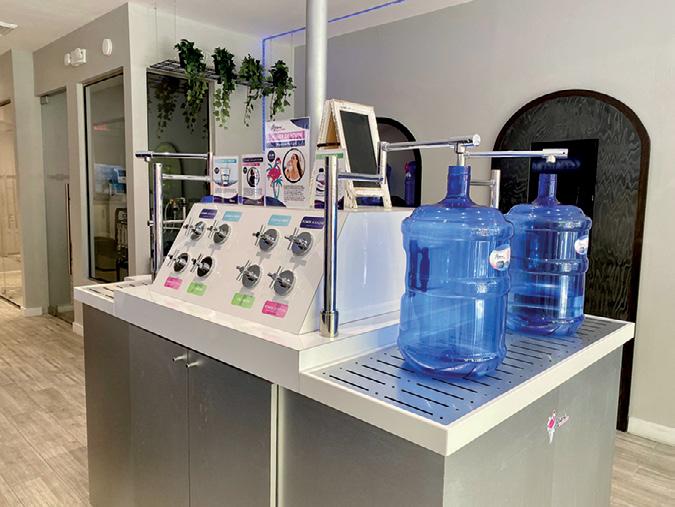
The city itself is laden with stand-alone health care facilities that provide an array of innovative health care options. Within the city are storefront operators of oxygen baths (where you are immersed in an oxygen-rich environment), cryo therapy (where you are briefly taken to sub-zero temperatures), and IV drip facilities (where you are infused with concentrated vitamins).
unique anatomy. For the patient, this means preserving soft tissue, saving healthy bones, and a quicker recovery.
Baptist also offers innovative concierge healthcare programs for busy executives, where comprehensive diagnostics can be combined in single day sessions. At Doctor’s Hospital, a Baptist facility on University Drive, the epidemiologists were among the first to use advanced therapies for curing Covid, including convalescent plasma and mononuclear antibodies.
TELEMEDICINE: Baptist Health doctors are online 24/7 to help with conditions that don’t need immediate lab work. With a 10-minute visit, get a diagnosis, receive treatment, and follow-up without needing an appointment.

Among the innovations at the city’s major health institutions, Baptist Health’s Miami Orthopedics & Sports Medicine Institute (a 49,000 square foot facility in Coral Gables) is the first institution in Miami-Dade County to invest in the Mako Robotic-Arm Assisted Technology. This technology is used by surgeons to evaluate bone structure, disease severity, joint alignment, and the surrounding bone and tissues. “Robotic knee replacement surgery is a big advancement in the field of joint replacement because it allows us to personalize the surgery,” explains Dr. Juan Carlos Suarez, an expert in knee and hip replacements. Using robotics, surgeons can determine optimal size, placement, and alignment of an implant while performing partial and full knee replacements, beginning with a CT scan that creates 3D images of the patient’s
At Nicklaus Children’s Hospital, which is the region’s only healthcare system exclusively for children (and just outside the city), research is being conducted on revolutionary technology for incisionless treatment of brain tumors. Nicklaus physicians now use focused ultrasound to destroy tumors in the brain, guided by Magnetic Resonance (MR) for precise targeting. So far, five patients have successfully undergone MR-guided focused ultrasounds at Nicklaus, the first in the world to perform this procedure with children.
Another innovative technology at Nicklaus is the use of “mixed reality” to plan complex heart surgery. “We create a 3D-printed heart model that enables the team to feel, cut, and sew an exact replica of [a heart] to plan this complicated surgery,” says Dr. Robert Hannan, Director of the Cardiovascular Surgery Advanced Products Laboratory. Using Microsoft HoloLens2 technology,

“Where your child matters most” is not just something we say, it’s our promise to every family that entrusts us with their child’s health. A promise that has placed us in U.S.News & World Report’s 2021-22 Pediatric Rankings. Nicklaus Children’s Hospital is, once again, the highest ranked pediatric children’s hospital in South Florida. We know it’s great to lead, but when you do it with compassion and extraordinary care, you show the world why the children matter most…your children.
Nicklaus Children’s Hospital is the highest-ranked children’s hospital in South Florida.
nicklauschildrens.org


IV DRIPS: Delivering water-soluble vitamins, IV drips are the latest way to re-energize, overcome exhaustion, or cure a hangover. Now available at the Biltmore Hotel spa or at IV Bars Miami on Ponce de Leon Boulevard for $100+.

HEALTHY AGING: Coral Gables is about to experience a renaissance in adult care communities designed to extend the “health span of adults” through campus like settings such as Belmont Village that keep brains and bodies engaged.
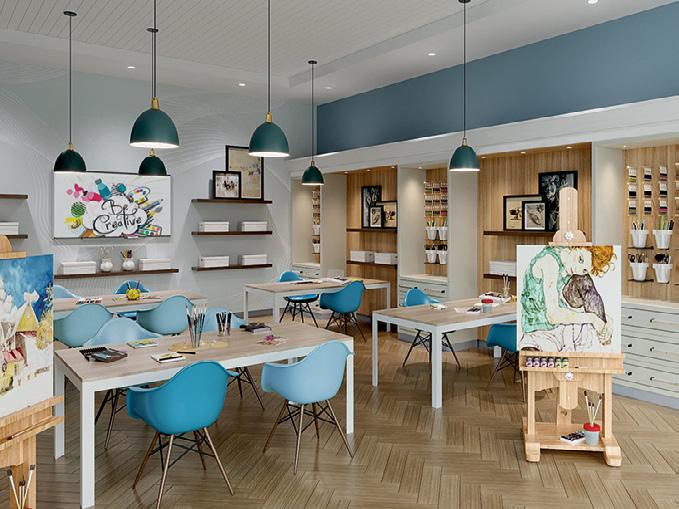
surgeons can also see 3D holograms of the patient’s heart to help plan the surgery. “This cutting-edge technology helps us plan a challenging operation, enabling us to reduce the operative trauma for our patient,” says Dr. Redmond Burke, Chief of Cardiovascular Surgery. Nicklaus Children’s Hospital is also now offering groundbreaking immune effector cell therapy for children and young adults with leukemia and lymphoma.
CRYOTHERAPIES: Cryo is the latest method to rid your body of toxins, by submerging yourself in a tank with a temperature of -240 degrees Fahrenheit. This sends blood deep to the body’s core, which enriches the blood and reduces inflammation.
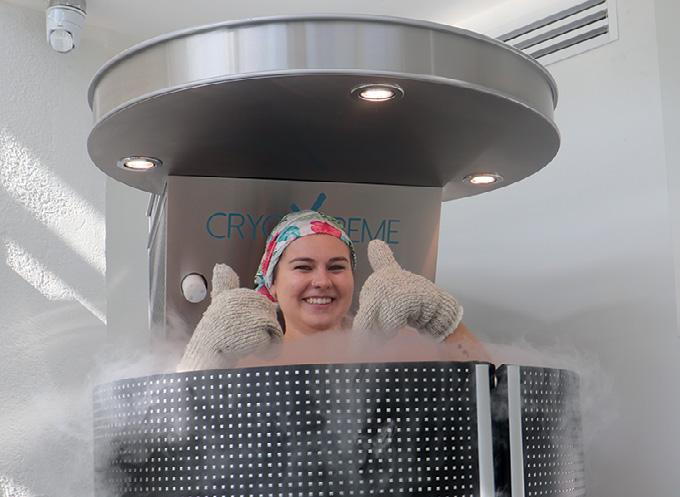
The University of Miami Health System, meanwhile, is South Florida’s only university-based medical system with opportunities for advanced research. “We are dedicated to exploring the latest discoveries in the laboratory and accelerating the most promising therapies from the lab,” says Dr. Dipen J. Parekh, who is also director of robotic surgery. Parekh was the first in the nation to use 3D printing technology to create a kidney model for surgery preparation. Other researchers at UM include MDs like Dr. Joshua Hare, who has developed a line of stem cells to repair dead heart tissue in patients who suffered heart attacks, and Dr. Camillo Ricordi, Director of the Cell Transplant Program at the UM Miller School of Medicine, who is conducting a ten-year trial of cell transplants that could cure Type 1 diabetes.
It’s no secret that Coral Gables takes its greenery seriously, with one of the most advanced canopy protection and enhancement programs in the nation (see story on pg. 36). That sensibility extends to a variety of other sustainability initiatives, all designed to make the Gables as environmentally resilient as possible. Among these efforts is the city’s current aspiration to be certified as a LEED city (Leadership in Energy and Environmental Design), aiming for the LEED Gold standard. This certification looks at city programs, environmentalism, quality of life, and public safety.
The city also provides opportunities for citizens and businesses to get involved in sustainability and environmental activism. One of those city programs is Keep Coral Gables Beautiful, led by Matt Anderson and Solanch Lopez, the Co-Executive Directors of the two-year-old program (in addition to their respective positions as Resiliency and Sustainability Manager and Assistant to the City Manager). Keep Coral Gables Beautiful







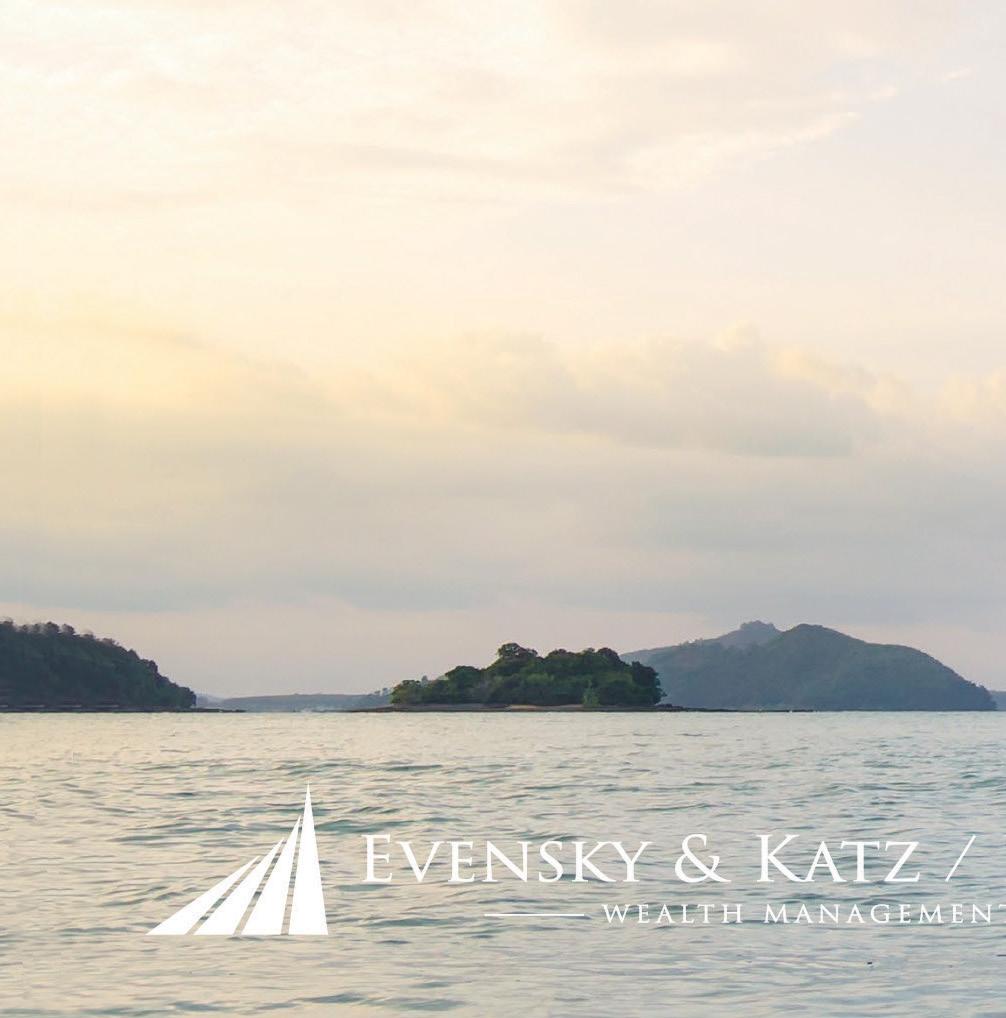



aims to engage the community with volunteer initiatives that have ranged from Plogging at Matheson (where 33 trash-picking joggers collected 165 pounds of trash from coastal bike trails), to the Red Mangrove Propagation Project (where volunteers planted 1,300 mangrove seedlings in 20 tubs of dirt on the edge of the Granada Golf Course.)
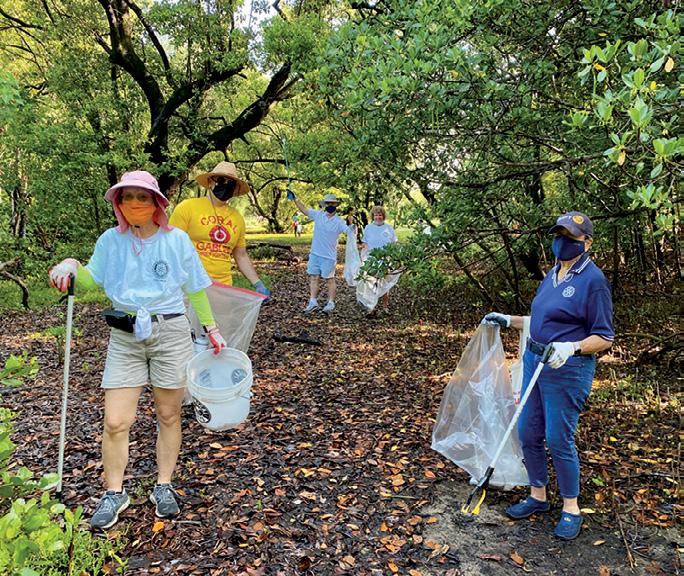
Among the city’s most popular sustainability events is the bi-annual collection of hazardous household and electronic waste at City Hall. The most recent of these in April collected over 365,000 pounds of toxic trash. In other bi-annual collection drives, 1,280 pounds of prescription drugs and 619 pounds of batteries have been collected and safely disposed. Earlier in the year, the Christmas tree recycling program turned more than 4,500 trees into mulch for public spaces.
“We are excited to see how the community has embraced Keep Coral Gables Beautiful and how much it has grown in just two years,” says Lopez. “We will continue to bring in new programs and events that will promote environmental sustainability and educate the community to take action every day to reduce litter from our open spaces and waterways and improve recycling efforts.” Among its recycling efforts, the city now requires that all cardboard boxes be broken down and put into recycling bins, rather than discarded as garbage.
Coral Gables also makes a strong effort in “green” building, requiring that any commercial structure of 20,000 square feet or larger meet LEED Silver standards. Energy efficiency is also constantly updated

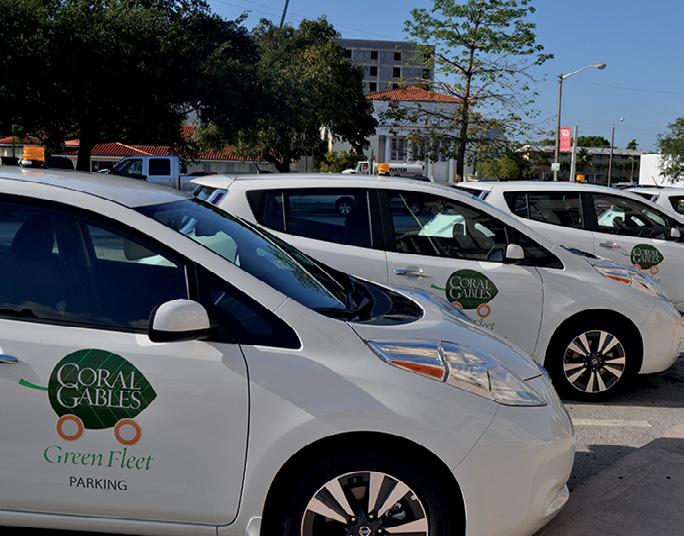
in city buildings: lights are changed to LED, motion sensors are installed to conserve electricity, and air conditioning is upgraded to high efficiency units. So far, in older buildings that have been retrofitted since 2013, energy consumption has been reduced by 24 percent per square foot and water consumption by 41 percent per square foot.
Water quality is another area where innovation helps. The Gables has more than 42 miles of coastline and waterways, 35 miles of which are the Coral Gables Waterway itself. To improve the health of Biscayne Bay, the city is conducting studies on ways to reduce nutrient intake that negatively impacts water quality. One strategy is the city’s (and county’s) fertilizer ordinance, which bans nitrogen or phosphorus fertilizer during the rainy summer months, preventing the chemicals from running into the water. The city is also testing floating gardens and sponges to absorb chemical waste before it enters the waterway, as well as baskets and grates in city street drains to collect waste before it heads downriver.
Alternative transportation is another way that Coral Gables contributes to sustainability, helping reduce the emission of greenhouse gases by taking cars off the road. The trolley service, which has well over one million riders every year, has now expanded to include Saturday services. Freebee “cabs,” which can be requested via a mobile app, move people around the center of the city

The Biltmore Spa, your sanctuary for personal peace and tranquility. In the timeless setting of our historic Biltmore Hotel, we invite you to embrace a slower pace and give yourself time for rejuvenation of the mind and body.

















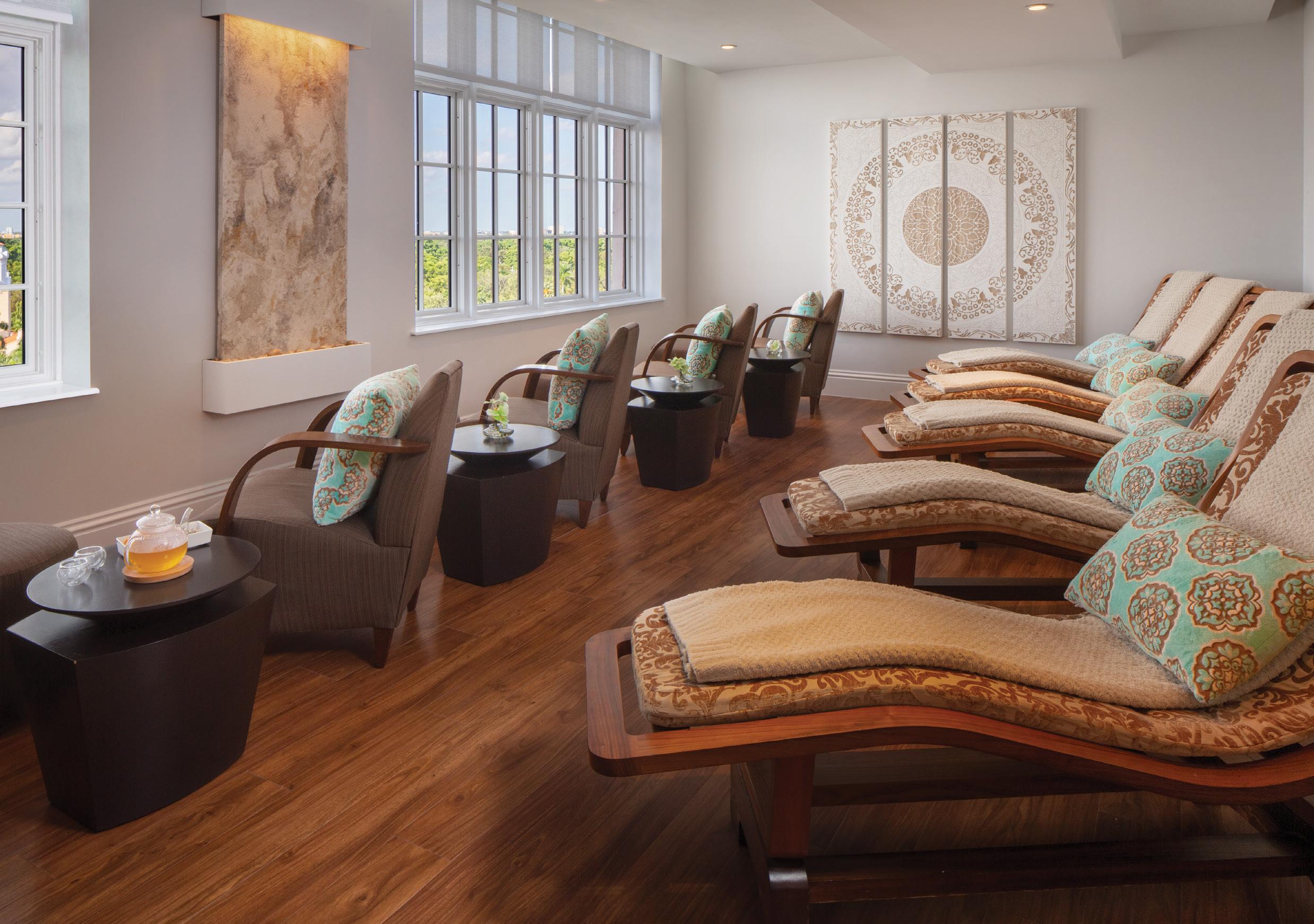

ALTERNATIVE TRANSPORTATION: Alternative transportation contributes to the reduction of greenhouse gasses. Some of these include the trolley service, electric scooters, Freebees, and plans for bicycle lanes in the downtown.

without the use of their cars. When cars are used, electric vehicles (EVs) are encouraged, with city ordinances now requiring minimal numbers of EV recharging stations in new developments; 12 percent of the city’s fleet of cars is already electric, and electric scooters and bike racks are also scattered throughout the city.

Coral Gables also strives to incentivize businesses to take on sustainability efforts themselves. For those interested in becoming more environmentally friendly, the city offers free resources and recommendations. So far, seven businesses have been awarded with a Green Business Certification that was created by the Coral Gables Chamber of Commerce in partnership with the city. “We are endeavoring to create a more sustainable business community, for current companies and to attract future innovators and founders,” says Chamber CEO and President Mark Trowbridge.
the University of Miami, the answer will be a resounding “yes.” The university is so committed to exploring the latest approaches to education that it even has a vice provost of innovation, Dr. Norma Kenyon, PhD, who is also chief innovation officer for the Miller School of Medicine. “We have terrific research in key areas,” she says. “And avenues to learn entrepreneurship and turn your ideas into a business.”
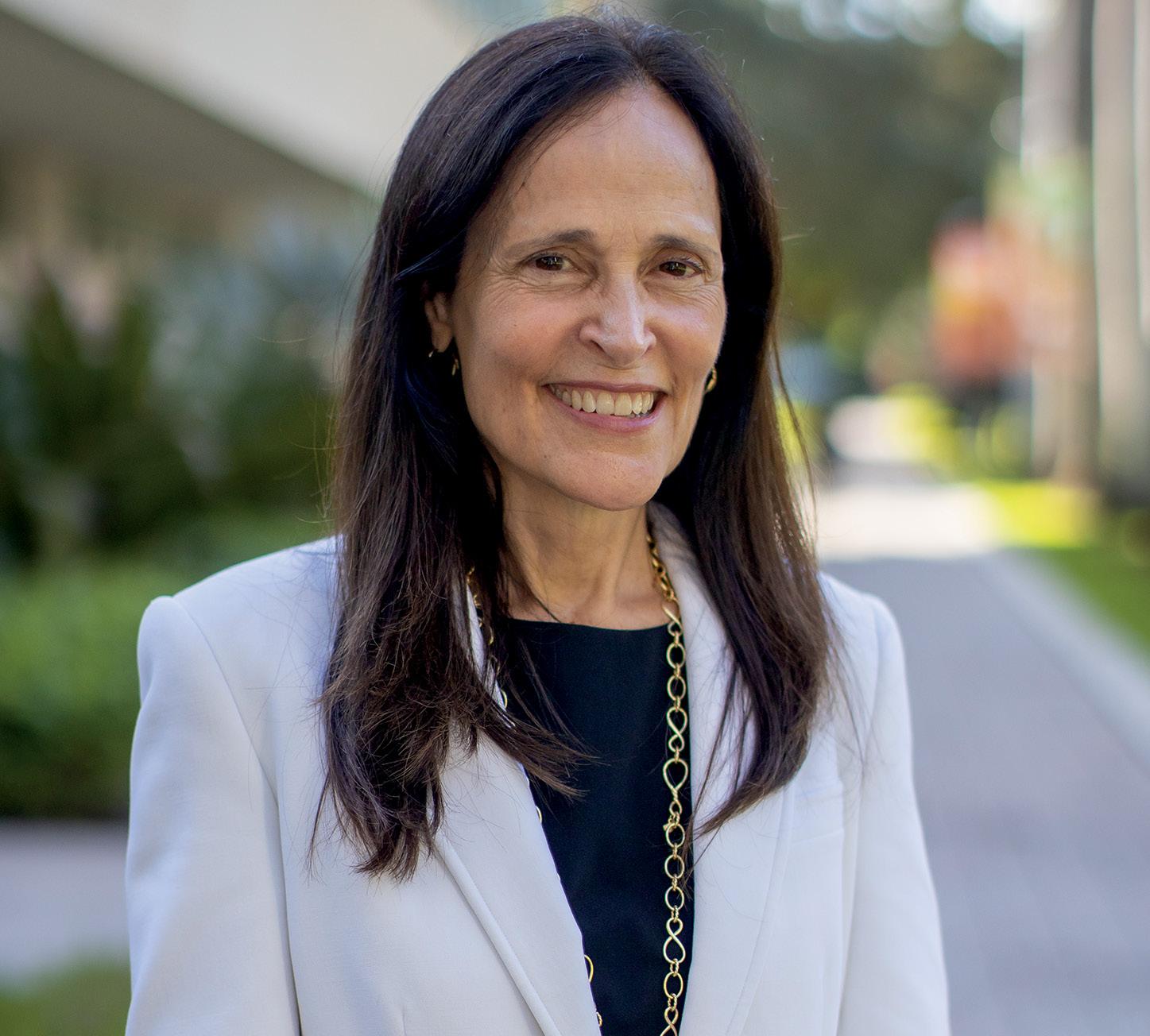
VIRTUAL REALITY ARCHITECTURE: This UM faculty-led program lets students experience things like the church of Nuestra Señora de la Merced Chapel in Miami’s Allapattah neighborhood with virtual reality headsets. Participants can also interact with the church to learn more about specific architectural elements and paintings.
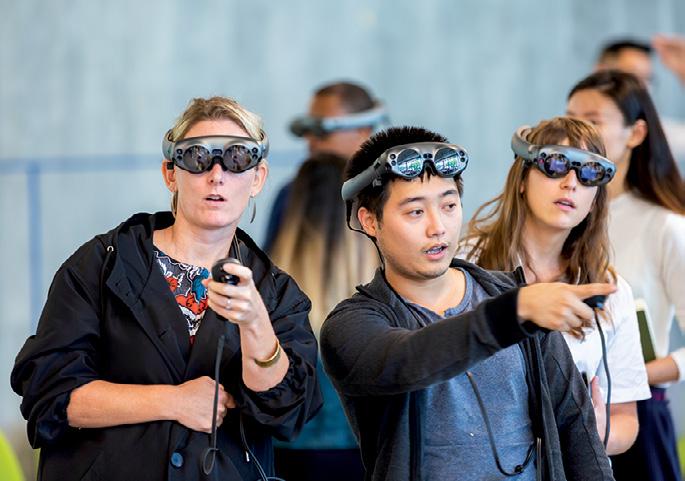
Silicon Valley has Stanford. New York City has NYU and Columbia. Boston has Harvard and MIT. It seems that all the major technological outposts in the United States have at least one university that drives creativity and innovation. But is that the case with Coral Gables?
If you ask the leaders of innovation at
The ‘Cane Angel Network and The Launch Pad are just two of the resources helping the UM community launch creative start-ups and projects. Through investing and consulting, both have helped UM-connected companies like Salty Donut, Novo Bank, and HealthSnap pursue their ideas. “Our job is to identify those earlystage start-ups and help those companies that have great ideas achieve what they want,” says Jeff Camp, managing director of the ‘Cane Angel Network.
Brian Breslin, director of The Launch Pad, echoes Camp’s remarks, and believes that start-ups need a little bit of help to execute their ideas and maximize their positive effect on the community. “Our goal is to help people cut through all the jungle of the business world to pursue their ideas... Then


they create jobs for people, and you have this ripple effect of economic development coming from start-ups and entrepreneurship,” he says.
The tools used to educate students are also becoming more creative. “When I look at other universities and compare, the University of Miami is really ahead of the curve when it comes to exciting innovations,” says Kim Grinfeder, director of UM’s interactive media program and leader of its XR Initiative. Launched in 2018, the XR (extended reality) initiative uses a combination of augmented reality (AR), mixed reality (MR), and virtual reality (VR) to provide students, faculty, and researchers with tools to explore inventive solutions in their fields. These include the use, for example, of XR headsets that allow architecture and engineering students to design in virtual space.
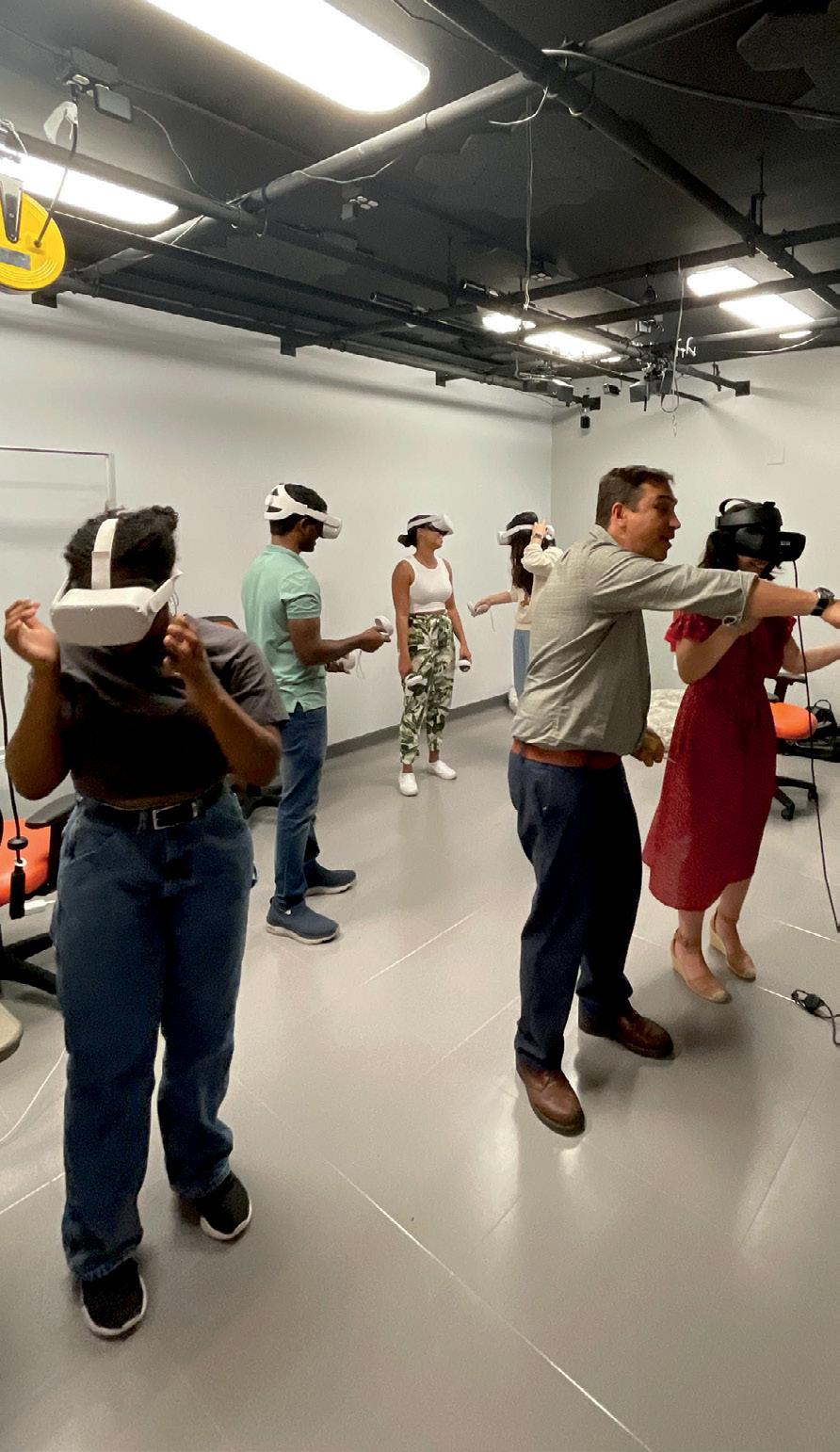
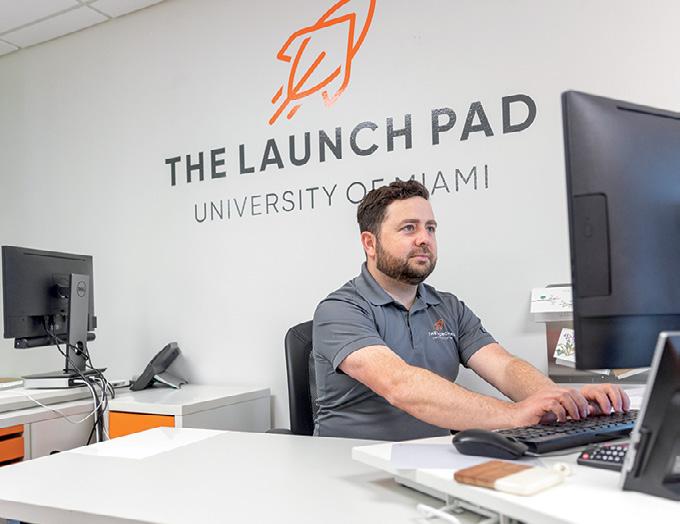
Currently, the XR Initiative extends to more than 30 student and faculty-led projects, including using XR technologies to educate students about medical conditions, historical sites, and climate change. “If you’re a student here, you have the opportunity to work with some really forthcoming technologies,” says Grinfeder. “It feels a bit like teaching at Hogwarts.”

In a city as educated as Coral Gables (where two-thirds of adults hold a college degree, and half of those another, higher degree) innovative learning goes beyond college students. In the area of adult education, the city is exemplary. At the Osher Lifelong Learning Institute (which happens to be on the UM campus), adults 50 and older can take classes in anything from Tai Chi, Western Art, and Classic British Literature to Acrylic Painting, Basic Portuguese, and Constitutional Law; some 350 classes are offered each year. At the downtown Adult Activity Center across from The Palace senior community on Andalusia (which itself offers classes in Yiddish and Improv), programs range from Line Dancing and Knitting, Crochet & Embroidery to Brain Gym and Barre Intensity Classes.

On the opposite end of the age spectrum, the War Memorial Youth Center hosts an outdoor scholastic book fair as part of its Gables Family Literacy Festival in May, while the Community Recreation Department is working to expand its Little Free Library kiosks in parks citywide. Four have been installed so far, with $1,000 sponsorship packages available to place them in any park citywide. Innovative curriculum pops up in schools both public and private as well, from the magnet Academy of Finance at Coral Gables Senior High School to classes in robotics for K-8 classes at Gulliver Academy.
One of the most innovative educational
programs is the Growing Beyond Earth project sponsored by Fairchild Tropical Botanic Garden, part of their Fairchild Challenge competition to encourage young “citizen scientists” nationwide. Growing Beyond Earth (GBE) supplies students with plant habitats analogous to the plant growing equipment aboard the International Space Station (ISS). Fairchild and NASA scientists train teachers to conduct in-classroom GBE experiments so that students can then share experimental data online with NASA.
In many ways, the city’s urgency to push into the future with new ideas is a top-down phenomenon. Starting with the mayor and city commission there is an underlying recognition that the city must keep moving forward to stay ahead of the curve. The city’s current mayor, Vince Lago, has a long record of launching legislation that is proactive in areas ranging from environmental steward-


whEthEr YOU ARE JUST MEETING FOR COFFEE, OR discussing nEW IDEAS, INNOVATIVE THINKING CAN ALWAYS HAPPEN IN DOWNTOWN CORAL GABLES.
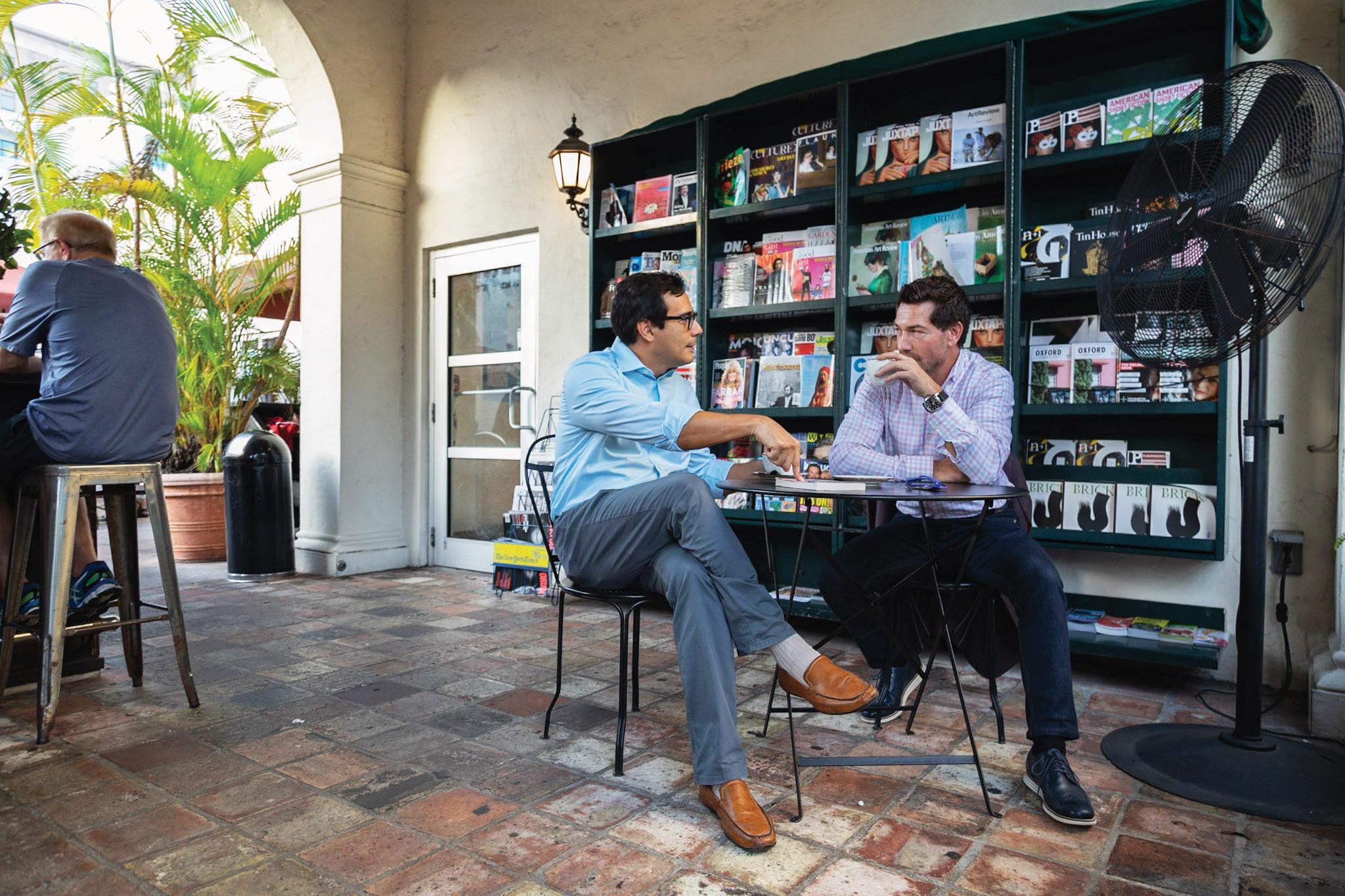
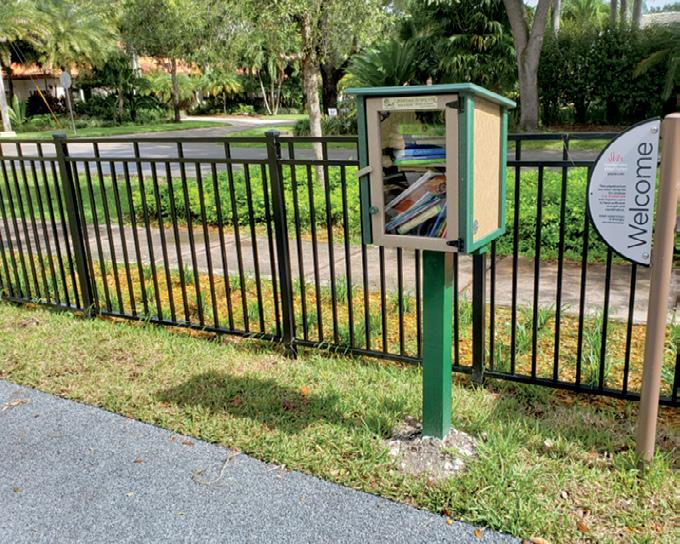
ship to transportation alternatives. Among his initiatives as city commissioner, then vice mayor, now mayor, Lago has pushed for solar power incentives, electric vehicles and charging stations, LEED building ordinances, environmental protections, electronic permitting, and expanded trolley service.
“What you are seeing now is a true investment in innovation, and by investment, I mean a financial investment,” says Lago. “We are spending millions of dollars to ramp up our electronic permitting system which is going to be game changer. That is critically important because we have heard [complaints] for years. We need to find a way, without bending our standards, to make it as easy to get permits as expeditiously as possible.”
“WE ARE SPENDING MILLIONS OF DOLLARS TO RAMP UP OUR ELECTRONIC PERMITTING SYSTEM WHICH IS GOING TO BE GAME CHANGER. ”
MAYOR VINCE LAGO, IN FRONT OF SOLAR PANELS AT HIS HOME, ON ACCERALATING THE PERMIT PROCESS
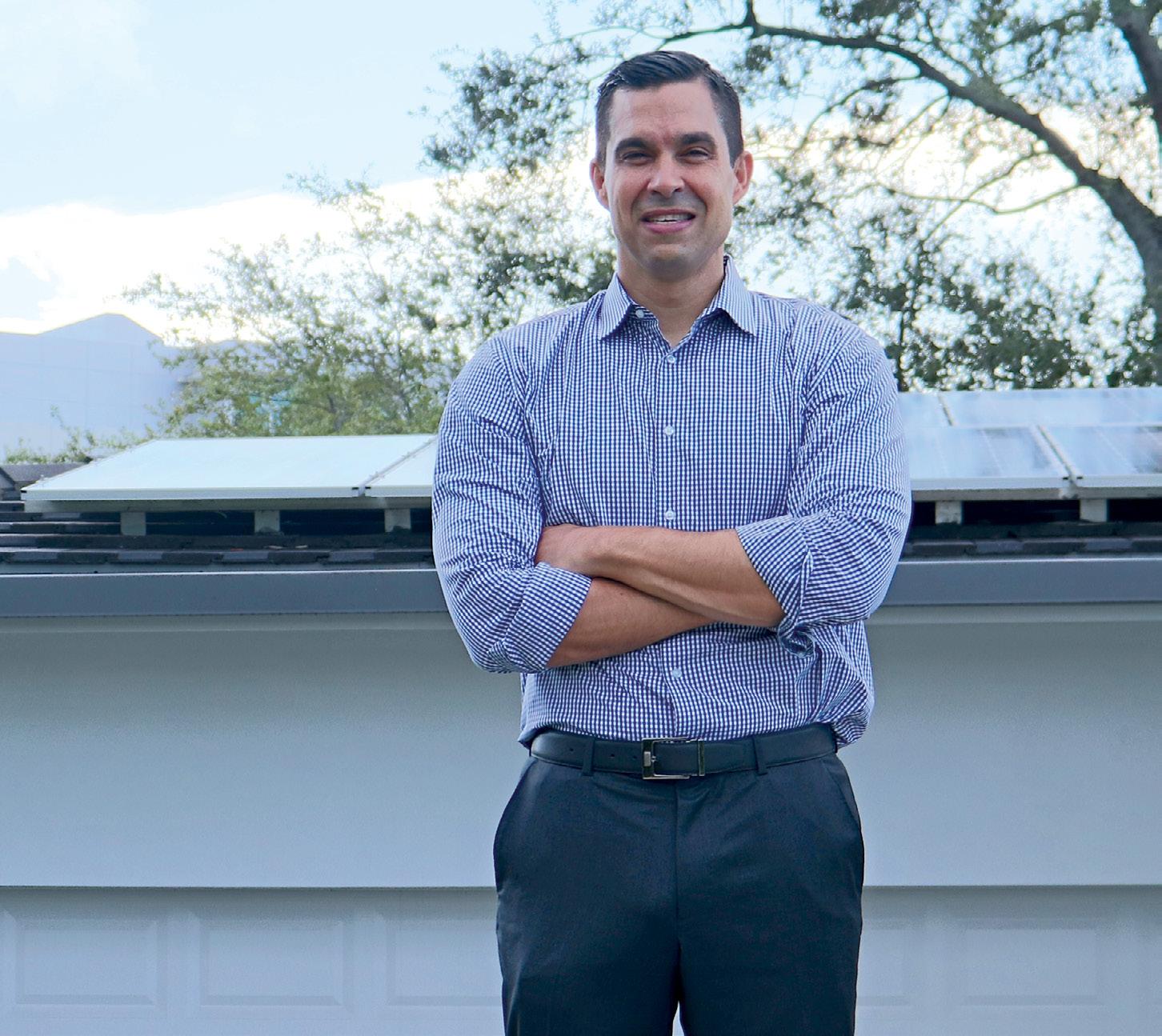
ELECTRONIC PERMITTING: When it comes online next year, citizens and developers can track their permits online in a paperless system designed to dramatically accelerate the process and make it far more transparent.



That online permitting process is expected to be in place by the beginning of next year, according to the man charged with implementing it, City Manager Peter Iglesias. Permitting is, in fact, just one element of a multi-million dollar enterprise software system that will horizontally integrate all of the city’s departments – police, fire, parks & recreation, public works, development services, finance, etc. “The technology is expensive, but once you have the platform you can upgrade it continually. And it will transform city services,” says Iglesias.
For the perennially painful permitting process, once you have online permitting, “you are going to have accountability,”
says Lago. “It will allow people to access their permits immediately. They are going to know where they stand. If it’s the city’s fault, it’s the city’s fault. If it’s the architect, engineer, developer, or city resident, they will know that, and be able to track the permit’s progress in real time… there is no reason it should take a year, or even six months, to get a permit.”
A second major advance, expected as early as the end of summer, is a relaunching of the city’s website, which is currently information rich but difficult to navigate. Here the city has invested in the same software (Drupal DXP) currently used by both Tesla and NASA. “From a technology point of view, it is probably the top web site [design] in the world right now,” says Iglesias. Among its features, the web site will have an artificial intelligence component to improve responses to citizen inquiries as time goes on.
At Professional Bank, we offer concierge banking powered by best-in-class digital financial technology.
JUMBO LOANS
FIXED RATE MORTGAGES
BUSINESS LOANS
LOANS
RESIDENTIAL LOTS
BRIDGE LOANS TO ACQUIRE RESIDENTIAL LOTS
At Professional Bank’s Digital Innovation Center we craft complex, custom financial solutions to make banking effortless and convenient.
At Professional Bank’s Digital Innovation Center we craft complex, custom financial solutions to make banking effortless and convenient.
We are committed to investing in sophisticated and highly secure digital financial technology to complement our high-touch, white glove service model. We believe that technology is an important driver in maintaining and expanding client relationships and strive to develop the best experience possible for our clients.
We are committed to investing in sophisticated and highly secure digital financial technology to complement our high-touch, white glove service model. We believe that technology is an important driver in maintaining and expanding client relationships and strive to develop the best experience possible for our clients.


Our clients enjoy:
Our clients enjoy:
Access to sophisticated and highly secure digital financial technology
Access to sophisticated and highly secure digital financial technology
A dedicated and responsive private banker that can provide innovative solutions
A dedicated and responsive private banker that can provide innovative solutions
Full scope community lending
Full scope community lending


Financial peace of mind
Financial peace of mind
COMMERCIAL REAL ESTATE FINANCING
SBA LOANS


Daniel R. Martinez
Daniel R. Martinez
EVP & Chief Banking Officer (786) 406-7643
EVP & Chief Banking Officer (786) 406-7643
dmartinez@myprobank.com
dmartinez@myprobank.com
Miriam Lopez
Miriam Lopez
EVP & Private Banking Group Leader (305) 443-0688
miriamlopez@myprobank.com
EVP & Private Banking Group Leader (305) 443-0688
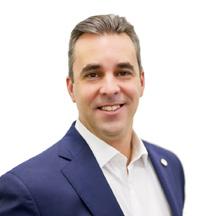
miriamlopez@myprobank.com
Luis Mechoso
Luis Mechoso
EVP & Director of Residential Lending (786) 814-4732
lmechoso@myprobank.com
EVP & Director of Residential Lending (786) 814-4732



lmechoso@myprobank.com

DRUPAL DXP WEBSITE: By this fall, the city plans to launch a new web site that uses the same software as Tesla and NASA, including AI feedback that allows the system to evolve according to user input.
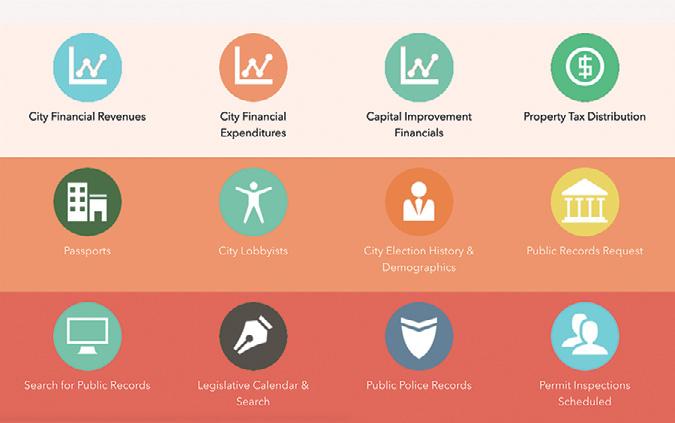

The city’s top-down approach is not limited to software platforms, though technology remains a key component. The city’s economic development department is also aggressive in its efforts to help the small business sector that makes up the bulk of the local economy. “We are working hard to make our businesses more efficient,” says Juilan Perez, director of the city’s economic development department. “We have to make our businesses more efficient and resilient because the world is constantly changing.”
During the Covid shutdown, Perez and his colleagues discovered that a large percentage of small businesses had little idea of how to position and market themselves online, so they partnered with Google to launch a series of workshops to train them in the use of digital platforms. On a more bricks-and-mortar level, the city encourages small business growth with pop-up programs and educational panels on retail trends, such as returning to hand-made, artisanal products that are now in demand. Retailers also have access to real time data, such as pedestrian traffic patterns that can reveal the impact of window displays. “We are not the only city that does these sorts of things, but we are very innovative in our approach to retailing,” says the city’s retail strategist Francesca Valdes. Perhaps nothing is more emblematic of the city government’s steadfast drive to innovate than its planned Mobility Hub, now
“WE HAVE TO MAKE OUR BUSINESSES MORE EFFICIENT AND RESILIENT BECAUSE THE WORLD IS CONSTANTLY CHANGING. ”
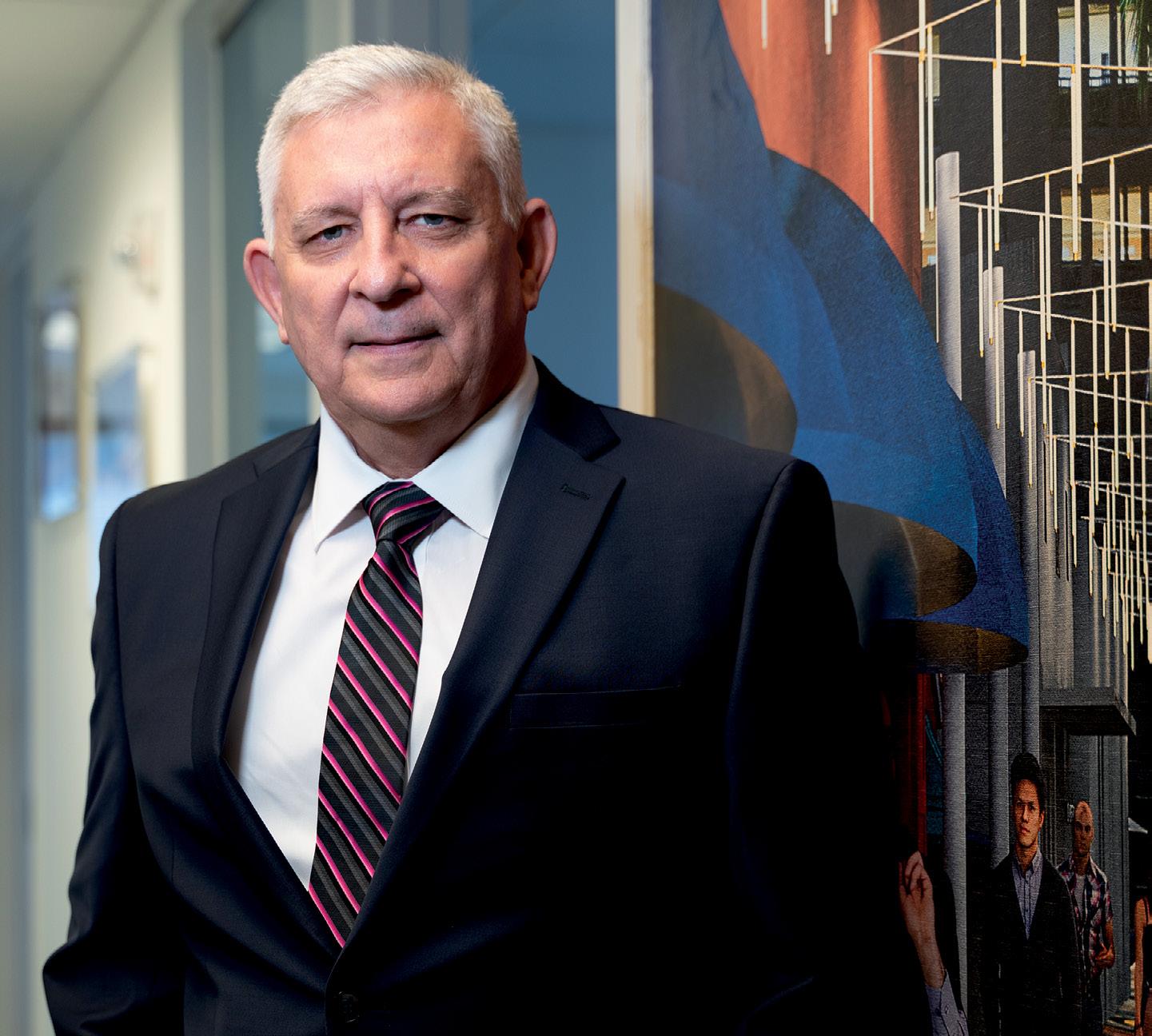
 JULIAN
JULIAN
on hold waiting for construction prices to come down. A gleaming, 10-story structure that will literally glow at night, the Mobility Hub is designed for the future, with solar panels above its rooftop park, drone landing pads, facilities for autonomous vehicles, EV charging stations, and a ground floor designed to accommodate micro mobility alternative transportation.
“Change is always difficult, but once you make the change you won’t know how you did without it,” says Iglesias. “Everything we are doing is world class. We are not taking any half measures. If you make a mistake in technology, it goes obsolete. We are working at a very high level, much higher than any city of our size.” ■
The following journalists contributed to this report: Mike Clary, Kylie Wang, Katelin Stecz, and Carmen Fraga
PEREZ, DIRECTOR OF THE CORAL GABLES ECONOMIC DEVELOPMENT DEPARTMENT

Fontana | Cascade | 19th Hole Bar & Grille | The Culinary Academy


Whether you are seeking the warmth of a traditional restaurant interior, the bliss of dining al fresco, either formal or casual, or an educational challenge, the Biltmore Hotel takes you on an exceptional culinary journey in a stunning historic setting offering a myriad of award-winning options.






Although some designers have shied away from decorating a formal dining room in recent years (in favor of additional sitting areas or bar rooms), there is something comforting about this area of the home. It’s a place to connect with loved ones and enjoy meals that are both elevated and relaxed; therefore, we’ve rounded up five stellar set-ups that recently caught our eye.
A marriage of wood and stone, Artefacto’s Eclipse dining table is a beautifully unique choice for your home. Its oval shape lends itself to greater flexibility in terms of seating options, and integrates seamlessly into any type of room. We like it paired with the brand’s Carrie dining chairs, available with a matching wood back or the upholstery of your choice. Retail: from $15,342 for the table and from $2,238 per chair. Artefacto, 101 South Dixie Highway, 305-774-0004, artefacto.com.
A staple on Ponce de Leon Boulevard, Modo Furniture is a go-to destination for the latest introductions from a wide variety of lines. Two recent styles available at the Gables showroom are the Bridge dining table, shown here, along with the Margot dining chairs. Retail prices available upon request. Modo Furniture, 4214 Ponce de Leon Blvd., 305-567-2970, modo-furniture.com.
An ideal feature for the consummate entertainer, the Milano dining table from the Danish furnishing outpost BoConcept includes a hidden extension leaf. The matte white lacquered tabletop, shown, is beautiful with the brand’s Princeton dining chairs, which are both sleek and
incredibly comfortable (trust us, we’ve sat in them). Retail: from $2,549 for the table and from $489 per chair. BoConcept, 342 San Lorenzo Ave. #1110, 305-350-1941, boconcept.com.
Building on the perennial beauty of clean lines and a balanced combination of materials, Bernhardt’s Foundations line of furnishings is both elegant and modern with a rustic twist. At 78 inches wide, the collection’s dining table, which features cerused acacia wood set atop stainless steel legs, could function as a kitchen table in a larger home, or as a formal dining table in a condo or apartment. Retail: $2,645. Decor House Furniture, 4119 Ponce de Leon Blvd., 305-448-6200, decorhousefurniture.com.
The Italian furnishings house B&B Italia is heralded for its architecturally-inspired and innovative designs. In the featured image, the Oskar table, named for the modernist icon Oscar Niemeyer is paired with the Papilio Shell chairs, the back of which evoke the wings of a butterfly preparing to take flight. Retail prices available upon request. Luminaire, 2331 Ponce de Leon Blvd., 305-448-7367, luminaire.com. ■

BOCONCEPT



342 SAN LORENZO AVE. #1110, 305-350-1941, BOCONCEPT.COM

DECOR HOUSE FURNITURE
4119 PONCE DE LEON BLVD., 305-448-6200
DECORHOUSEFURNITURE.COM
LUMINAIRE
2331 PONCE DE LEON BLVD., 305-448-7367, LUMINAIRE.COM
MODO FURNITURE
4214 PONCE DE LEON BLVD., 305-567-2970, MODO-FURNITURE.COM
Each issue, we ask one of the leading chefs of Coral Gables to supply us with a unique recipe. This month, the request went to Chef Christian Chirino (right), whose nine-course tasting menu at TUR Kitchen is upping the “foodie” scene while remaining comfortably Gables-esque with its Mediterranean influences. This recipe for roasted squid comes from TUR’s newly released spring/summer menu and is perfect for four people.
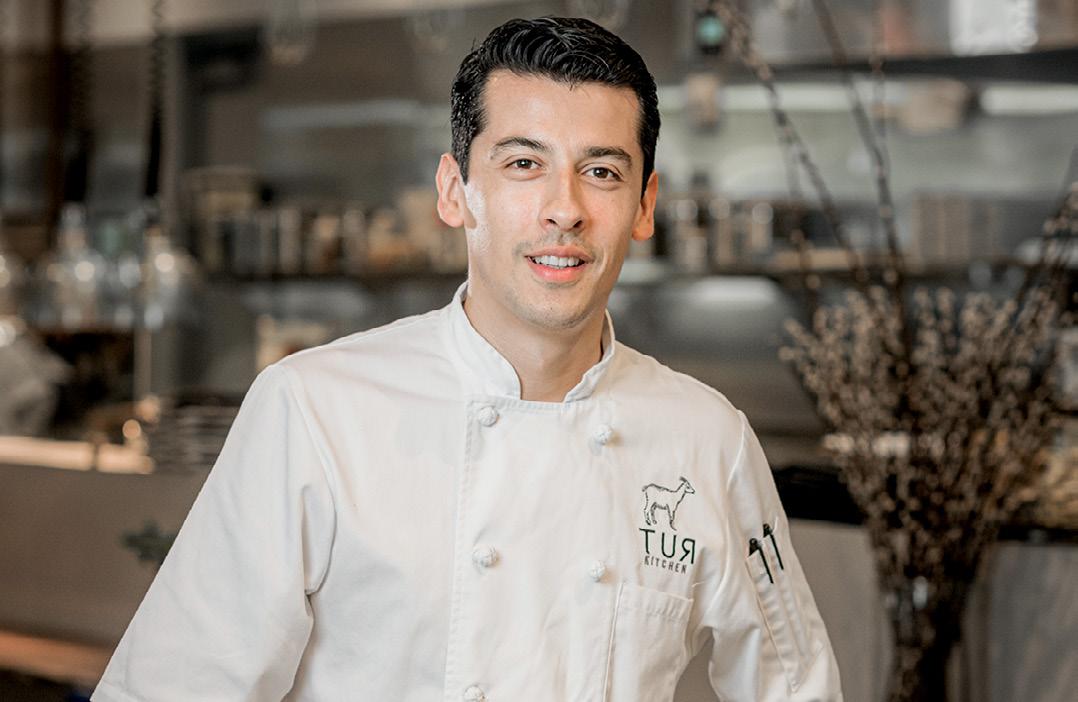

1 LB. CALAMARI TUBES
1 LEMON
1 GRAPEFRUIT
1 TSP SUMAC
1/4 BUNCH MICRO CILANTRO
4 OZ MEDJOOL DATES
1 JALAPEÑO PEPPER
2 OZ SPANISH CHORIZO
2 TBSP EXTRA VIRGIN OLIVE OIL EDIBLE FLOWERS
Begin by cutting your calamari into rings of approximately ¼-inch thickness and the dates and chorizo in small cubes. Set aside. Peel and cut your lemon into thin strips and submerge in olive oil. Prepare the grapefruit sections by cutting off both ends, removing the rind, and slicing into the fruit along the edge of the dividing membrane. Cut your jalapeños into thin rings and set aside. Pre-heat a pan with olive oil and sear the calamari for three to four minutes or until fully cooked. Add the chorizo and sauté for one additional minute. Transfer to a plate and add the fresh ingredients, starting with the grapefruit sections, sumac, dates, jalapeño rings, and micro cilantro. Finish with your lemon peels and garnish with edible flowers before serving to your highly impressed guests. ■
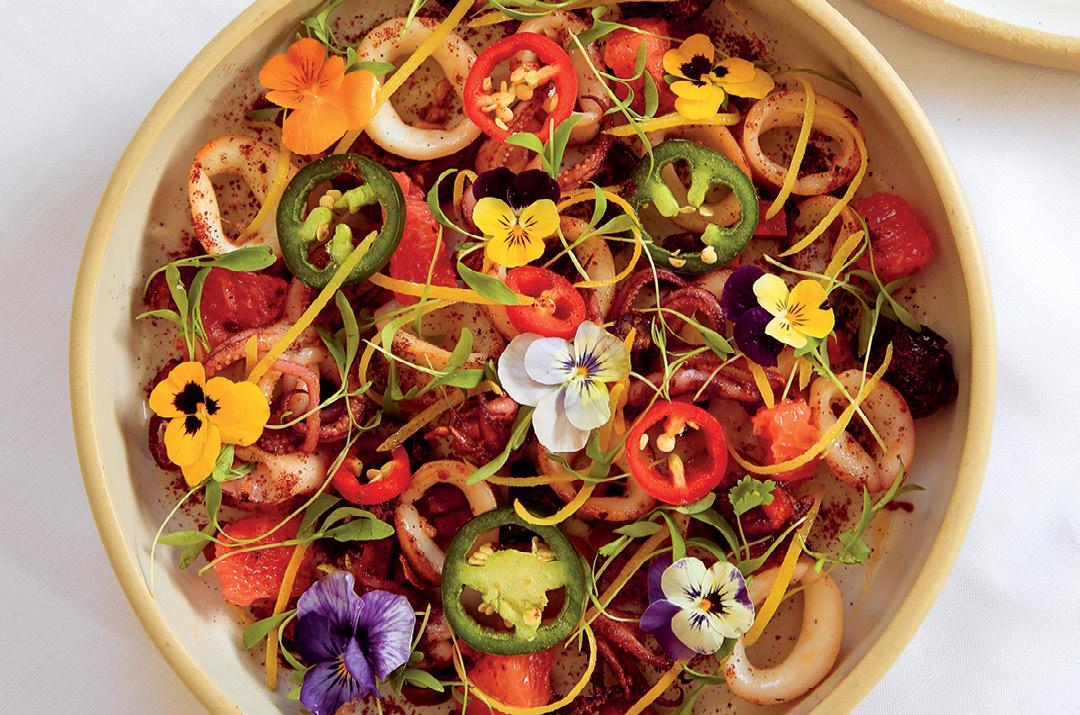



Juan Poggi has made a global reputation for himself with interior designs that are dramatic, personal, and dreamlike in their color palettes. With award-winning interiors from Paris to Palm Beach, Poggi prides himself on seeing each space through his clients’ eyes – combined with his own imagination, of course.

 BY J.P. FABER / PHOTOS BY KRIS TAMBURELLO
BY J.P. FABER / PHOTOS BY KRIS TAMBURELLO
Poggi’s first shop opened on Miracle Mile in 2006, and later in the Minorca building on Douglas Road. The Peruvian native remains a Gables resident today, and his house on San Antonio Avenue just west of the Shops at Merrick Park is a perfect sample of his philosophy that homes “are certainly temples, dedicated to items gathered through travels, or made-to-order pieces.”
It is also a remarkable transformation of a ranch-style house into a home not out of place in Kyoto. “The house is definitely about my love for Japanese architecture and design,” he says. “The idea is to keep everything open because I like to entertain – to keep it open and integrated.” By connecting rooms in the 3,000 square foot building, Poggi maximizes the space, offsetting the 8-foot-high ceilings. It is a home, he says, with “only three doors inside.”
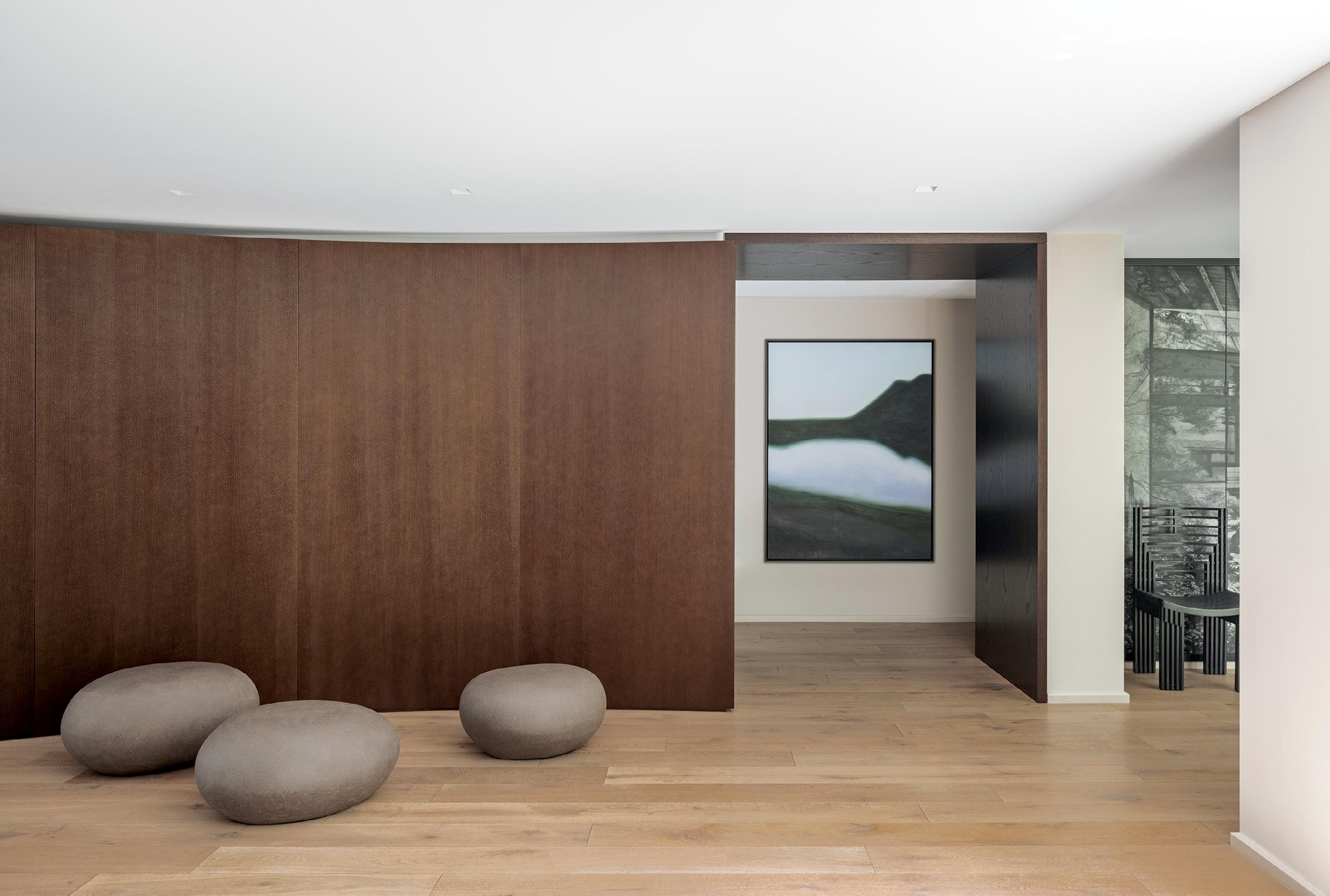
“This is the first thing you see coming into the house,” says Poggi: Three ceramic clay stones from Atelier Vierkant in Belgium, with the vibe of a Zen garden. “You can sit on them, but mainly they are decorative pieces.” The floor is French white oak; the curved inset wall, which hides an embedded bar, is of stained reef-cut oak.
The rear wall is gold leaf applied in a pattern of squares. “I wanted something with a little sheen but also subtle,” says Poggi. “You basically see it as you leave the house.” The table in front of it, from Luminaire, was designed by Japanese architect Tokujin Yoshioka; the chair, made of mahogany, stained black, is designed by architect Miguel Rodrigo-Masuré, and uses no nails.
“My idea was for people to be there next to me when I’m cooking,” says Poggi, for which he uses six Lem Piston hydraulic chairs against an island of black “leather finish” granite. Poggi designed the overhead grid of white oak “to create more of an ambiance in the space, to make it cozier,” he says. The wall paneling is stained walnut, while the cabinetry (also Poggi designed) is lacquered wood, made by Downsview in the DCOTA.

The alcove bed and frame are by Maxalto, from Luminaire. The frame is stained black oak, as are the custom-made cabinets, both designed by Poggi. The two side tables by Mobilfresno are Spanish-made dark oak. The solar shades for the windows go to the top of the walls, to maximize the 8-foot ceilings. The statue is Chinese, of a boy holding a fish for good luck.

The black leather ottoman and natural linen sectional sofa are both by Living Divani, and from Luminaire, as is the long Maxaalto chair. Poggi designed the platform coffee table, made of white oak and one-inch-thick glass. The dining table in the rear is by Flexform, with wishbone chairs by Fritz Hansen. The bookcases of unfinished maple plywood were designed by Poggi, as were the fake horsehair handles to the TV cabinet on the right. The woolen rug was designed by Poggi and made in France by Solstice.

Zone 1
Where Palm Trees Reign: 1414 Capri St.

Each year, the City of Coral Gables’ Landscape Beautification Advisory Board awards six residential and commercial properties with Awards of Appreciation for those with landscaping that best contributes to the overall beauty of the area. The city is divided into six geographical zones for the contest. Each property must meet a series of criteria first. They must be within Coral Gables city limits, have no zoning violations, and utilize garden materials. Properties that have won garden awards in the past five years are not
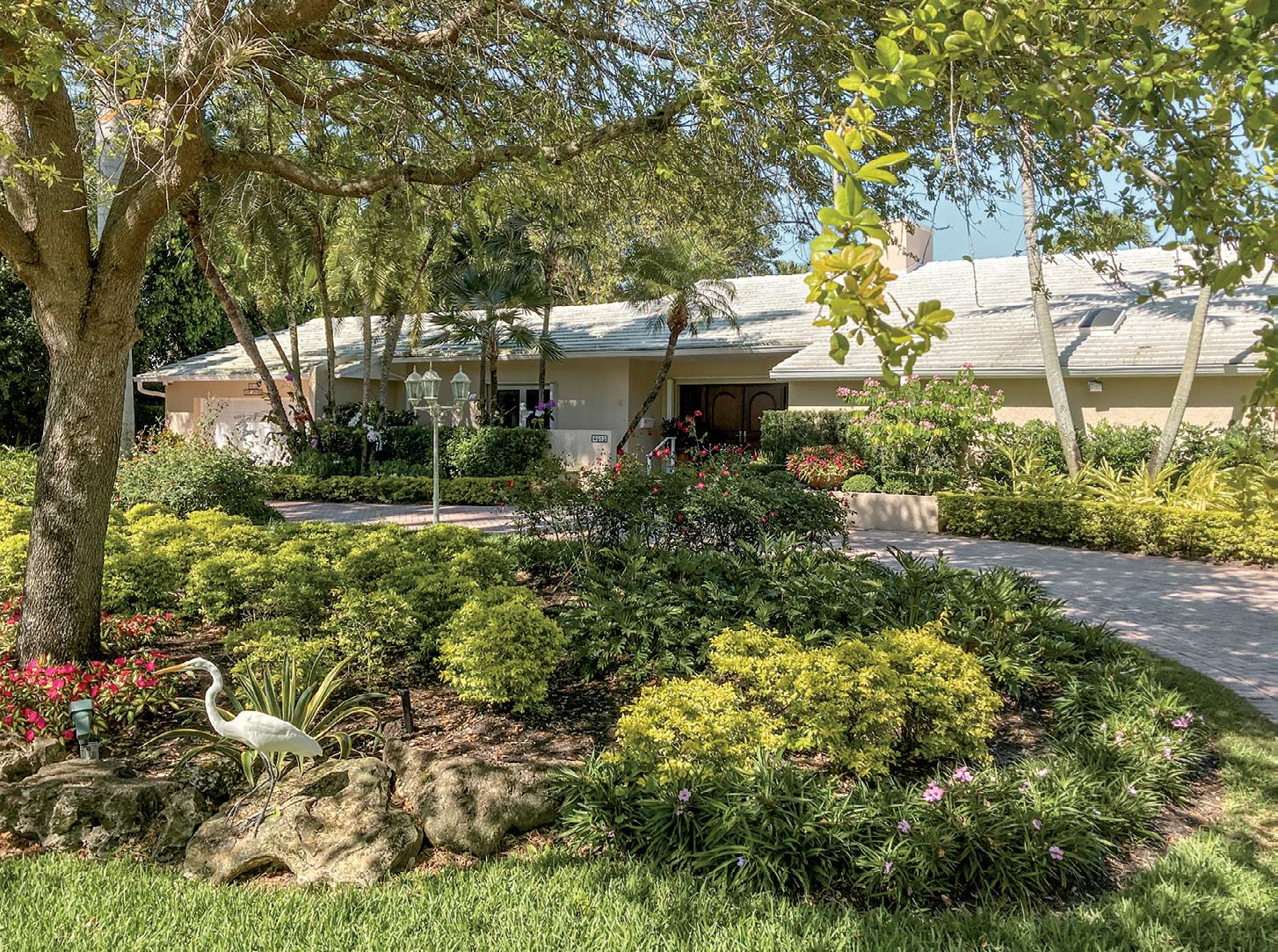
Zone 2
Lush Ground Cover: 4615 San Amaro Dr.
considered. The contestants are judged on parameters such as ecological sensitivity, shade, colors, and lushness. The landscaping is expected to stand out as a holistically designed space that blends color and details together, and provides shade, seating, or other amenities for residents. Most importantly, the properties must enhance the quality of life for Gableites.
Zone 3
Green in the Urban Core: 285 Aragon Ave.
(Coral Gables Museum)
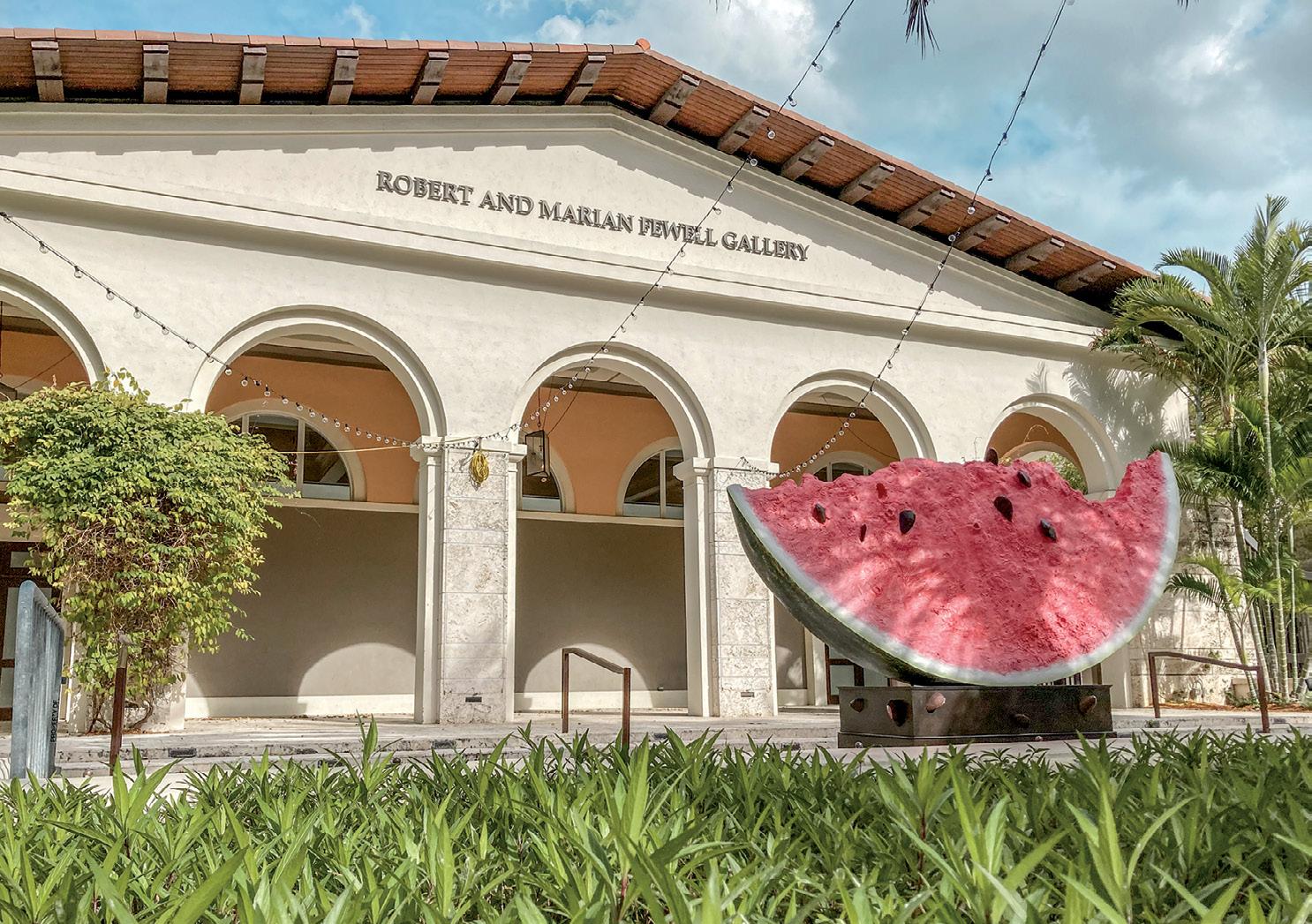
Zone 4
A Jungle in Miniature: 231 Fluvia Ave.
Zone 6
Dabbled with Color and Light: 9375 Balada St.
Zone 5
Formal Elegance: 6500 Leonardo St.

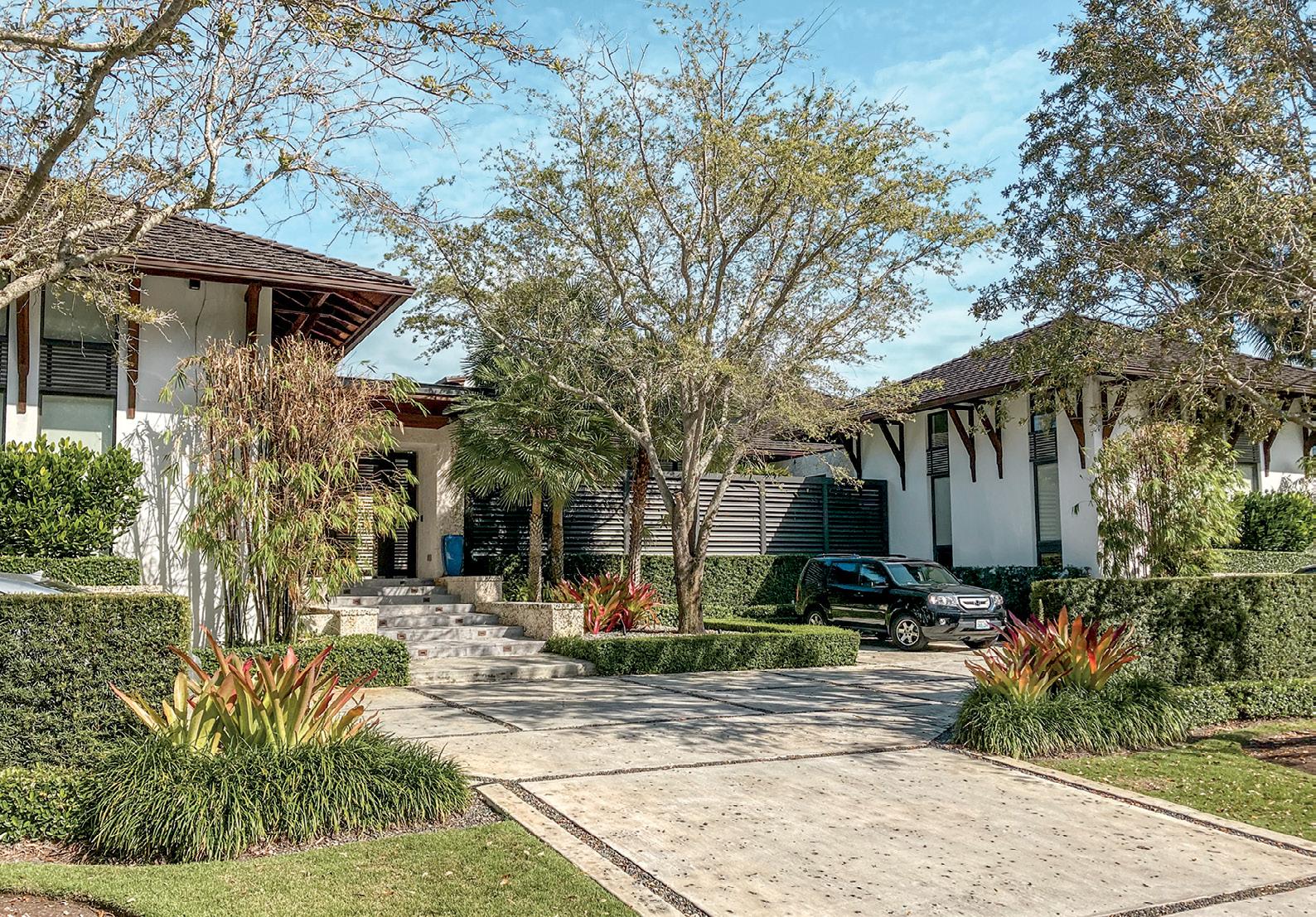

It was 10 am. A bit of an early start for most Key West tourists still sleeping off the previous night out. But there we were, 500 feet in the sky, desperately hoping a sudden surge of wind didn’t knock us into the Gulf of Mexico. The distant shoreline with miniscule palm trees and sunburnt tourists crowding the pier suddenly seemed very far away as the line connected to our parasail reeled us farther out and up. Our only company was a blacktip shark lazily gliding directly below our dangling legs.
Somewhere between thrilling and terrifying, parasailing ($69.95 at Sebago Watersports) is one of those prototypical Key West activities anyone can enjoy—as long as you don’t mind a small rush of adrenaline. For our part, we tried to experience Key West in every way possible—as adrenaline junkies, history buffs, and of course, as the tourists we were.
The history of the island is nothing to scoff at. We got our first taste at The Grand Maloney, a historic home turned boutique hotel just a few blocks from Duval Street
where we stayed two nights. The 1860s era home has gone through several renovations, most importantly after The Great Fire of Key West in 1886, when 50 acres of the island burned to the ground. The property was rebuilt with a tin roof and brick walls, aiming to be one of the most fire-resistant homes on the island.
The hotel, which feels more like an AirBNB, is owned by the Spottswood family, one of the Keys’ oldest families and owners of other hotels and properties in the surrounding area, including the Key West Marriott Beachside Hotel. While some of those properties offer a more traditional hotel experience, The Grand Maloney is Billy Spottswood’s unique brainchild. “ The traditional hotel model is like focus groups — they want to build things that everyone likes, so that’s why they all look exactly the same. It’s like the same box,” he told us. “We want to make places that a lot of people love, not places that everyone likes.” With each of the six rooms uniquely themed and tropically colored, The Grand Maloney feels like a
THE GRAND MALONEY, A HISTORIC HOME TURNED BOUTIQUE HOTEL IS ON CAROLINE STREET, A SHORT WALK FROM DUVAL STREET. OWNER BILLY SPOTTSWOOD SAYS, “WE WANT TO MAKE PLACES THAT A LOT OF PEOPLE LOVE, NOT PLACES THAT EVERYONE LIKES.”

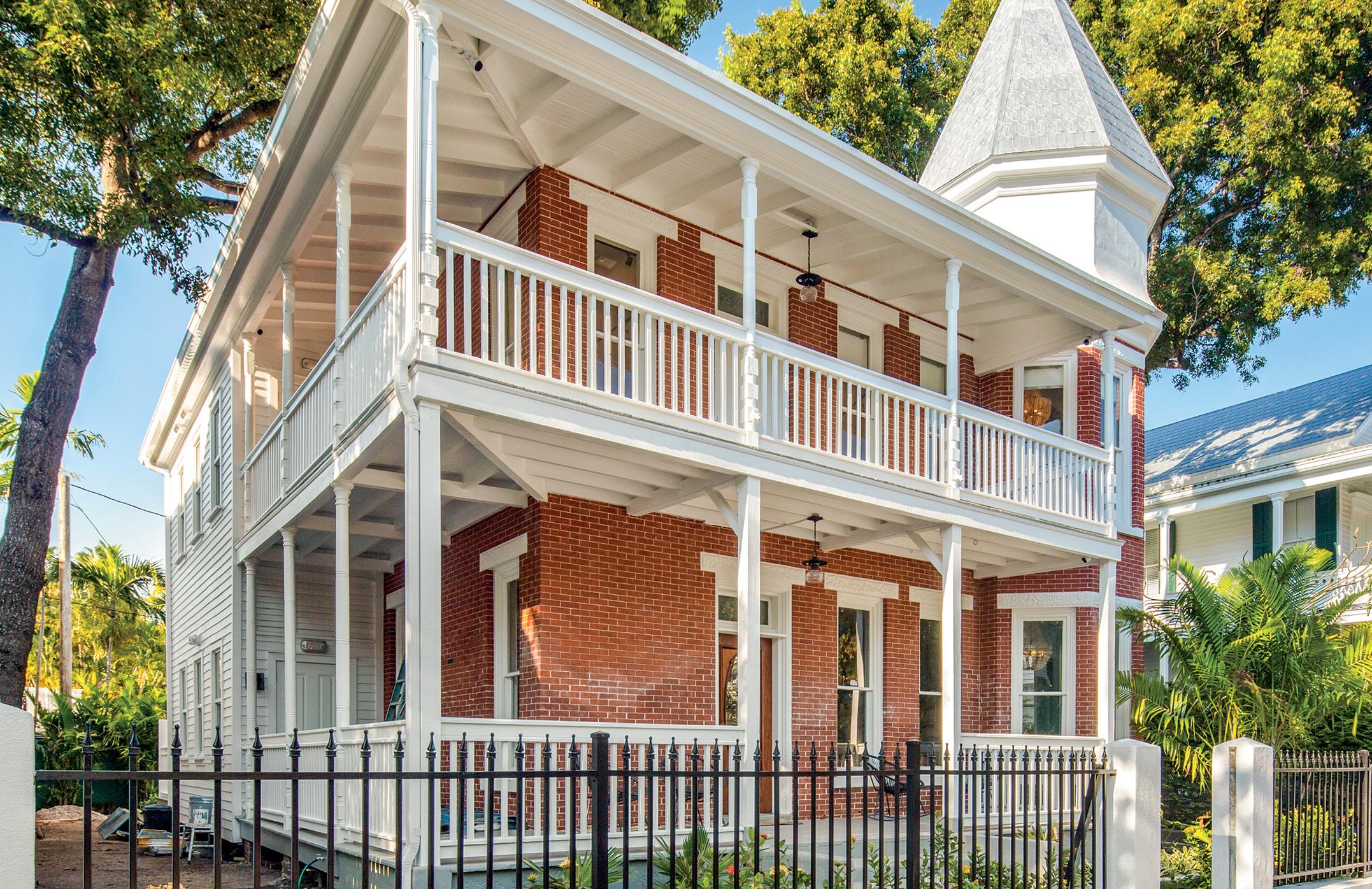

microcosm of Key West itself — an island of its own decorated with sponges (a throwback to the original owner’s sponging export business), shower tiles in colors so bright they stop just short of garish, and wallpaper featuring Miami Vice-styled palm fronds.
The Grand Maloney is also located in one of the charming historic areas of the city, a few blocks in from the old waterfront but close enough for a stroll to Sloppy Joe’s (or, in the other direction, the Key West satellite of Books & Books). It was a longer walk to the Hemingway House ($17 for entry, cash only), and though we missed the guided tour we still managed to enjoy the grounds where the prolific writer penned some of his best works and where we had the chance to see some of the famous six-toed cats.
After Papa’s home, we abandoned attempts at historic edification, though there are plenty of opportunities here, from Audubon’s 1800s home to Mel Fisher’s treasure museum. Instead, after a brief rest, we stumbled upon Dante’s pool bar down by the City Marina. Sipping frozen strawberry daiquiris poolside, we watched parents play floating beer pong while their kids cavorted in the shallows. Advertisements featuring hydrating IVs were quite aptly placed by the bar. Next came a two-hour Sunset Sip n’ Sail cruise ($59.95, open bar included) on the Gulf, which had a similar atmosphere, although this time the cavorting youngsters were replaced by frolicking dolphins and drinkers, ages from 21 to 70.
With eight generations of Key West knowledge, we entrusted our dinner plans to the Spottswoods, eating at the decadent Tavern N Town restaurant inside the family’s Marriott Key West, located at the north end of the island, right after the bridge from Stock Island. Tender and flavorful Australian Wagyu steak set to the tune of live piano music and an open kitchen made for the kind of fine dining experience you’d expect at a Coral Gables steakhouse.
While Duval Street is a far cry from Miracle Mile, it makes for great people watching as the crowds churn up and down the island’s main tourist drag. We enjoyed our after-dinner stroll in search of more drinks, oftentimes running into the same people over again — also oftentimes in the same clothes they were wearing the night before. That’s the Key West experience: Bring a multi-use outfit consisting of swim trunks and a Hawaiian shirt and you won’t even need to stop off at your room to change between a jet ski ride and a brew at Hog’s Breath Saloon. ■
ABOVE: THE “BLUE ROOM” BEDROOM SUITE AT THE GRAND MALONEY HAS RETAINED A HISTORIC CHARM WITH A BRICK FIREPLACE AND BOOKSHELVES.

LEFT: A SITTING NOOK OFF THE LOBBY

BELOW: EXPERIENCING KEY WEST AS ADRENALINE JUNKIES WITH PARASAILING, COURTESY OF SEBAGO WATERSPORTS

FRONT: Marta Rodriguez - Emerson College | Ella Londono - New York University | Jasming Senel - Duke University | Kennedy Martin-Jones - Tulane University
Rocio Portal - University of Chicago | Stephanie Andrade - Hamilton College | Lea Bergeot - Northeastern University | Paulina Texier - Cornell University
Natalia Pallas - University of Pennsylvania | Emma Hardie - Boston College.
MIDDLE: Sabrina Bonavita - Davidson College | Jana Faour - Northwestern University | Jose Fernandez-Finale - University of California Los Angeles, David Kuper - University of Florida | Lauren Gregorio - University of California Berkeley | Gabriel Wagner - Vanderbilt University

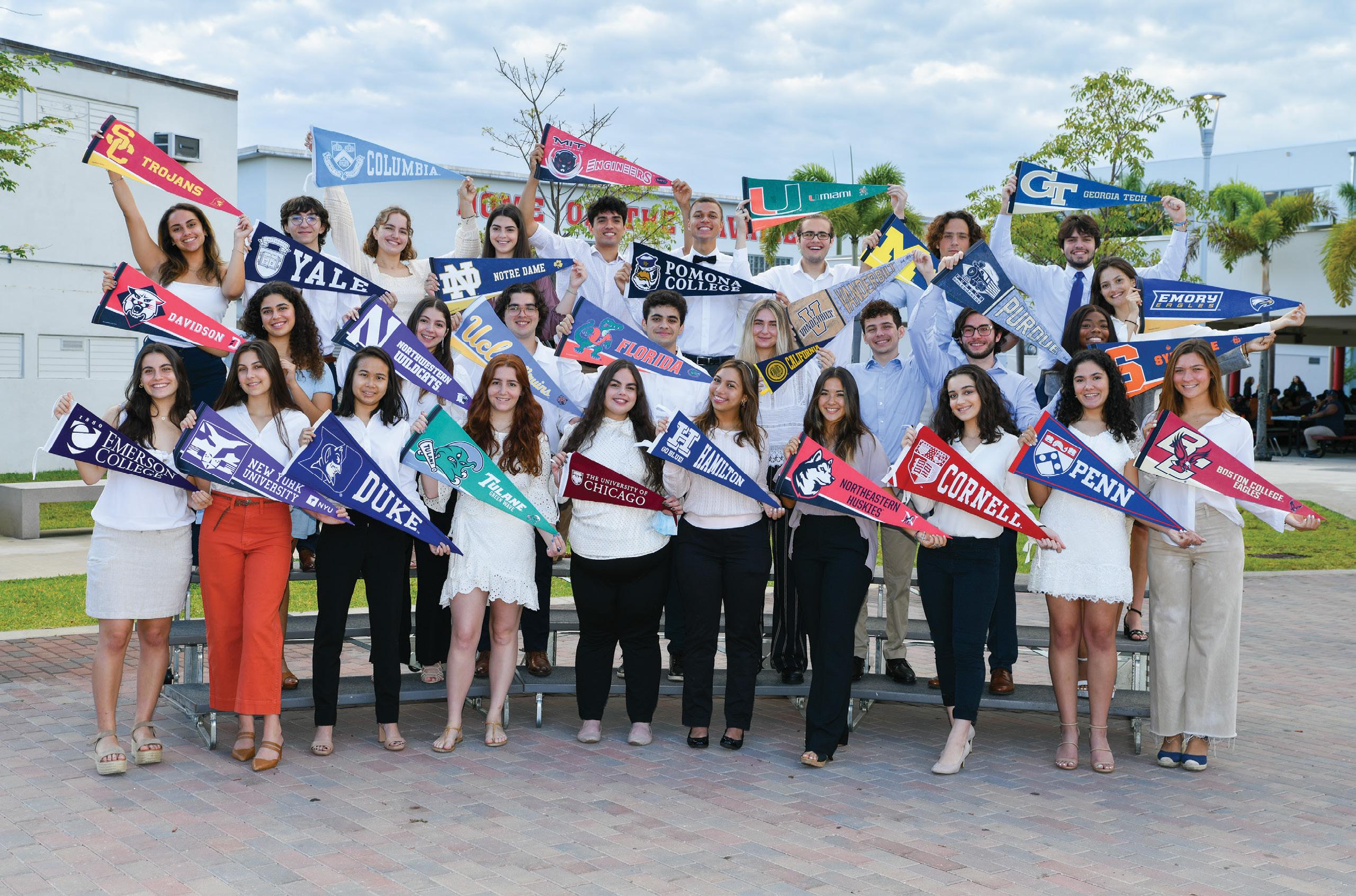
Hayden Hohman - Purdue University | Briell Robinson - Syracuse University | Valentina Bernal - Emory University.
BACK: Nataly Leiva - University of Southern California | Benjamin Sanchez Pla - Yale University | Maïa Berthier - Columbia University
Melanie Estrada - University of Notre Dame | Romulo Delgado-Gonzalez - Massachusetts Institute of Technology | Lawrence Stampino-Strain - Pomona College
Julian Mesa - University of Miami | Joaquin Breslin - University of Michigan | Alan Mor - Georgia Institute of Technology.

Last month Coral Gables Magazine celebrated its fourth anniversary with a party at the Coral Gables Museum, attended by more than 200 guests. Hosted by MG Developer, co-sponsored by BHHS/EWM, the event featured jazz saxophone, catering by Zucca, and spirits (including aged rum) supplied by Bacardi USA. The museum’s main gallery, open to guests, featured covers from the magazine’s first four years plus the final showing of the retrospective of Cuban painter Julio Larraz.
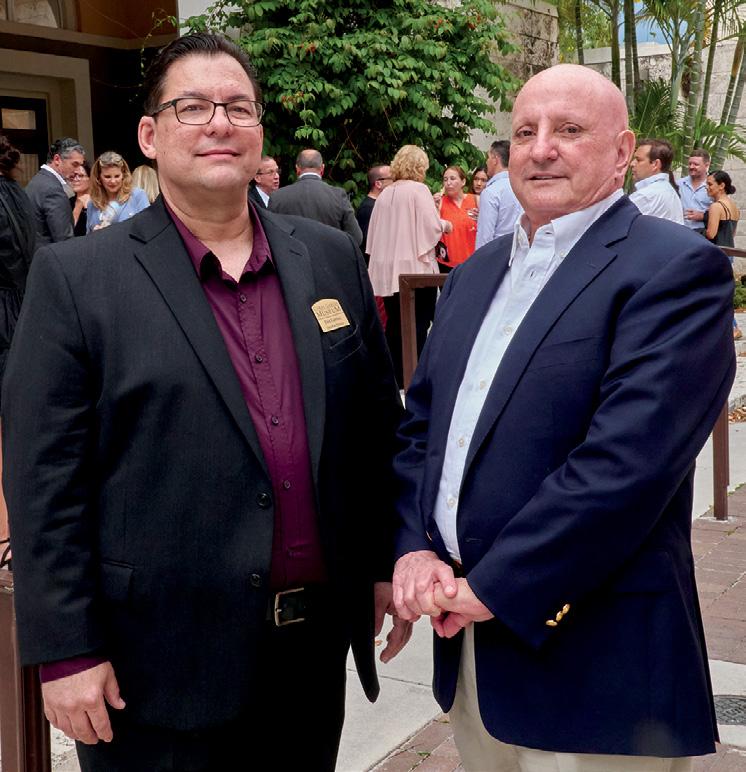
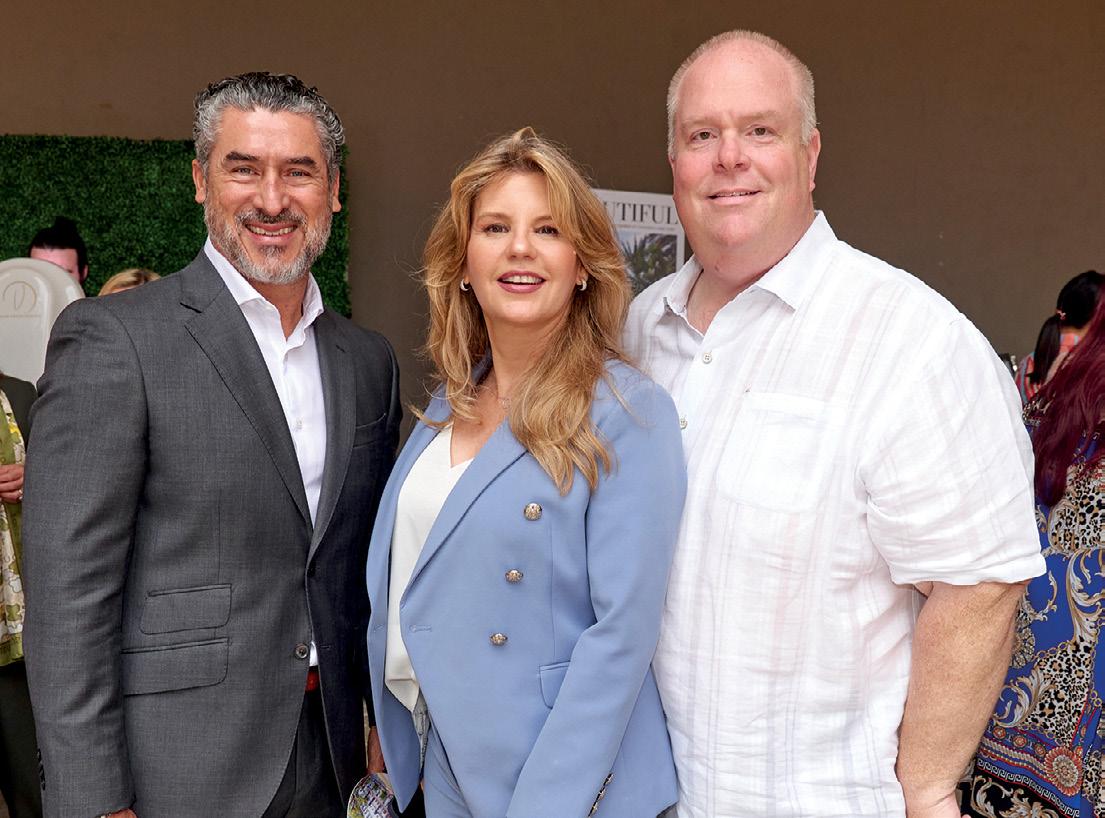

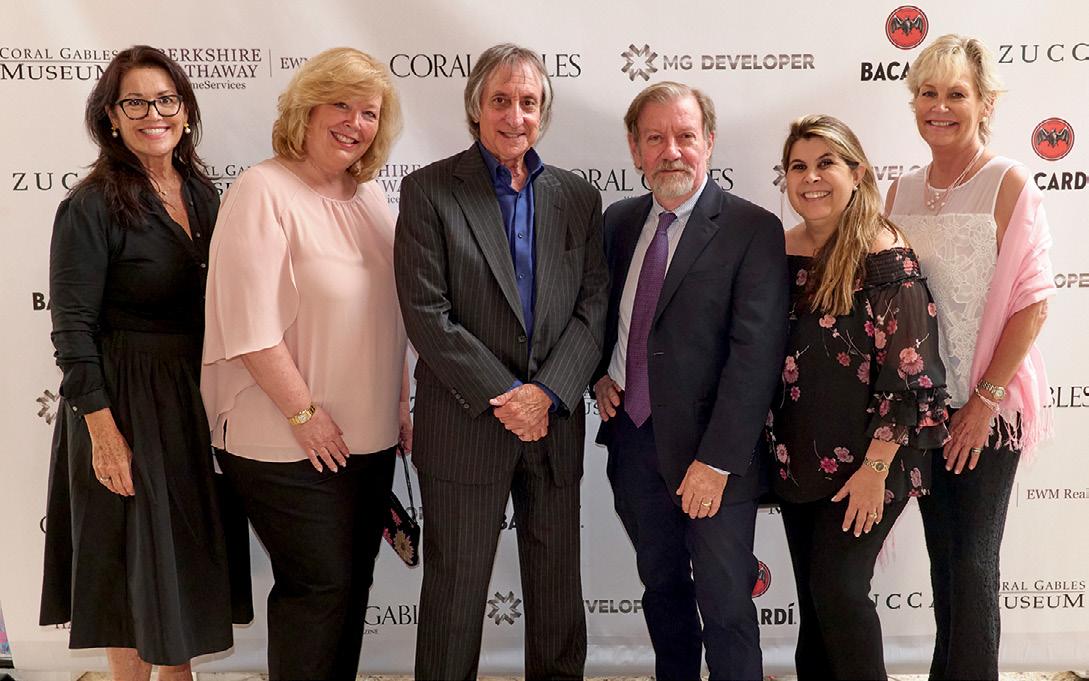
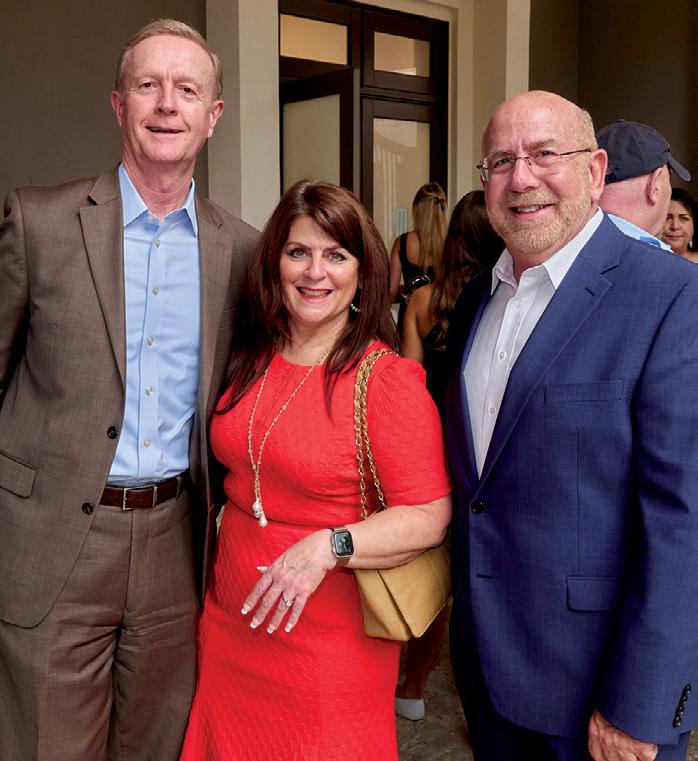

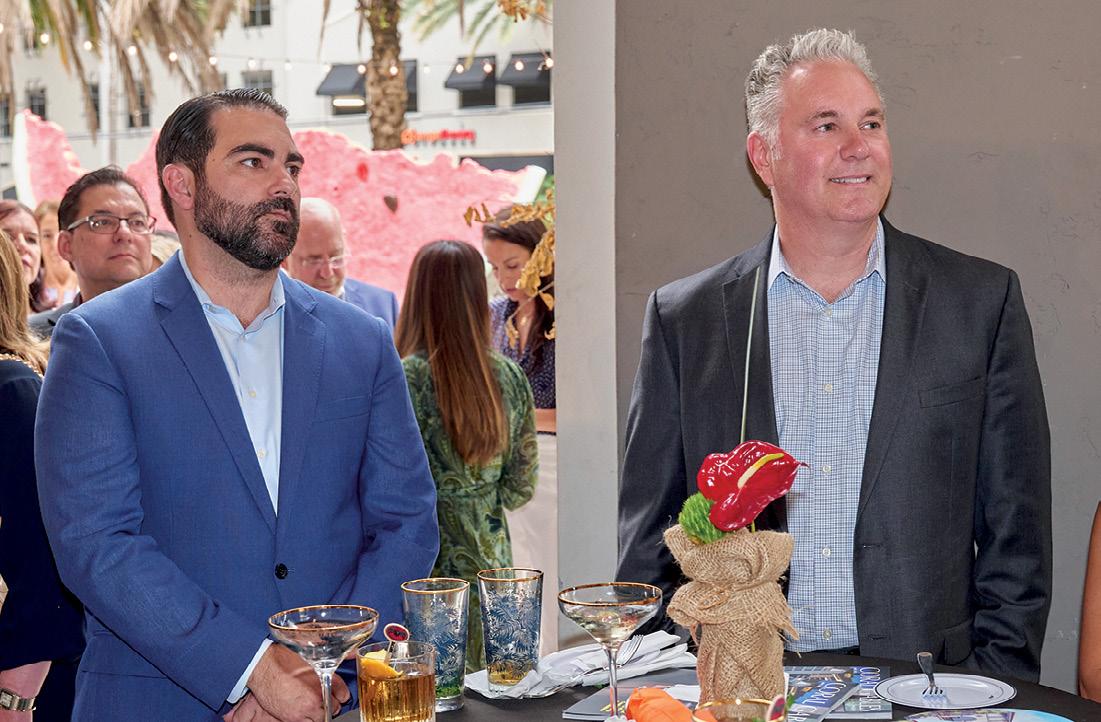
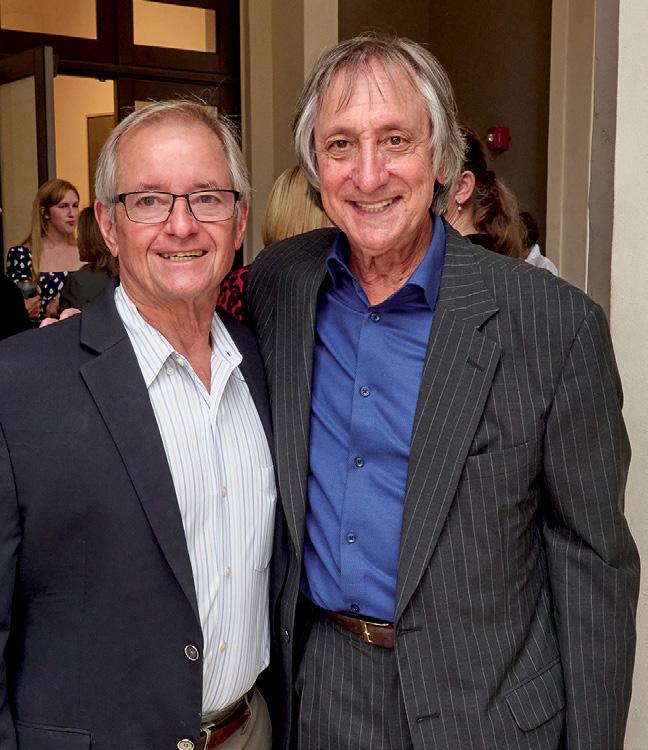
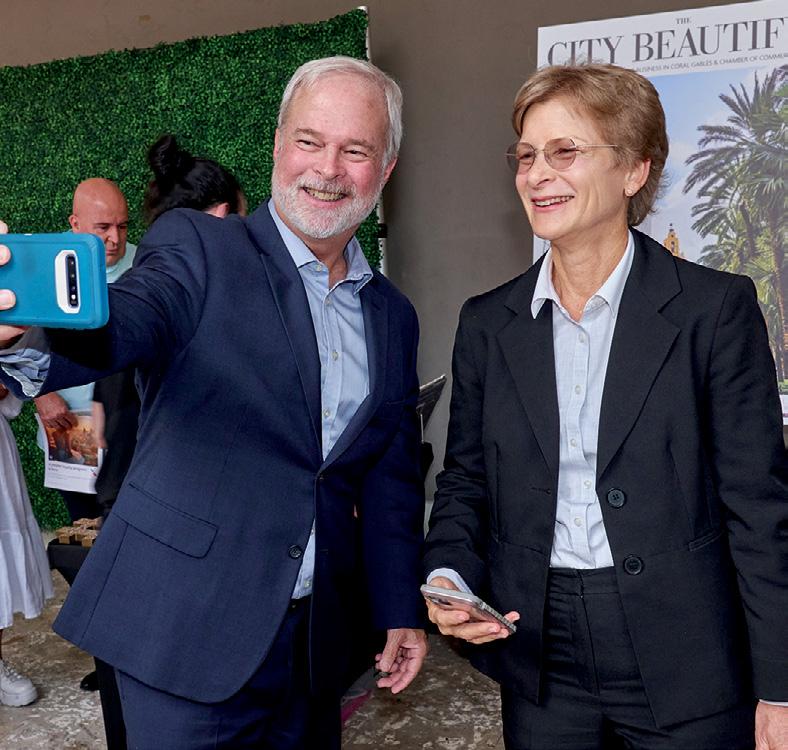
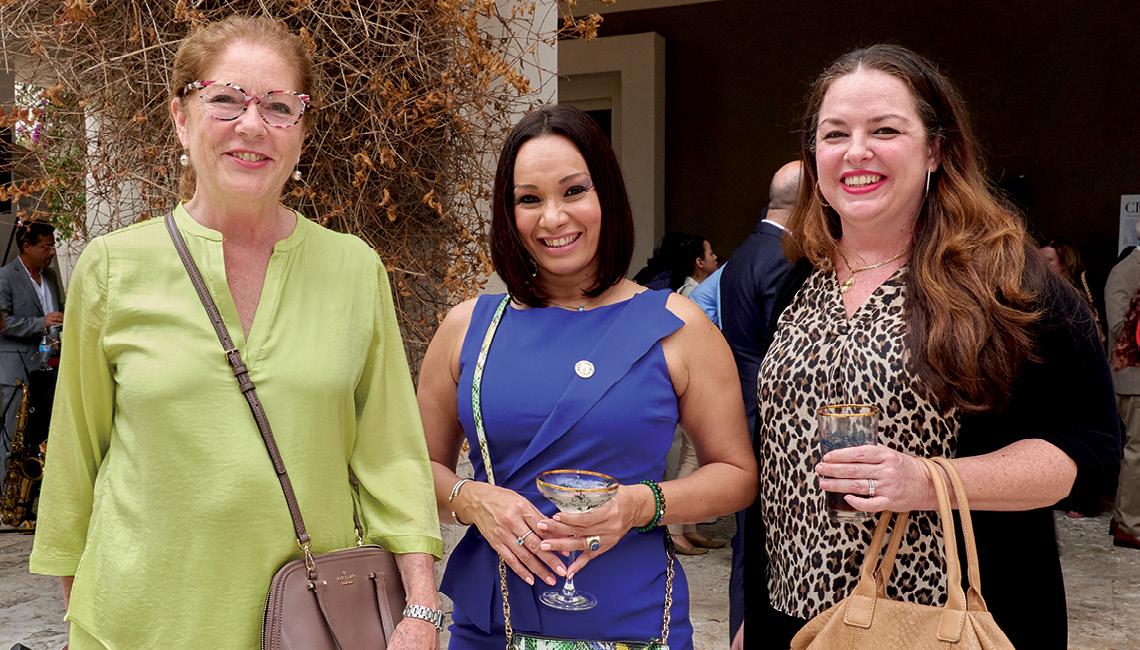
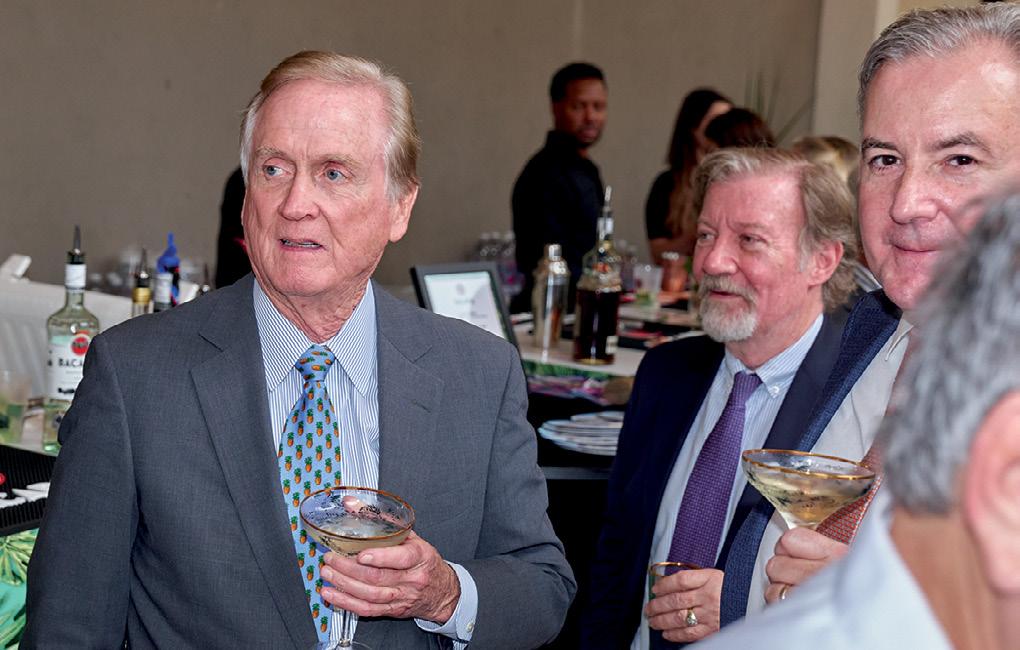
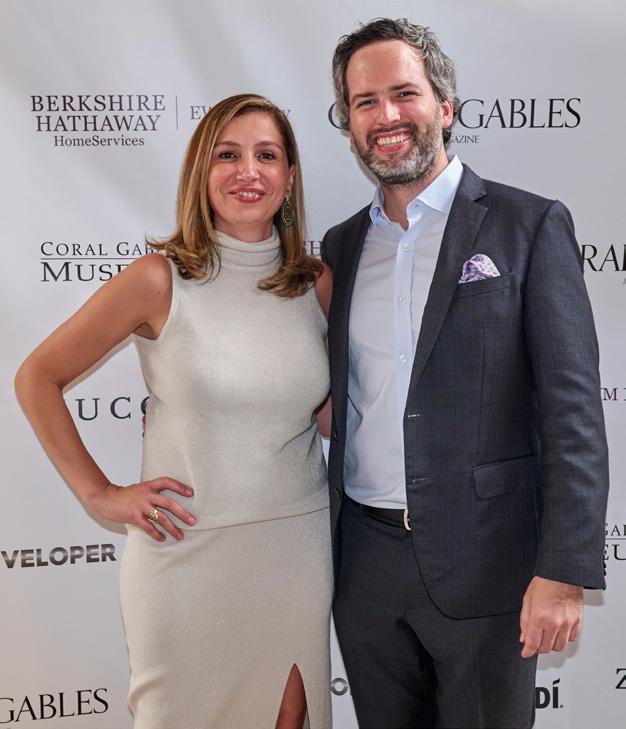
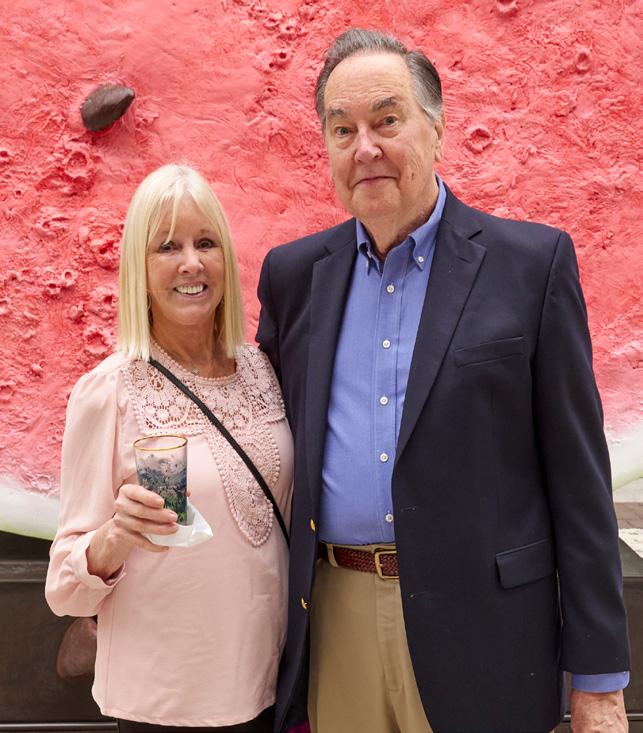
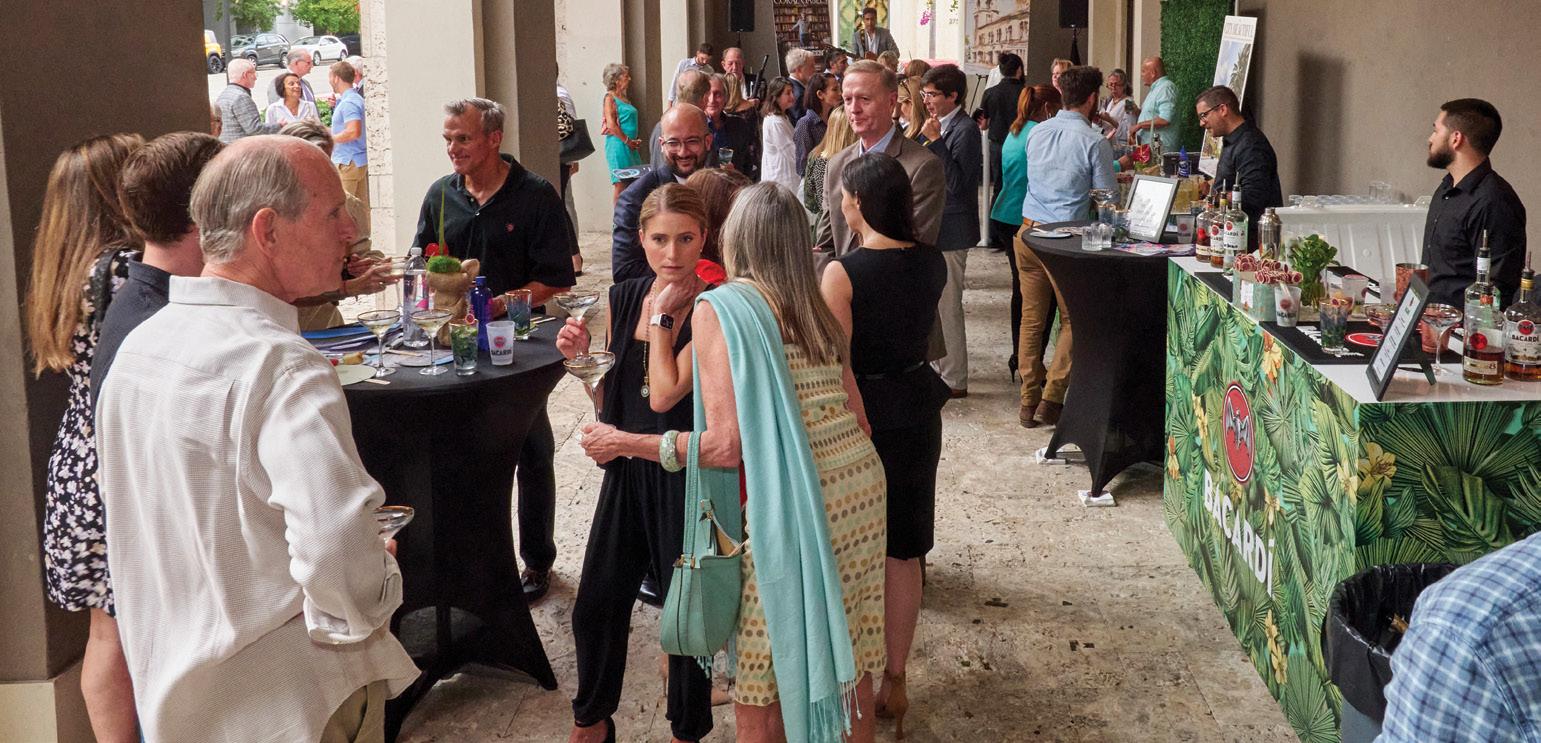

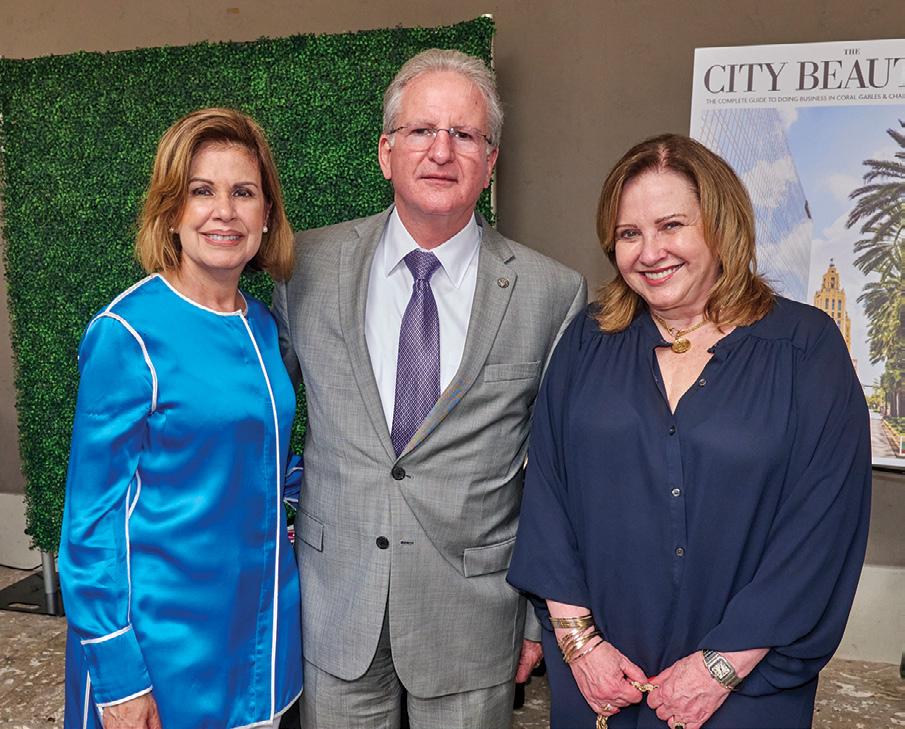
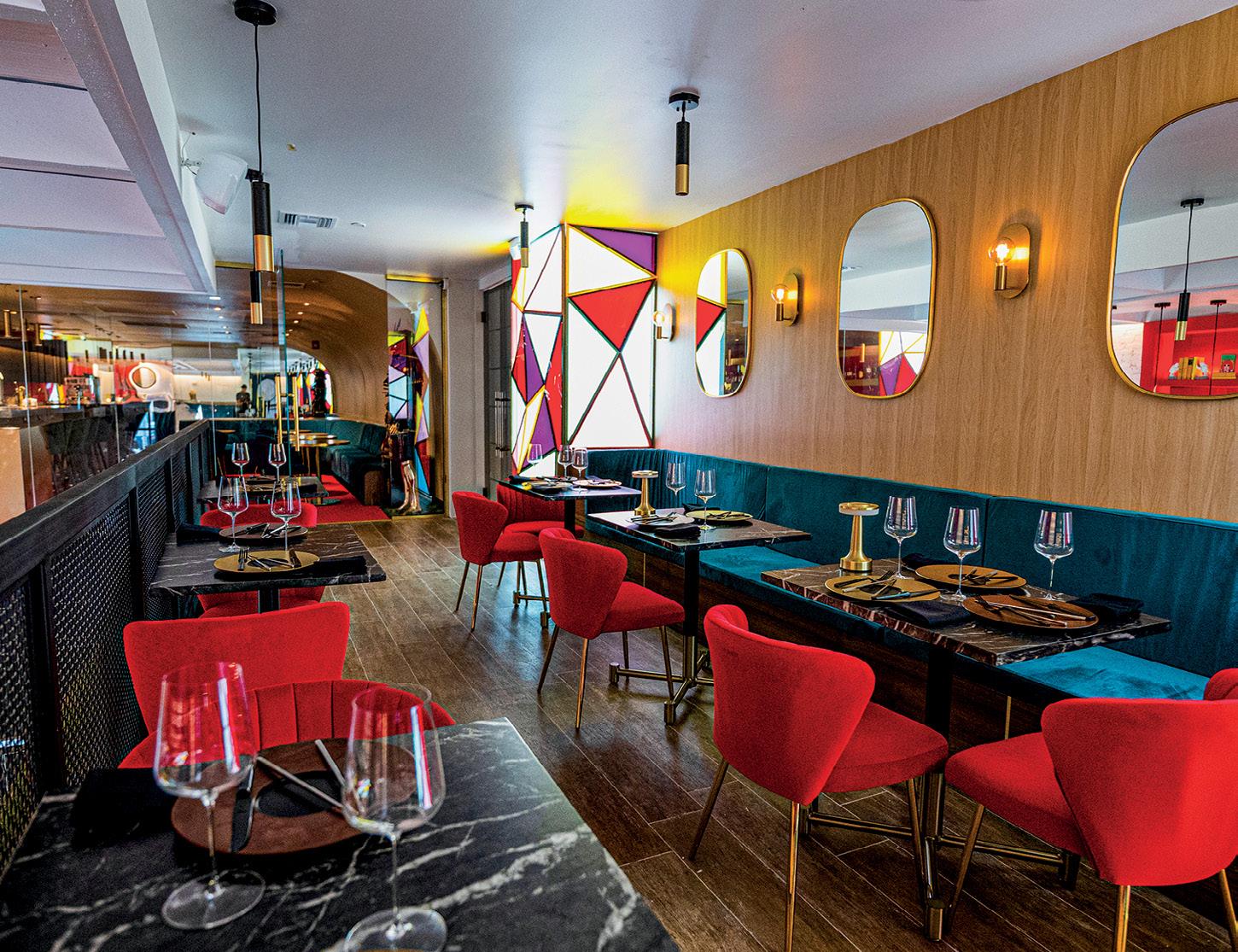
Even with the pandemic still lingering, a smorgasbord of new restaurants has opened in Coral Gables, with more to come. In keeping with our theme this issue of Innovation, here is a look at 20 new restaurants that have launched in the past year, along with a list of those expected to open in the next few months. We dine at all locations anonymously.

$ ............ Under $25
$$ .......... $25-$40
$$$ ........ $35-$75
$$$$ ...... $70-$100+
Prices are per person for appetizer and entrée, no tax, tip or drinks. Prices are approximate.
There aren’t many pure Greek restaurants in Coral Gables—Mediterranean is a better bet— but Calista is aiming to change that, serving up authentic Greek dishes with fresh ingredients sourced from local farmers’ markets. Their specialty dish is the Moussaka, an eggplant or potato-based dish reminiscent of a lasagna that is commonly served in Egypt, the Balkans, and the Middle East. Also excellent spinach and feta phyllo pie. $$
150 Giralda Ave. 786.310.7660
It’s hard to pigeonhole this new rooftop restaurant by Chef Jorge Ramos (fresh from his acclaimed Barley restaurant in Dadeland). He calls it “contemporary American with a Latin overlay,” which means roast bone marrow with salsa verde and baby back ribs with pimiento marmalade. A good raw bar, a great view, and amazing “Spanish” fried chicken with a guava glaze. $$-$$$
124 Giralda Ave. 786.409.2287
Making use of the brick oven from Spritz’s old days, Coppola’s Gables location has started making pizzas in addition to their regular authentic Italian specialties, a move that may prove fruitful in the ever-ongoing battle for the
best Italian restaurant in Coral Gables. They have seafood, salads, pasta, chicken, and beef as well, but pizza is the star here. $$ 2305 Ponce de Leon Blvd. 305.444.3388
CRAFT
A classic take on American food with an emphasis on breakfast, CRAFT is one of the latest additions to Giralda Plaza, open early (8am everyday) and serving everything from picante pizza sprinkled with Doritos, jalapeños, and onions to their Post-Apocalyptic Brunch Plate (eggs, bacon, mini croissant, mini waffle, granola, prosciutto and melon bite, avo-toast, goat cheese croquette). Surprisingly, some of
the best bacon we’ve ever had. $-$$ 127 Giralda Ave. 305.339.5981
For art lovers and foodies alike, Crudos blends both into an Asian fusion dining experience complete with sushi rolls and a variety of mojitos (available for the amateur bartender in “Do it Yourself” kits). The new Coral Gables spot is Crudos Fusion Art’s fourth location under Executive Chef-Partner Edixon Hernandez and includes a Japanese highball whiskey lounge, Aka, on the second floor. Try the POP sushi roll for something different — pop rocks included –in this “immersive experience.”

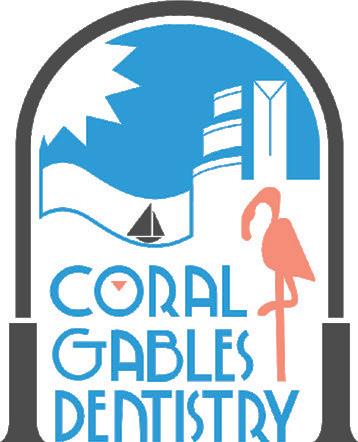
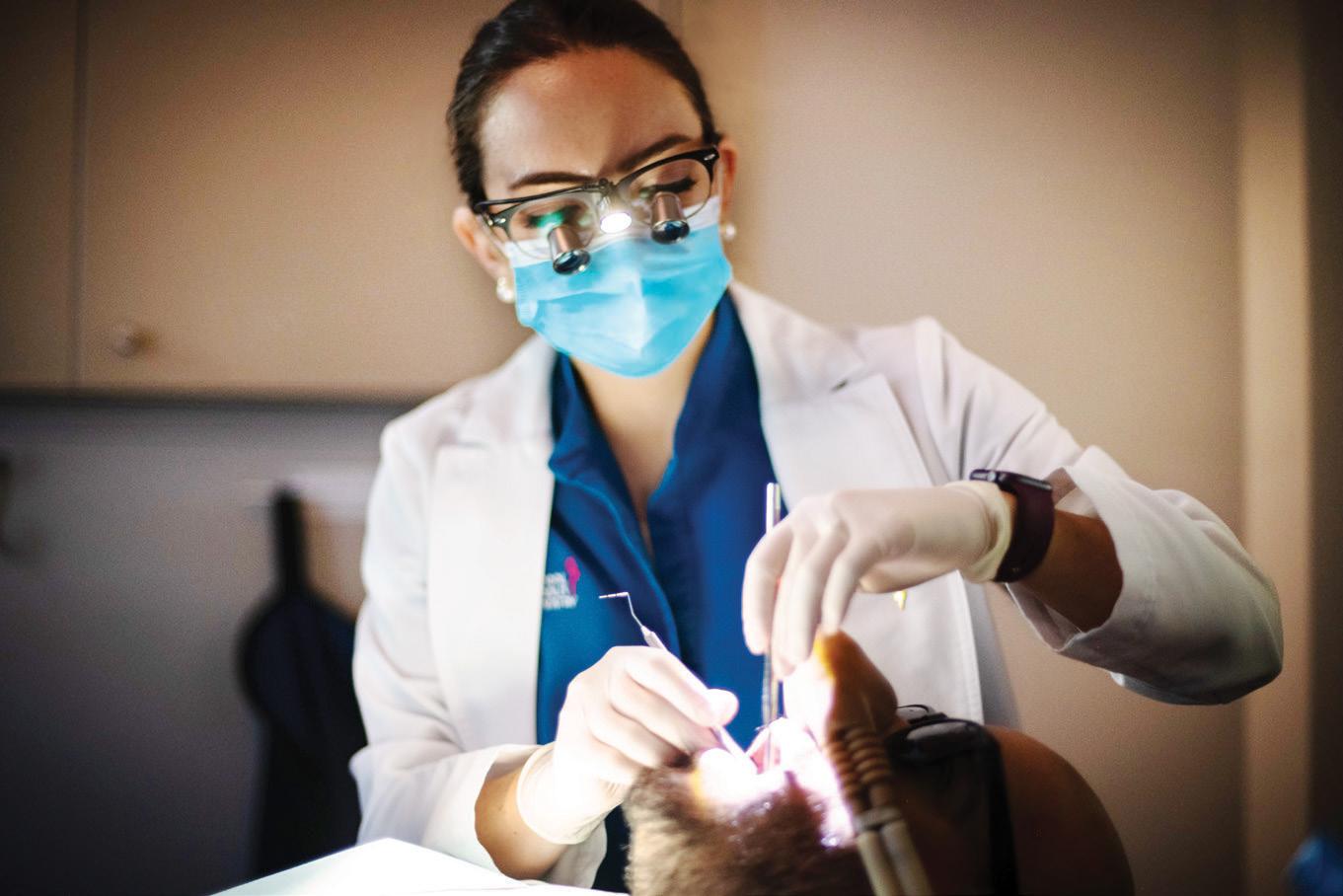
$$-$$$
2415 Ponce de Leon Blvd. 305.392.0054
Fogo de Chão
At Fogo de Chão, meat reigns supreme. Try the Churrasco Experience ($61) and let expert gaucho chefs keep the finely cut slabs coming, from beef ribeye to flank steak to lamb pincanha. If you’re a Wagyu fan, this is the place to be. The interior is as grand as the experience, which is a show in itself, Brazilian style. Great cocktails in the upstairs lounge for before or after. $$$-$$$$
2801 Ponce de Leon Blvd. 786.297.8788
La Jamoteca
While you can’t sit down in a formal setting to eat the pounds of jamón decorating the walls at La Jamoteca, you can down a sandwich at a window seat – or bring it home. The newly opened Spanish deli isn’t a restaurant, per se, but it is the best place to go for a suckling pig, a pound of sausage, or, of course, a ham the size of a toddler (carving services available). $$-$$$ 359 Miracle Mile. 786.360.4376
Laki Bowls
The latest build-a-bowl restaurant in Coral Gables. Choose a base (rice, quinoa, salad), proteins (seafood, chicken, steak), toppings (various fruits and veggies), and a sauce (spicy
mayo, eel sauce, cilantro aioli, aji amarillo), and you’re good to go. $ 2207 Ponce de Leon Blvd. 786.703.7010
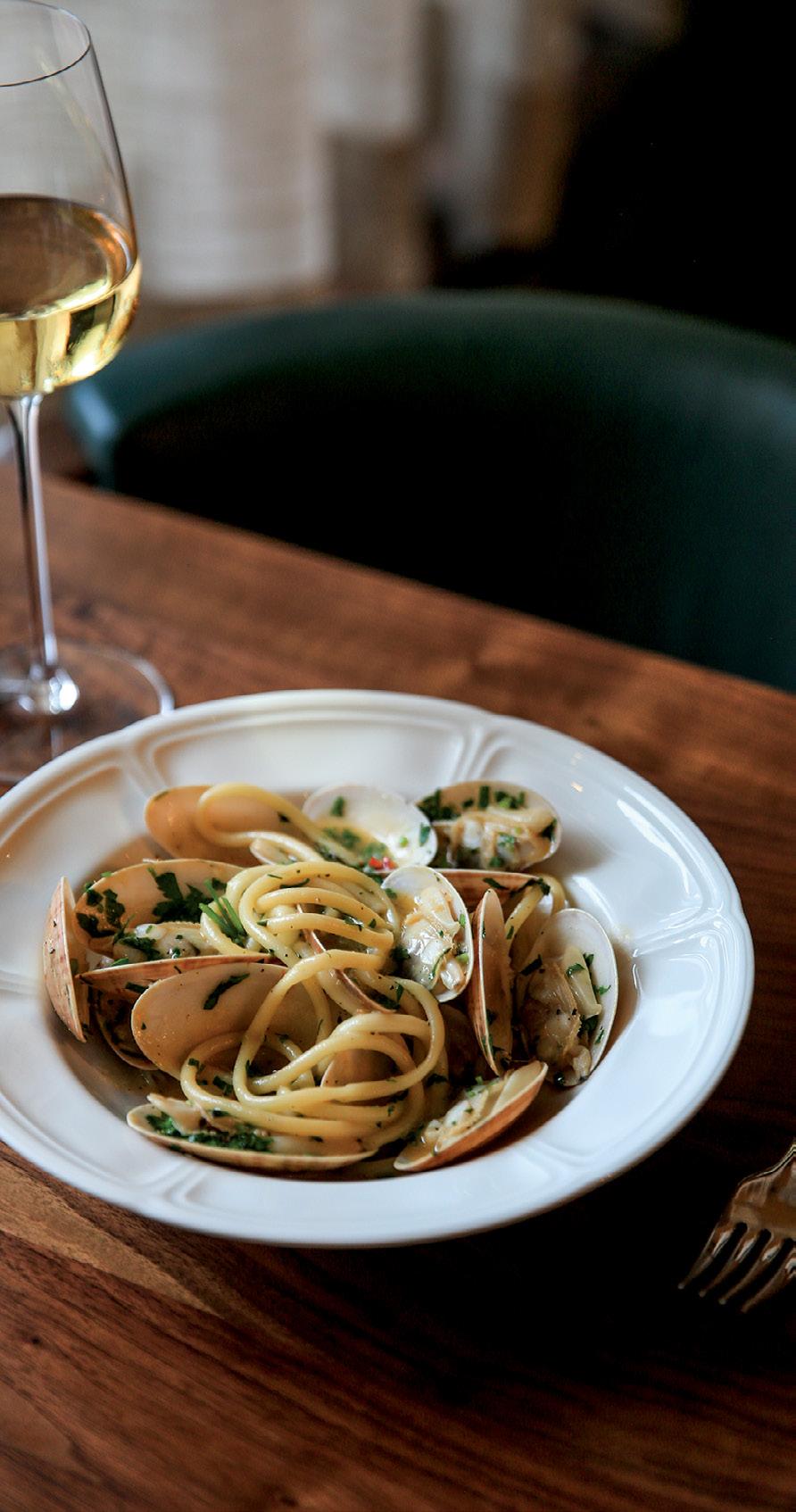

Intimate setting in the space previously occupied by Mynt, Las Tapas is the newest entry in the category of fine Spanish cuisine. Fish flown in from the Atlantic and Mediterranean, with a special focus on dishes from Galicia in the northwest and Barcelona on the east. $$$-$$$$ 276 Alhambra Cir. 305.381.0636
At the newly opened Lion and The Rambler, everything is made from scratch, from the creme fraiche down to the finishing salts, which are extracted from Miami seawater and hand-delivered to the restaurant by a local fisherman. The inventive restaurant serves up a nine-course tasting menu as much inspired by the three-Michelin-star Denmark restaurant Noma as the humble Cool Ranch Dorito. Try an infladita and see what we mean. $$-$$$ 804 Ponce de Leon Blvd. 305.603.7612
The One on Sunset
Replacing Swensen’s, which had been open for 44 years before becoming a pandemic casualty last year, The One on Sunset has retained much of the same American diner charm with classic
milkshakes and burgers, healthy bowls, and a surprisingly full coffee menu. In a modern twist, patrons can order using tablets while sitting in booths beneath the original Swensen’s lamps. $
1586 S Dixie Hwy. 786.332.2417
Opera
Chef Consiglio, along with partner-chef Gianluca Canna, makes a point of offering an array of dishes that include veal ossobuco, 10 varieties of pizza, fresh “al dente” pastas, and starters, including a wickedly delicious plate of truffle oil-laced prosciutto with baby artichokes ($16). But for us, the trip is worth it just for the branzino. $$
130 Miracle Mile. 786.391.1276
Orno
Located in the same building as Mamey (THesis Hotel), Orno is Chef Niven Patel’s latest creation, focusing on “New American” cuisine with a changing menu based on farmto-table local produce. An eclectic approach lets Patel stretch his culinary imagination, using a wood-burning oven and a wood-burning grill. Be prepared for new and fascinating flavors. $$$
1350 S. Dixie Hwy. (THesis Hotel) 305.667.6766



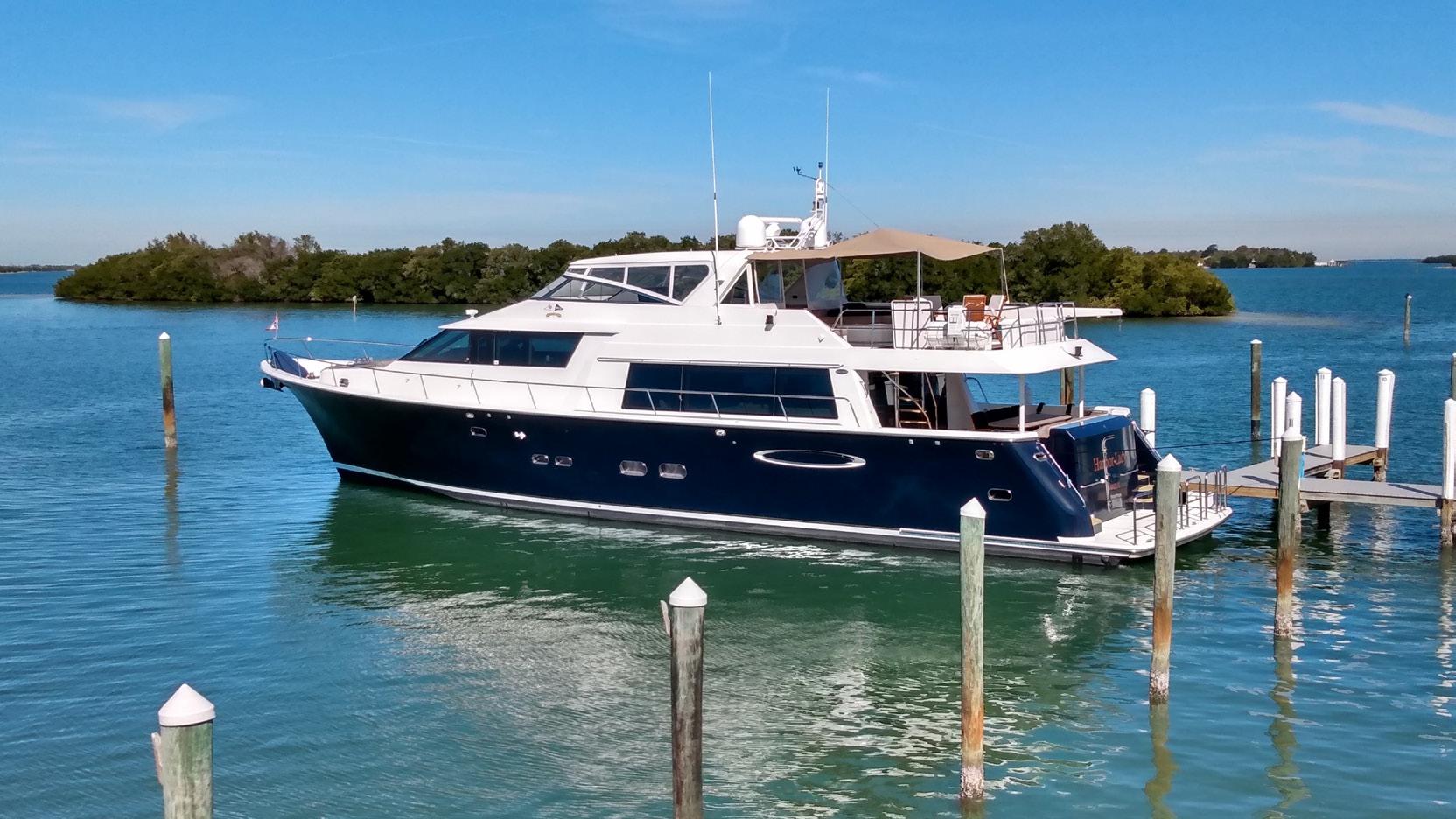
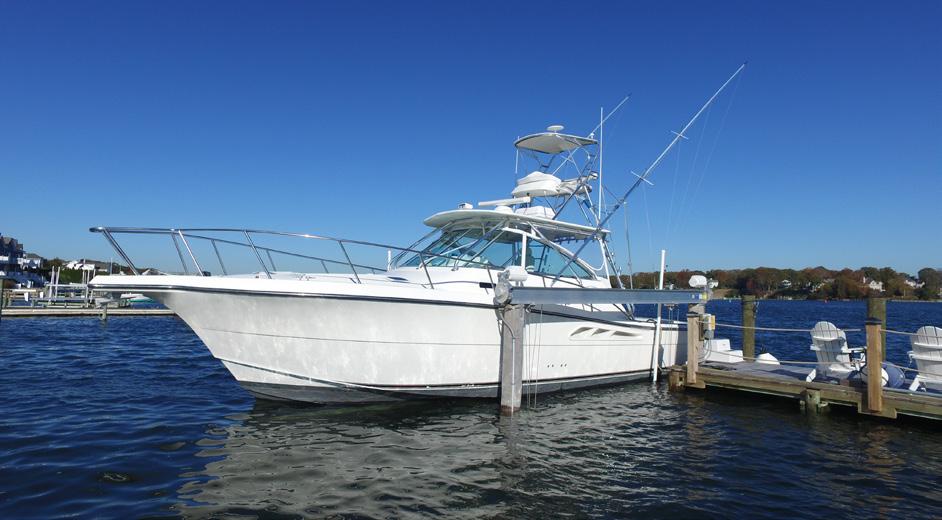

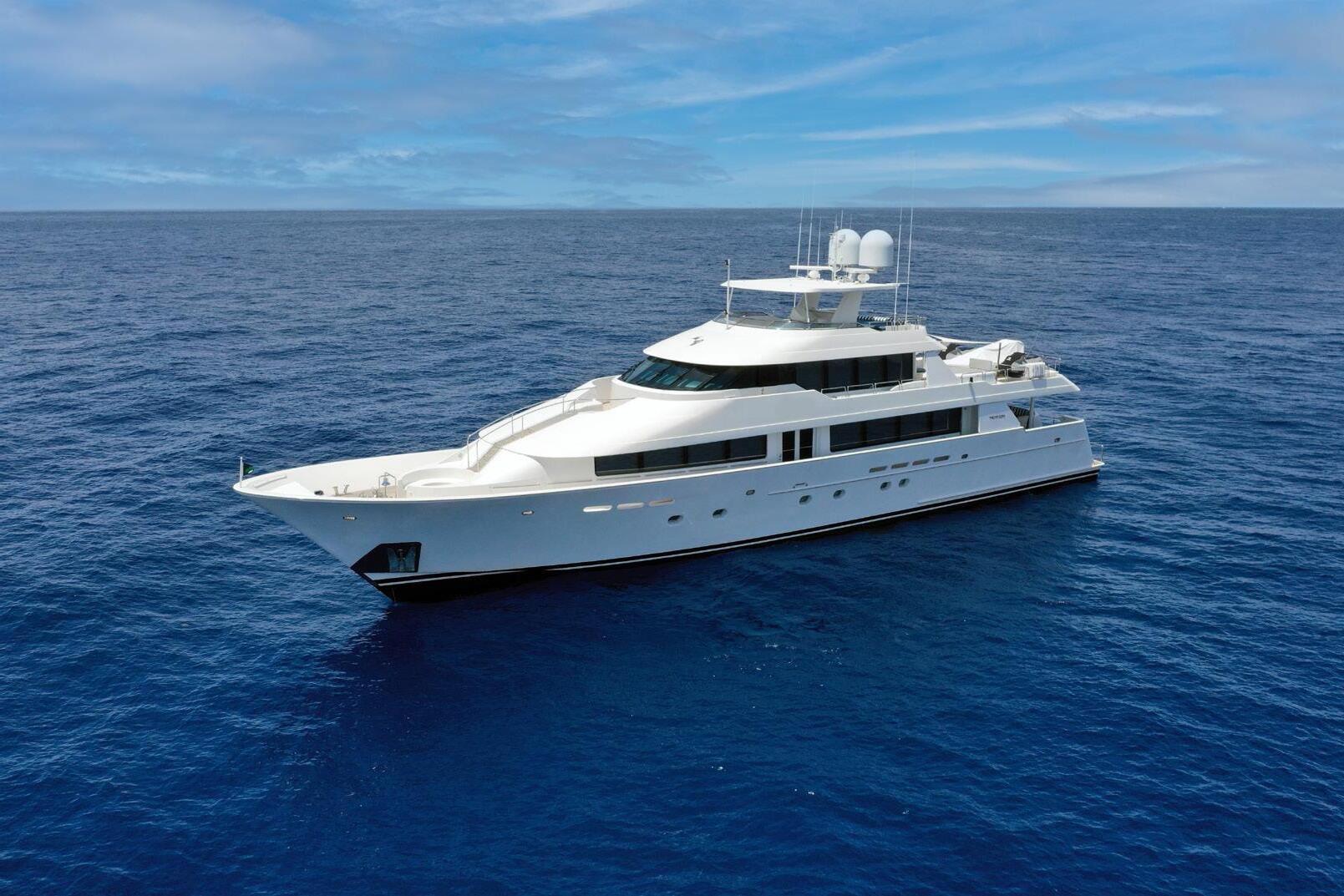


Sushi Sake
Just one block south of Sushi Maki, Sushi Sake is the latest contestant in the battle for sushi fans, with an upscale edge and a menu that stretches past sushi, sashimi, and handrolls to hibachi, katsu, and noodle dishes. A full bar gives them happy hour honors (weekdays 4-6 pm) with half off drinks, appetizers, and Thai donuts. $$-$$$
202 Miracle Mile. 786.636.8125

A wine lover’s retreat and former pop-up, Vinya is a full restaurant with seafood, pasta, charcuterie, and a 42 oz tomahawk steak, among other meats. But if you’re not looking at the wine list first, you might be in the wrong place. Categorized by region, rarity, price, flavor profile, winemaking, and varietal, Vinya has wines for every kind of sommelier wannabe and then some. And they have food to go with your wine too! $$-$$$
266 Miracle Mile. 305.203.4229
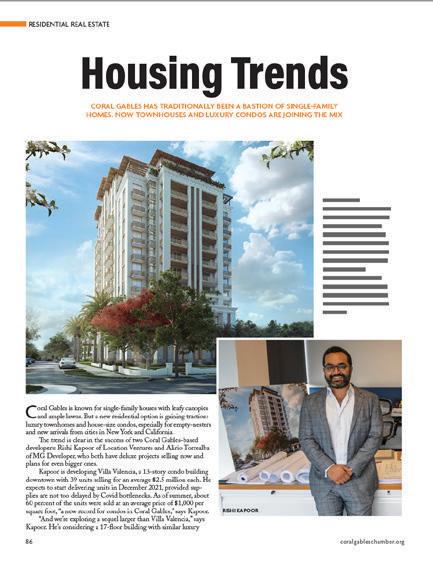
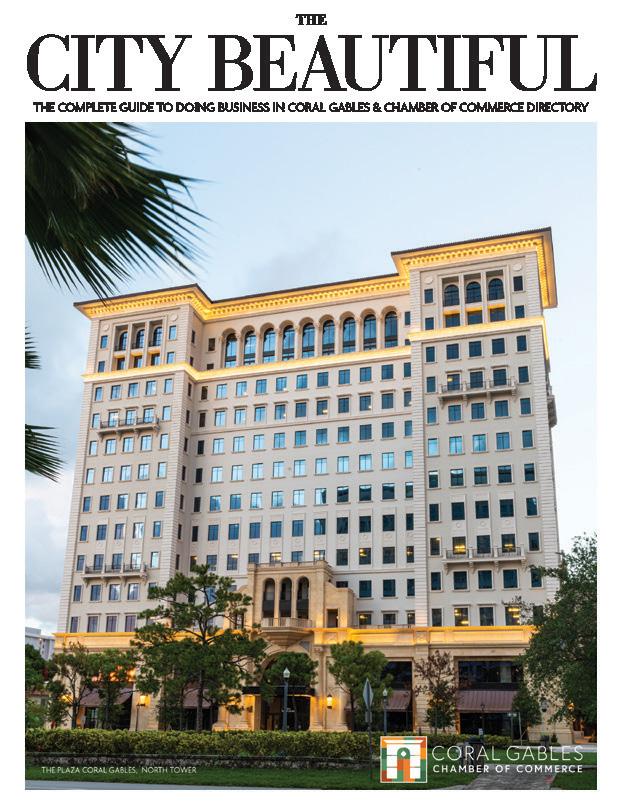
Well
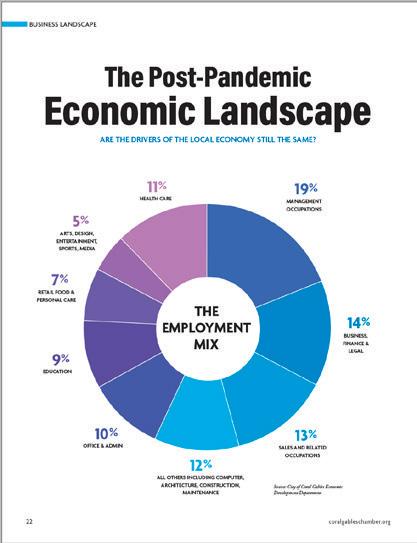
With the mantra “full belly, happy heart,” Well Fed strives to make its customers exactly that. Tequeños, empanadas, arepas, and croquettes abound on a menu that drizzles every dish in Latin flavors. Venezuelan Chef Federico
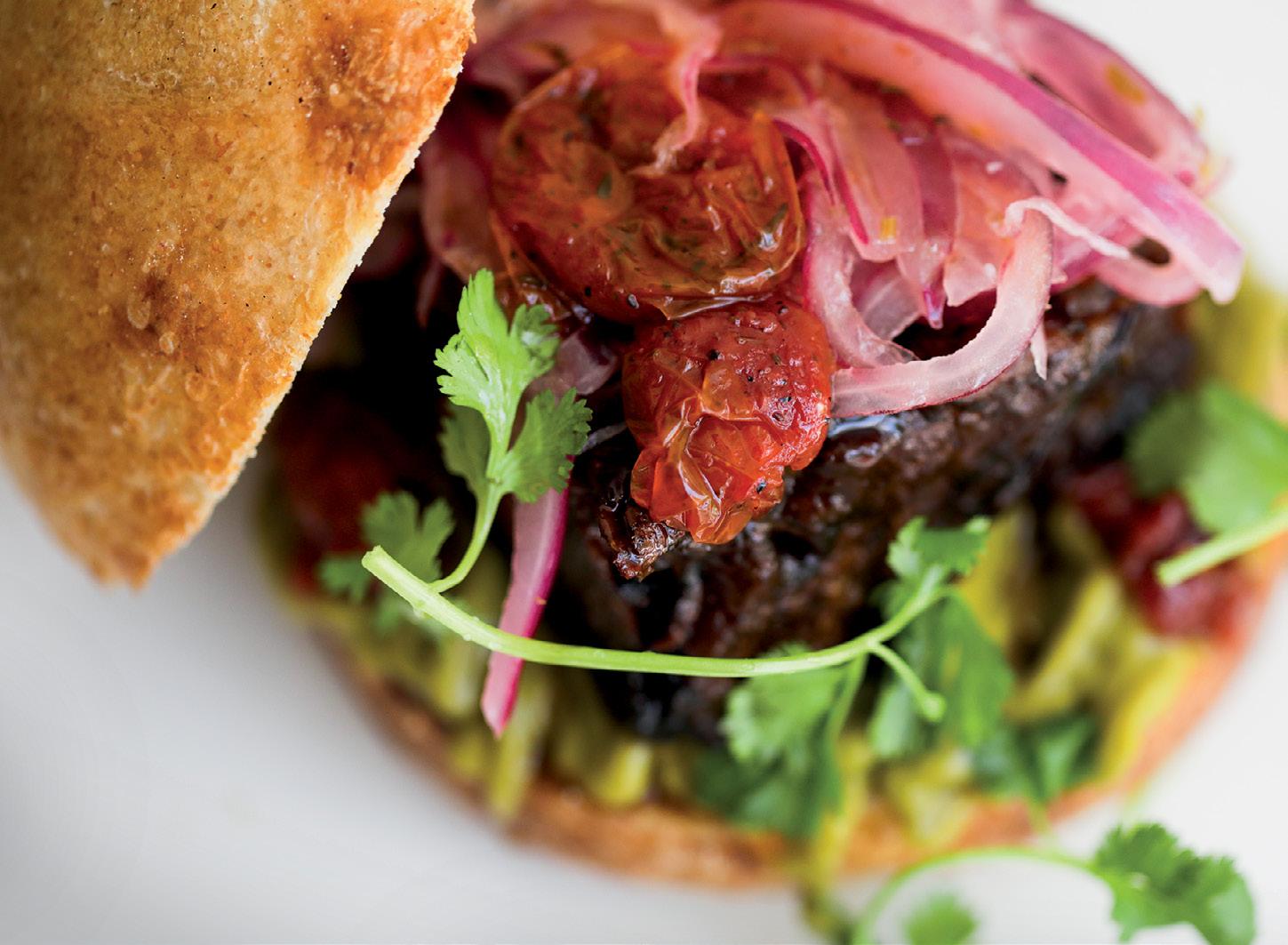
Tischler is determined to bring new tastes to the table, such as his squid in a spicy orange-tomato sauces, or his toasted cassava bread served with black beans, coconut butter, and green onions for $5 each at happy hour. $$ 271 Miracle Mile. 786.580.3795
Xochimex
Cornering a market that certainly hasn’t lived up to its full potential in Coral Gables, Xochimex is Mexican food (Tex-Mex, to be specific) at a far cheaper price point than Coyo Taco, Maia, or Talavera. Made to order, all the food is freshly prepared in front of you and packed
with flavor, including burritos, tacos, quesadillas, rice bowls, salads, and nachos. $ 2209 Ponce de Leon Blvd. 786.401.6437
Zitz Sum
Brought to you by Chef Pablo Zitzmann of No Name Chinese fame, this “pop up” restaurant
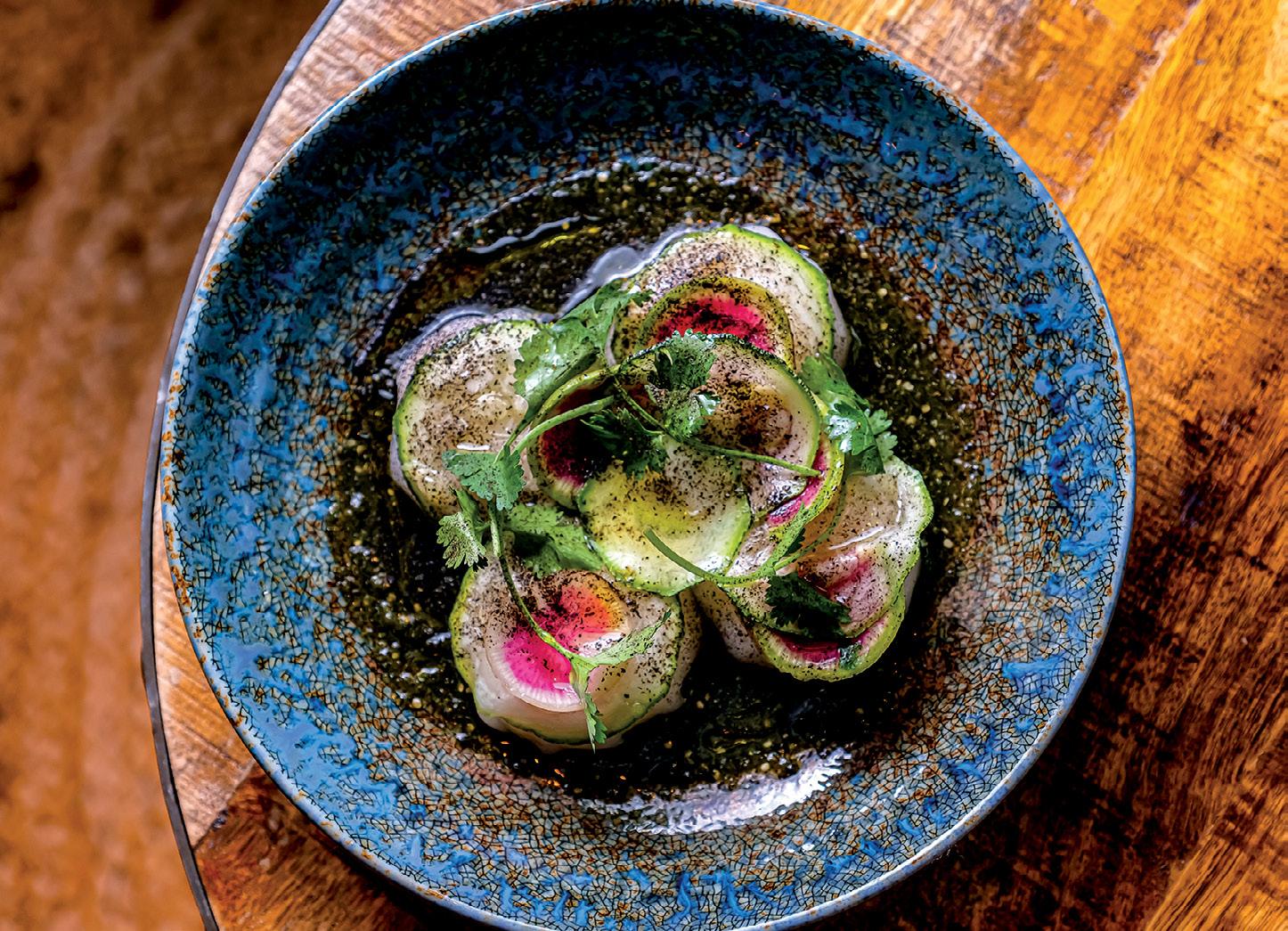





786.409.6920

Chevre Market, 2728 Ponce de Leon Blvd.
Don Flavio Pizza, 70 Miracle Mile

Dickey’s BBQ, 374 Miracle Mile
Dolores But You Can Call Me Lolita. 382384 Miracle Mile
Il Duomo Dei Sapori Miami, 2312 Ponce de Leon
John Martin’s Irish Pub, 253 Miracle Mile

Kaia Greek Restaurant, 232 Miracle Mile
Naked Farmer, 137 Giralda Ave.
Nomada, 384 Miracle Mile
Pisco y Nazca, 101 Miracle Mile
Pura Vida, 244 Miracle Mile
Pretty in Pink, 177 Giralda Ave.
Sobe Vegan, 175 Giralda Ave.
Sweet Paris, Plaza Project
Talavera (Re-opening), 2299 Ponce de Leon Blvd.
Walnut Bistro, 357 Alcazar Avenue
Coral Gables is full of outdoor statues and sculptures. If you know where this bust of José Martí is located, send the answer to editor@coralgablesmagazine.com along with your home address. The first
10 winners will be sent two free passes to the Coral Gables Museum – and have their names published for bragging rights as True Gableites (unless they wish to remain anonymous). Photo by Kylie Wang.
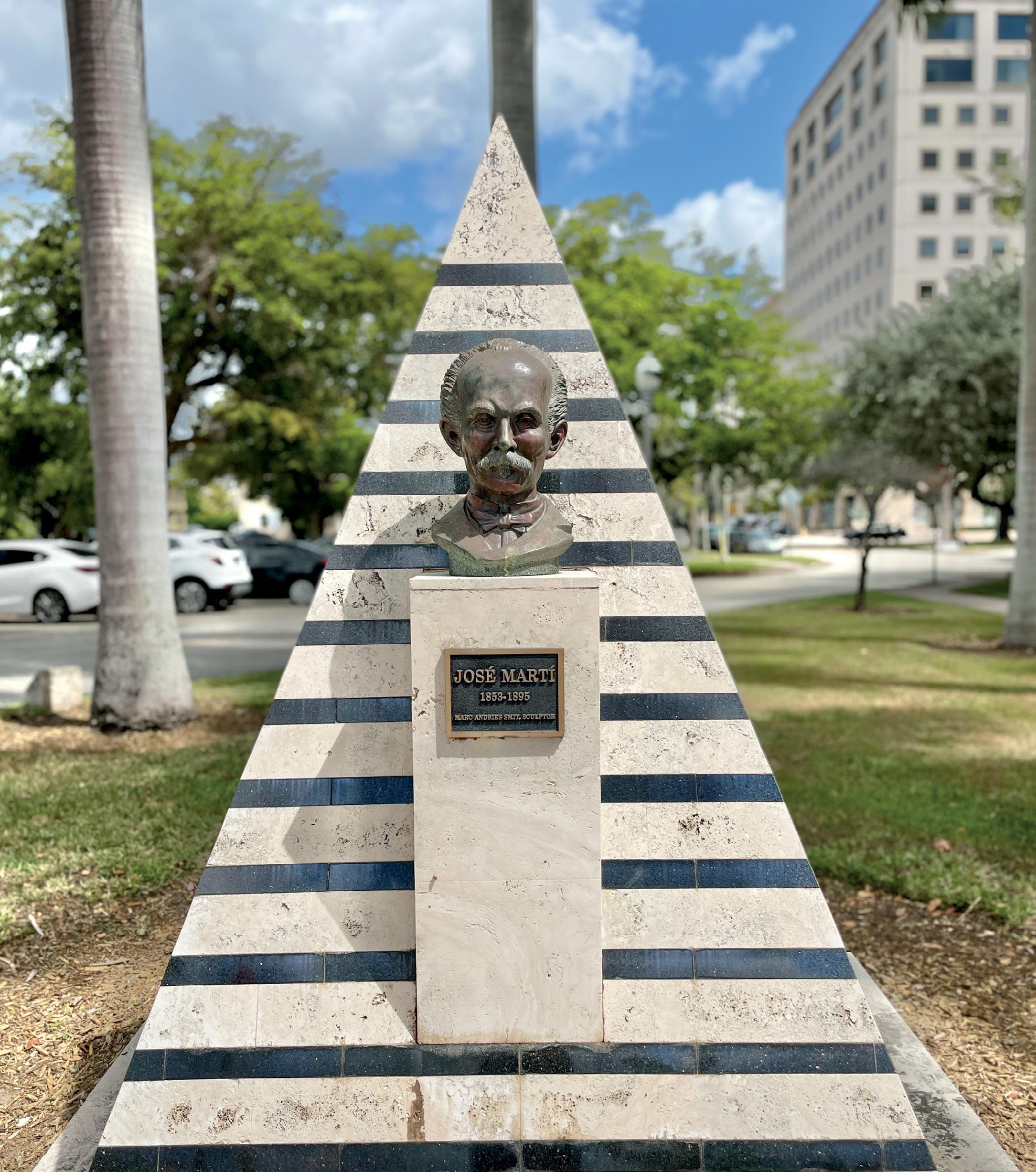





Margaritaville Island Reserve Resorts are all about claiming your license to chill and embracing your inner sense of escapism. With properties located along the gold sandy shores of Cancun and captivating Cap Cana — the Dominican Republic’s most exclusive vacation destination — this guest-favorite resort brand embodies the concept of laid-back luxury.


Both resorts treat guests to phenomenal restaurant concepts that spotlight flavors from around the world, from a traditional steakhouse experience to authentic Old World Italian in an intimate setting. And guests also enjoy the brand’s famous Island Reserve Inclusive ® experience, which includes comfort-enhancing amenities, and so much more.

